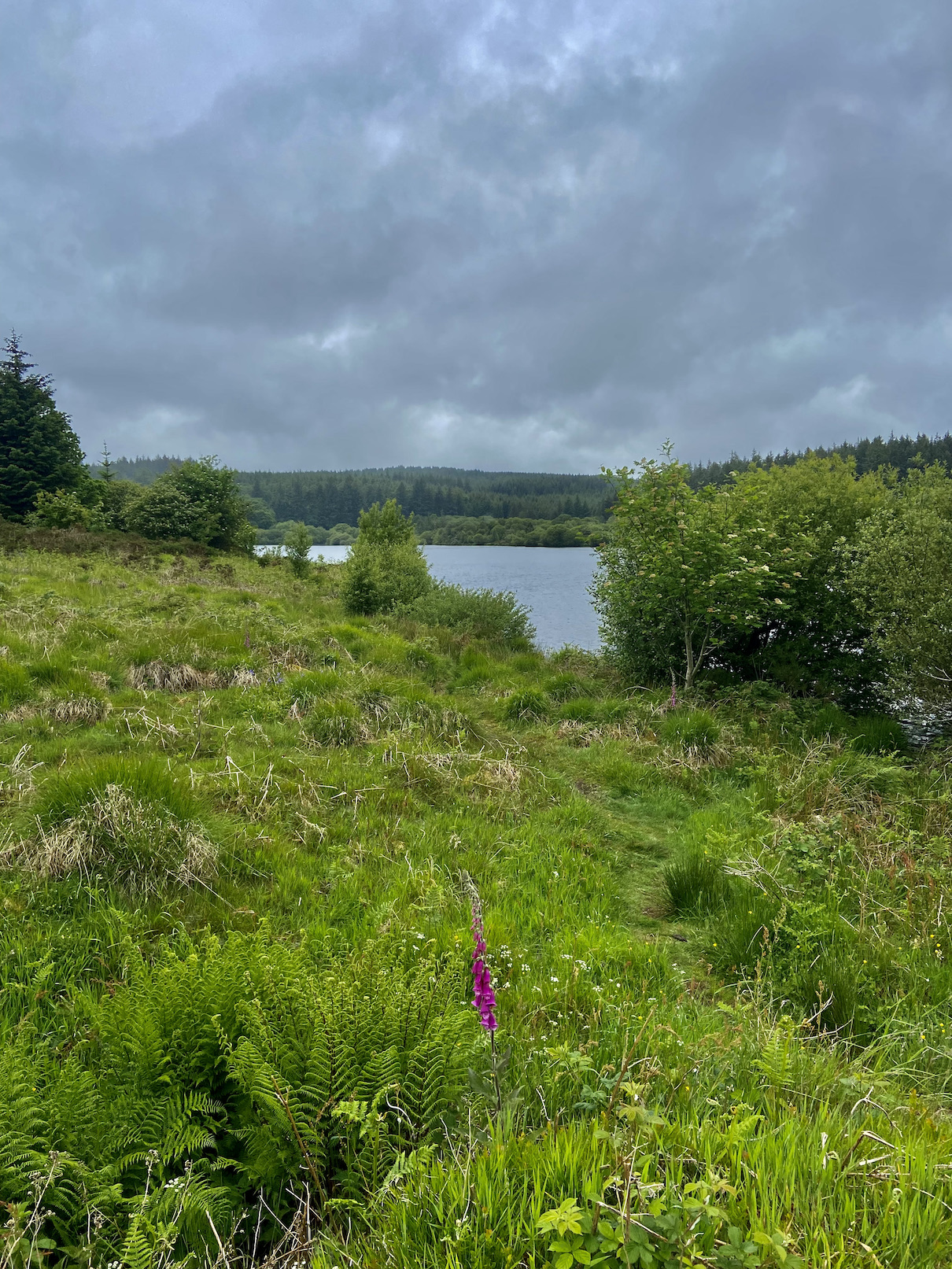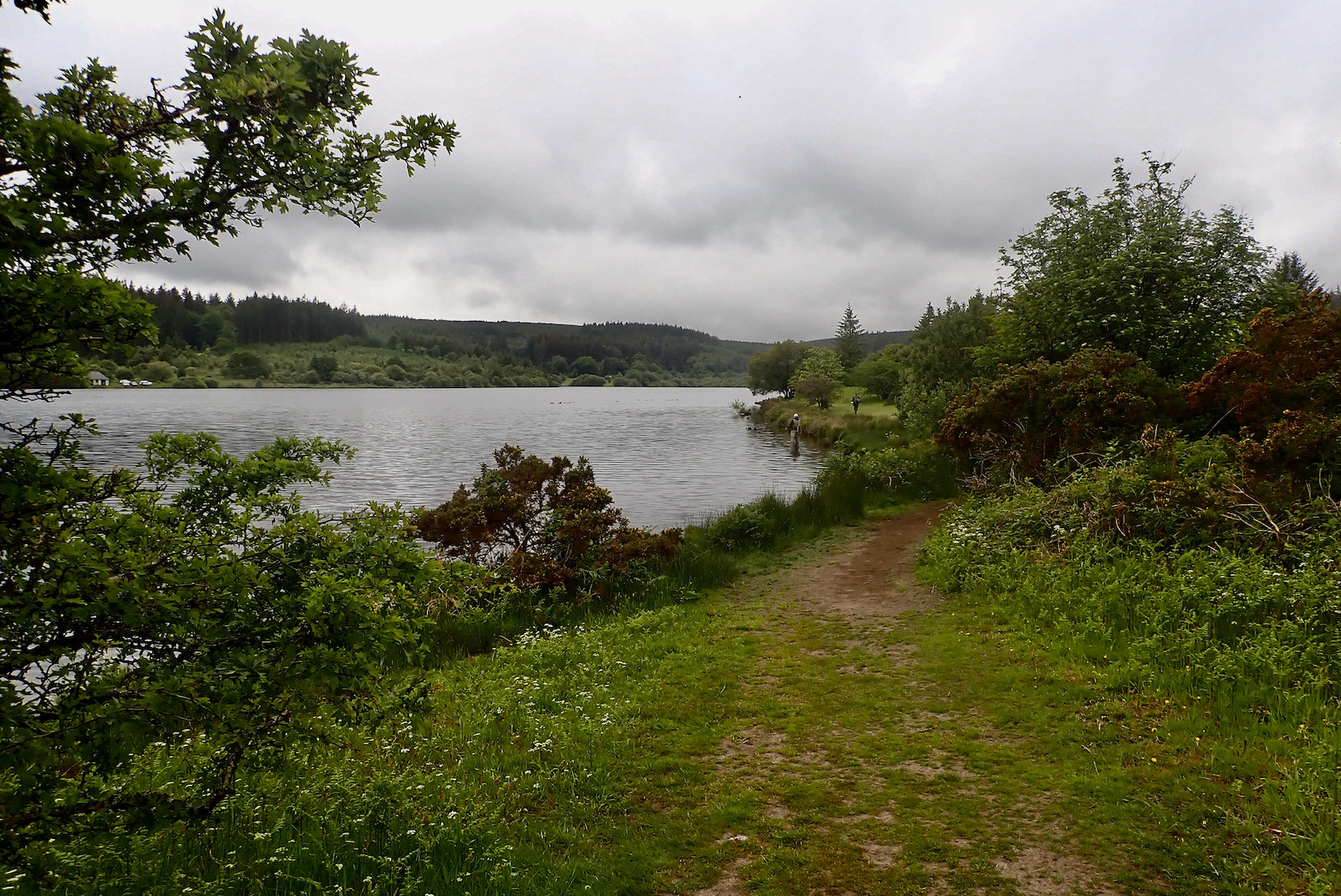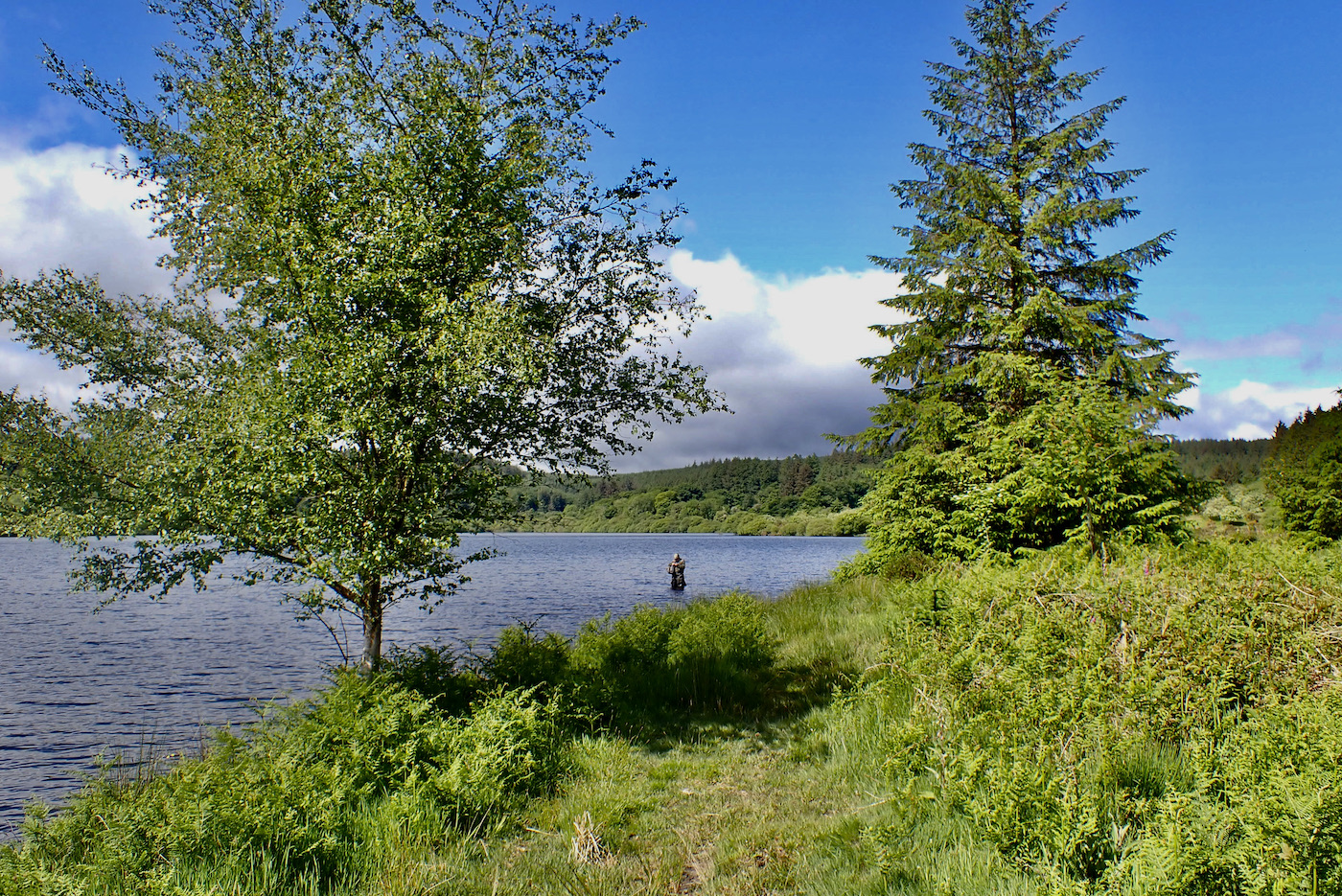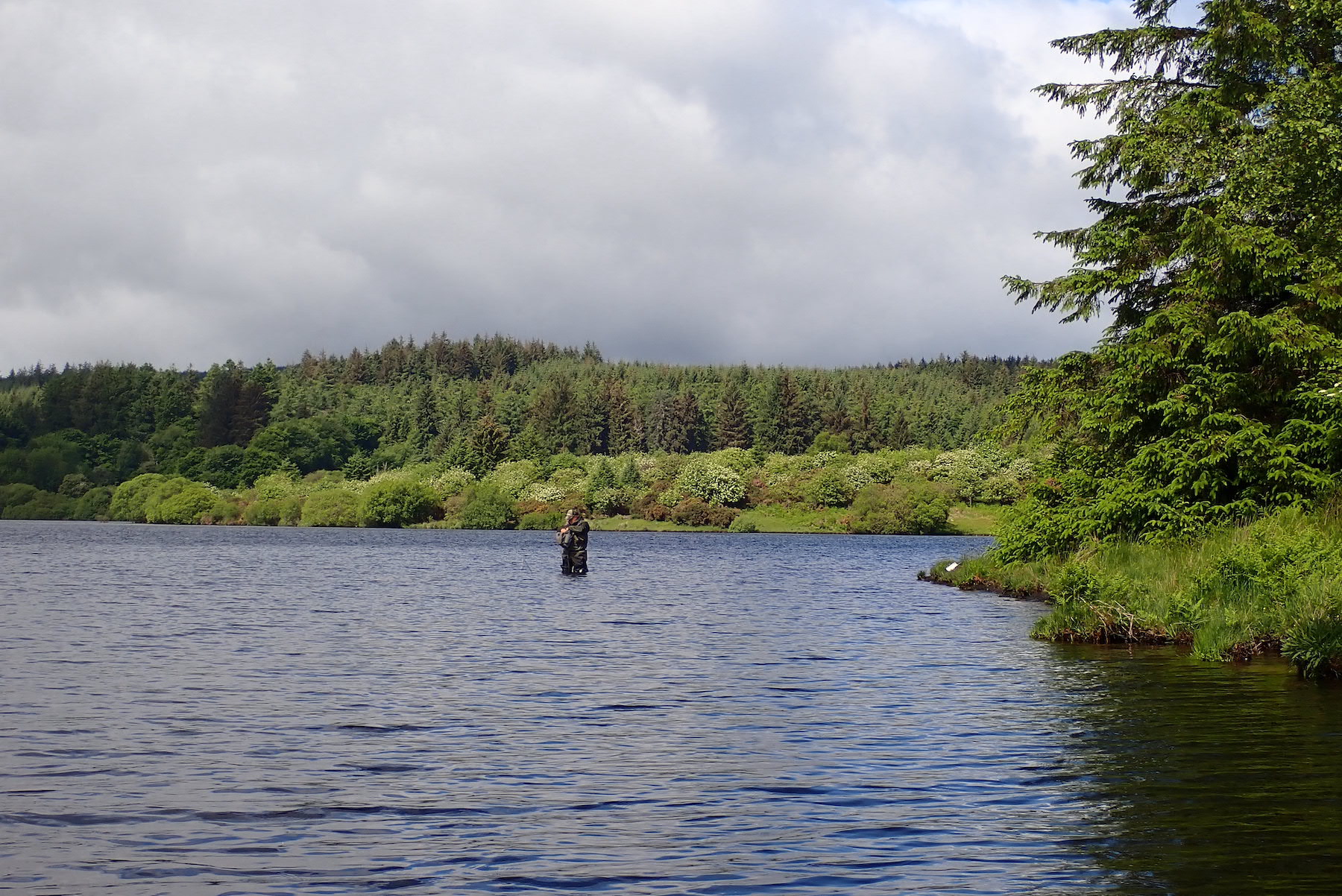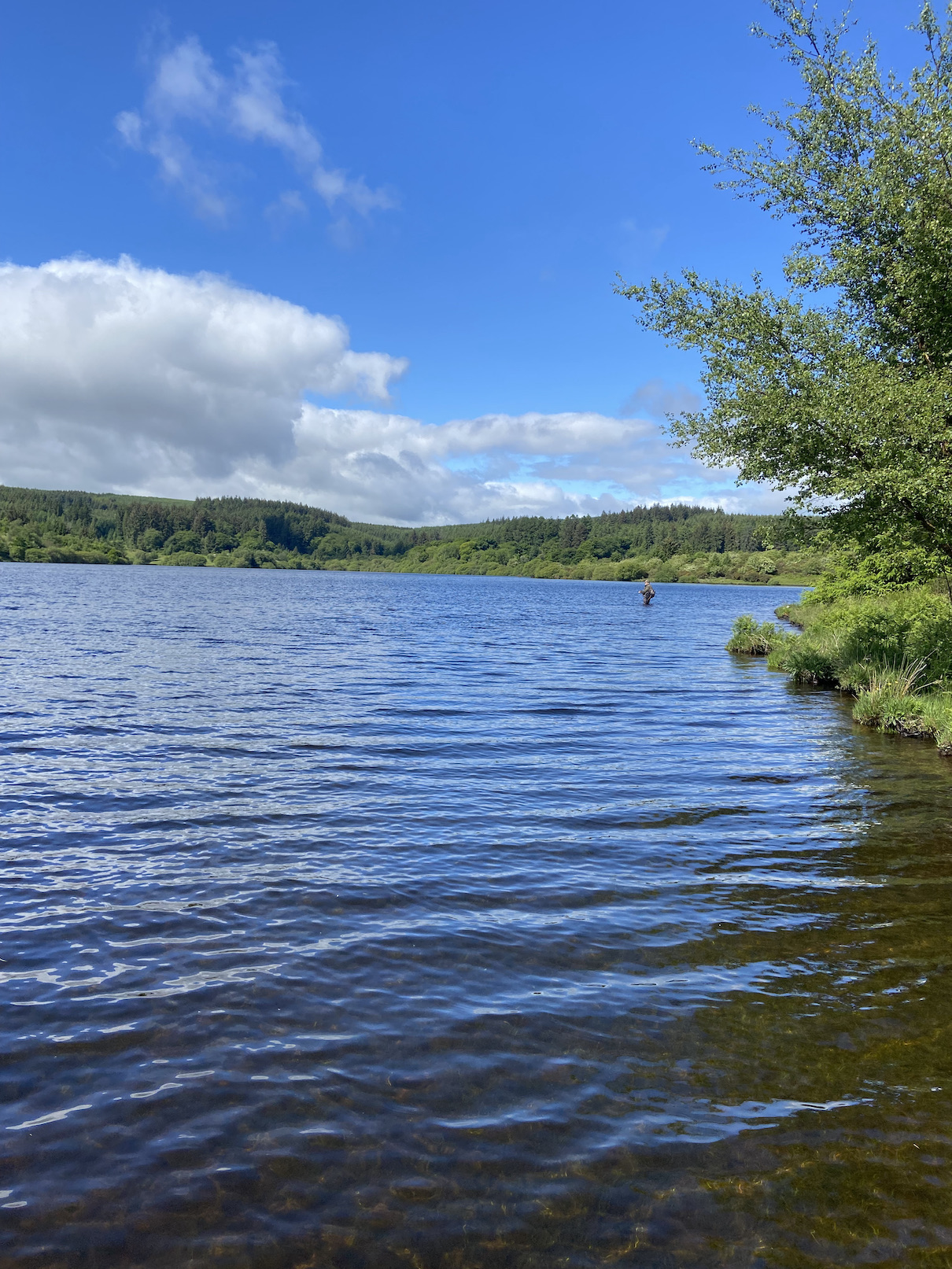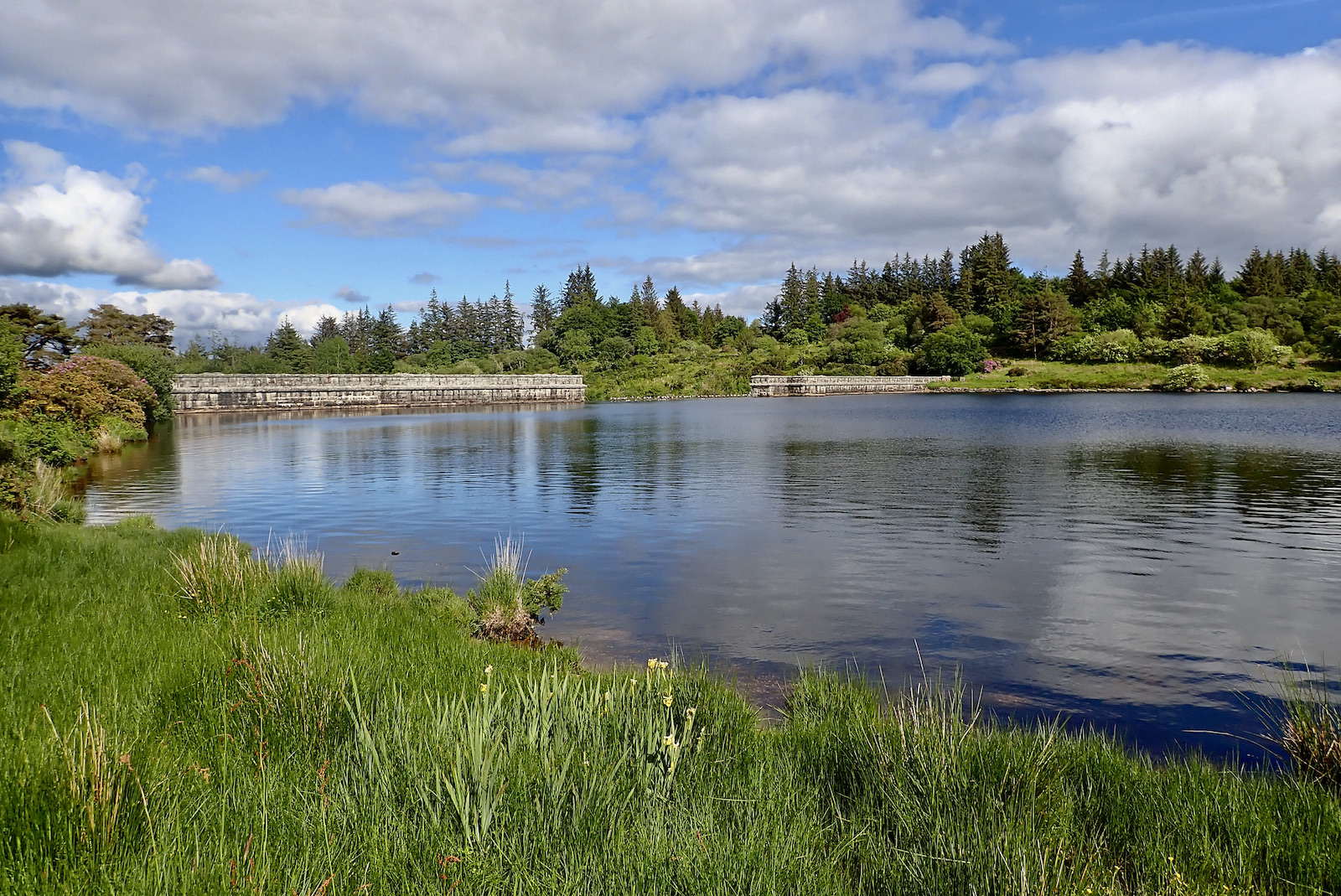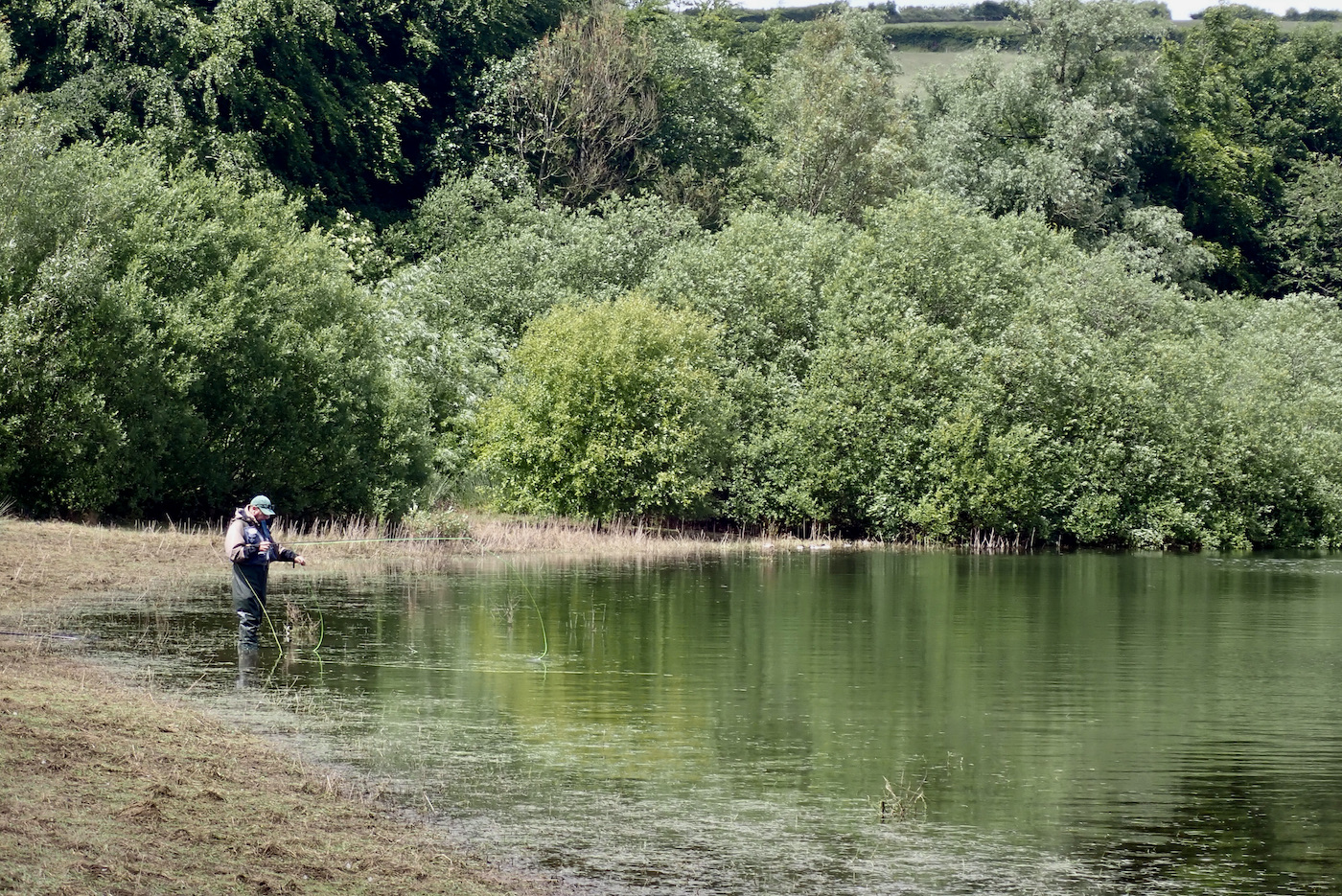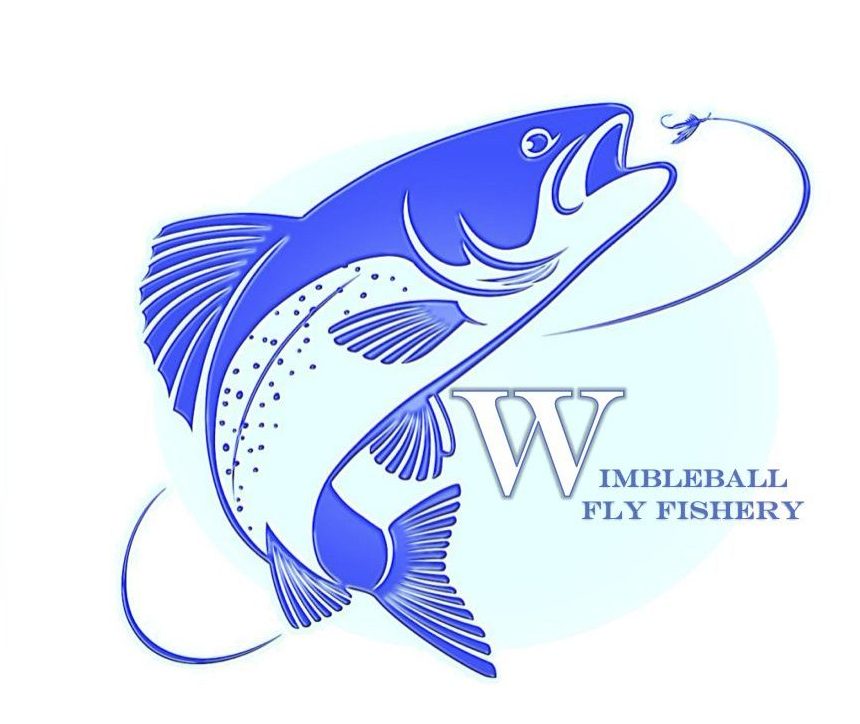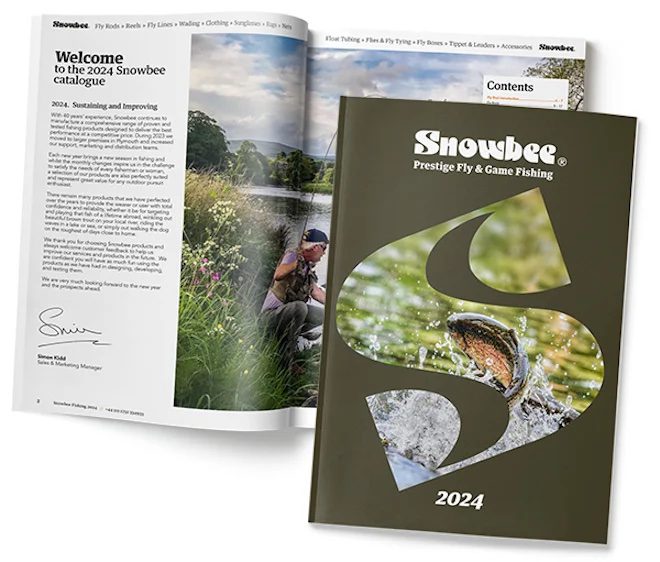Heady June Summer Days |
|
Warm sun, the heady scent of honeysuckle in the hedgerows, the excitement of the first sea trout coming through and it seems those bitter northeast winds of last week have been relegated to nothing but a distant fading memory. Thank goodness summer is finally here!
There has been much excitement after a very successful, slightly windy but warm and balmy day up on the North Devon shoreline, with several well sized sea bass caught. Slightly closer to home on the Lower Lyd, it was the sea trout coming through that had the Fishing Shop buzzing with excitement. A total of 5 were caught last week with the largest coming in at 3 lbs and a couple in at 2.5 lbs. More generally, on the rivers there are still plenty of hatches to be found and when they come it can be fantastic with some 20 wild brown trout caught in just a couple of hours.
The Arundell gardens are now well and truly in their full June glory. Rambling pink roses, the delicate green of the euphorbia, the exotic aroma of the yellow yarrow and the occasional bright flash of the lupins. An English country garden at its best and its wonderful to see the Afternoon Teas on the terrace are in full swing!
For those with young children, don’t forget that on the last two Saturdays in July (20th & 27th) and most Saturdays in August (3rd, 10th, 24th & 31st) we will be offering our 1 hr introduction to fly fishing lessons down at the lake. Booking essential. |
WIMBLEBALL – EXMOOR RAINBOWS
I enjoyed a day at Wimbleball catching up with some good mates for an annual get together. Whilst fishing wasn’t top of the agenda the lakes hard fighting rainbows put a serious bend in our rods. A superb full finned rainbow of 5lb 1oz that took me to the backing after taking a black foam hopper was the highlight of the fishing day. The sight of the fish slurping in the fly in a leisurely roll and then stripping line from the reel in a blistering run before leaping from the lake is one of those enduring memories from a summer day of sunshine and heavy showers.
Wimbleball offers superb fishing with hard fighting rainbows and wild browns. Its large expanse of crystal clear water nestled within a lush rural landscape makes it must a visit venue. The catch and release option ensures that a full day can be enjoyed.
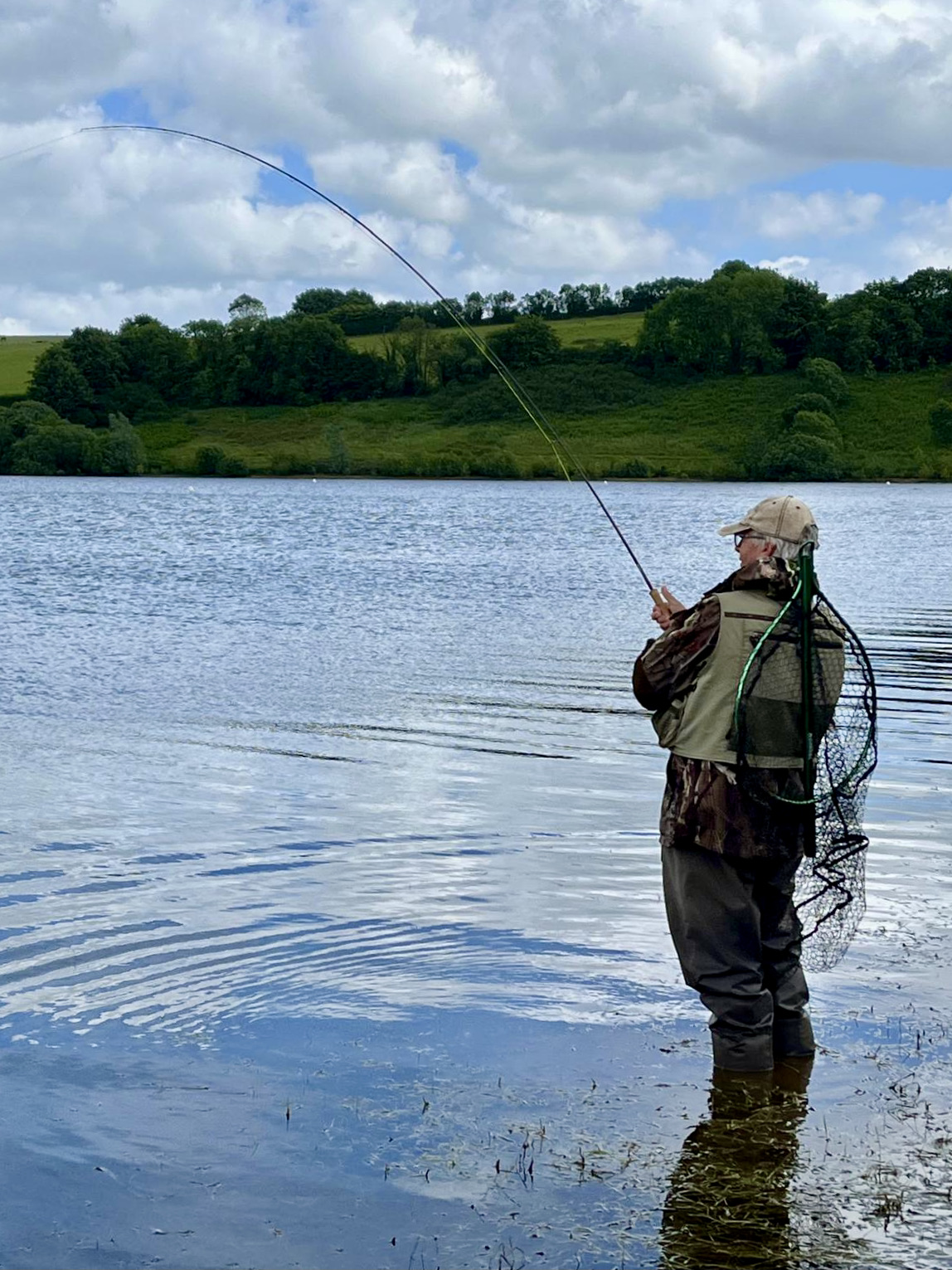
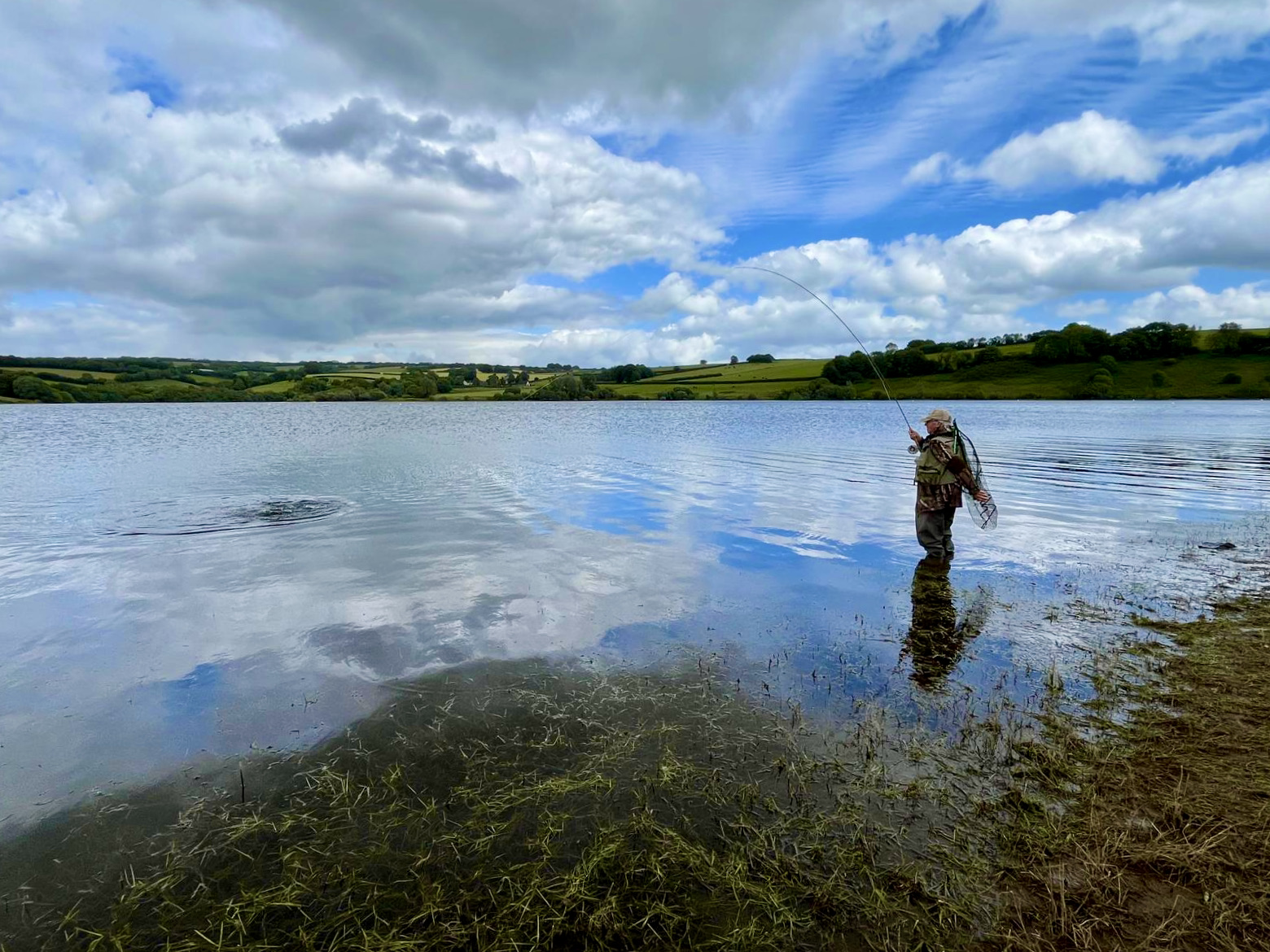
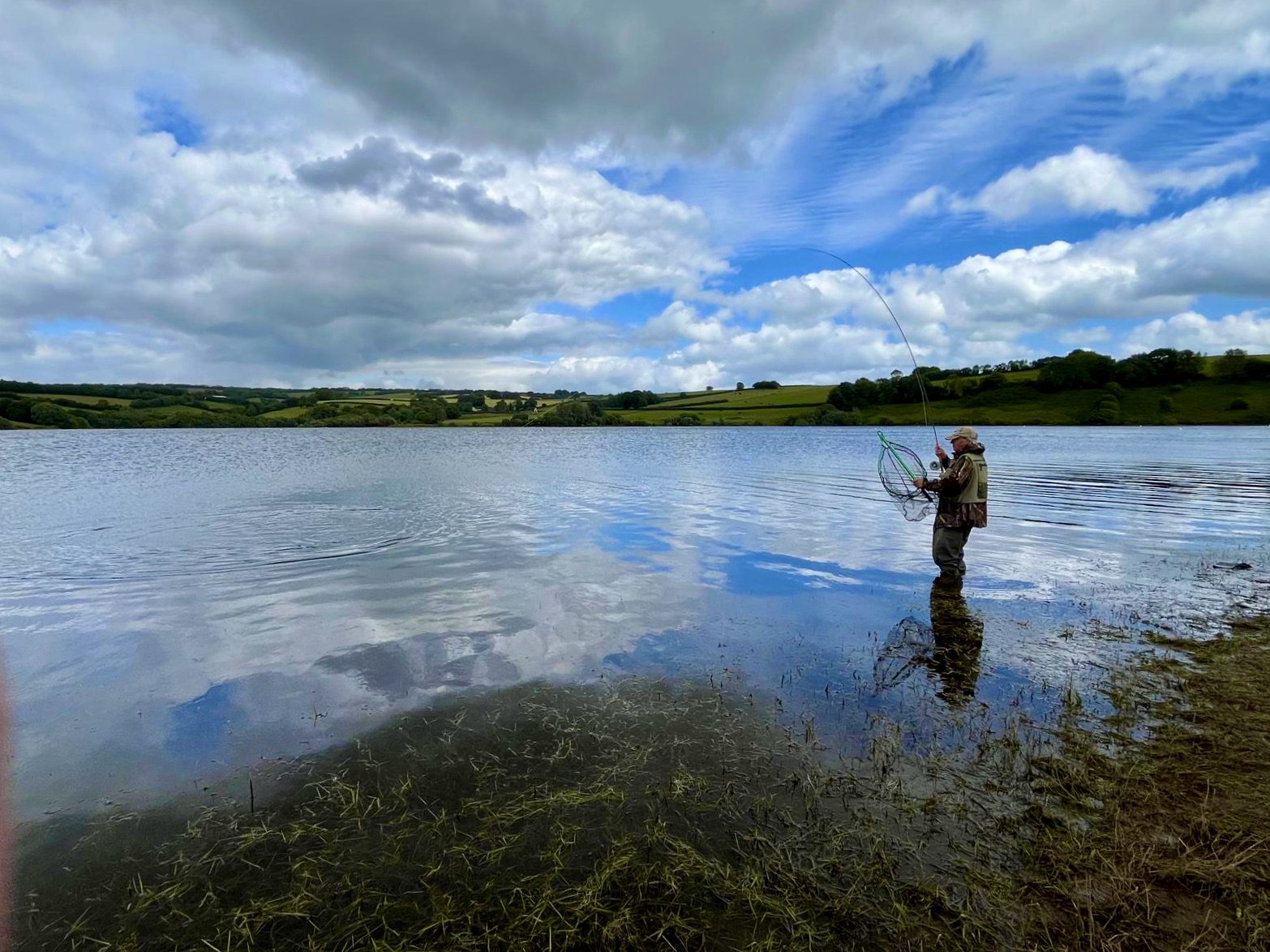
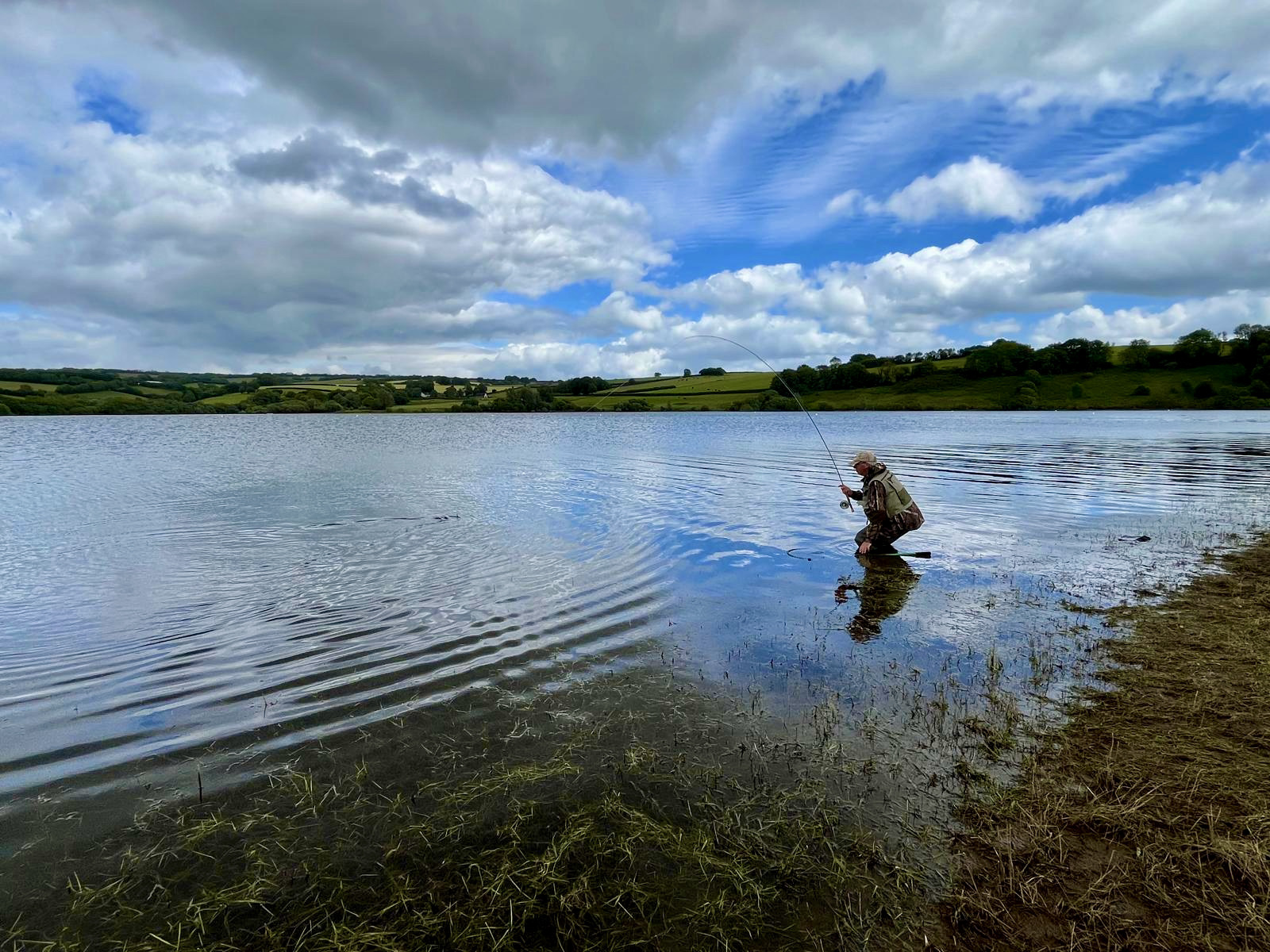
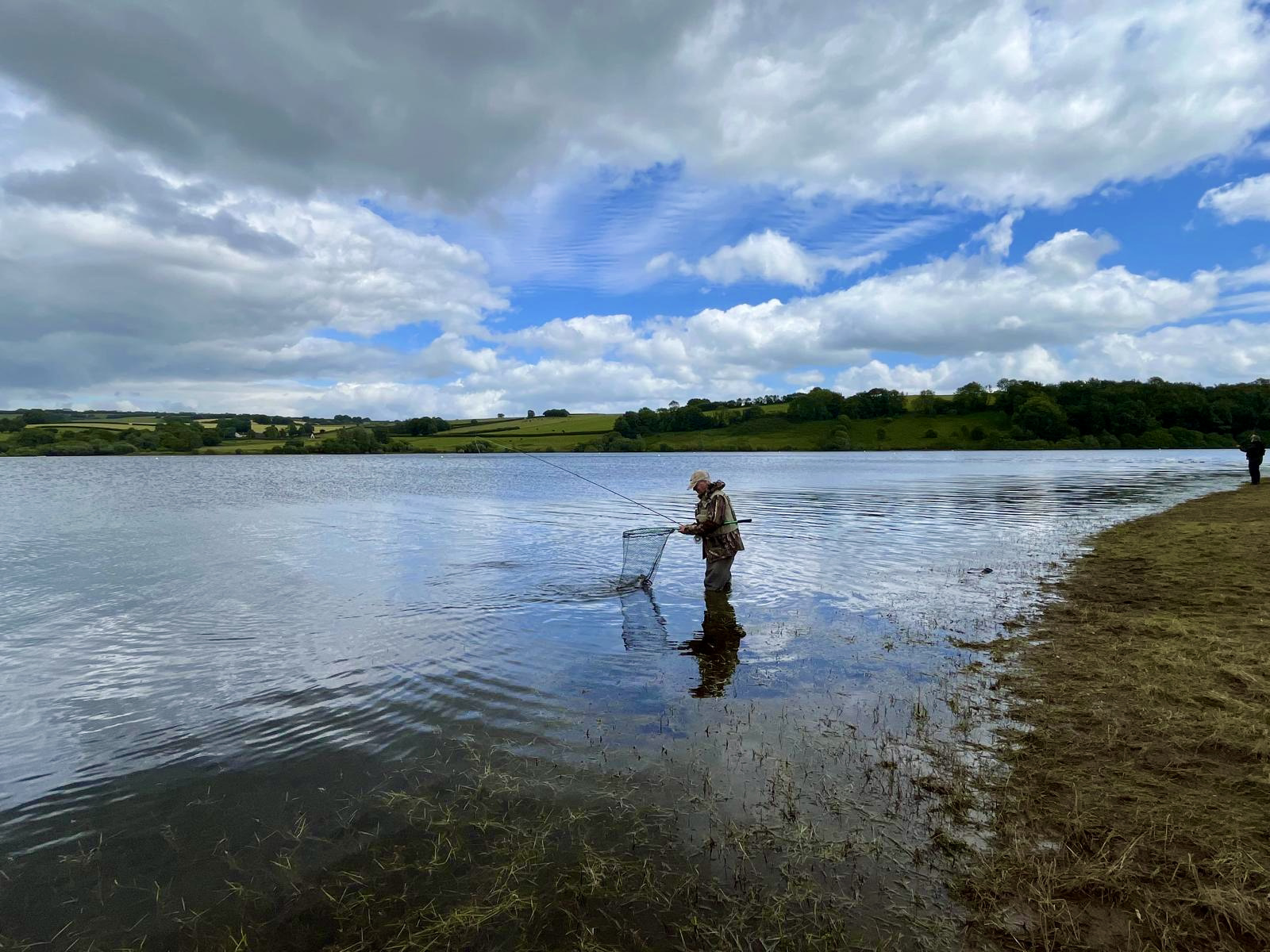
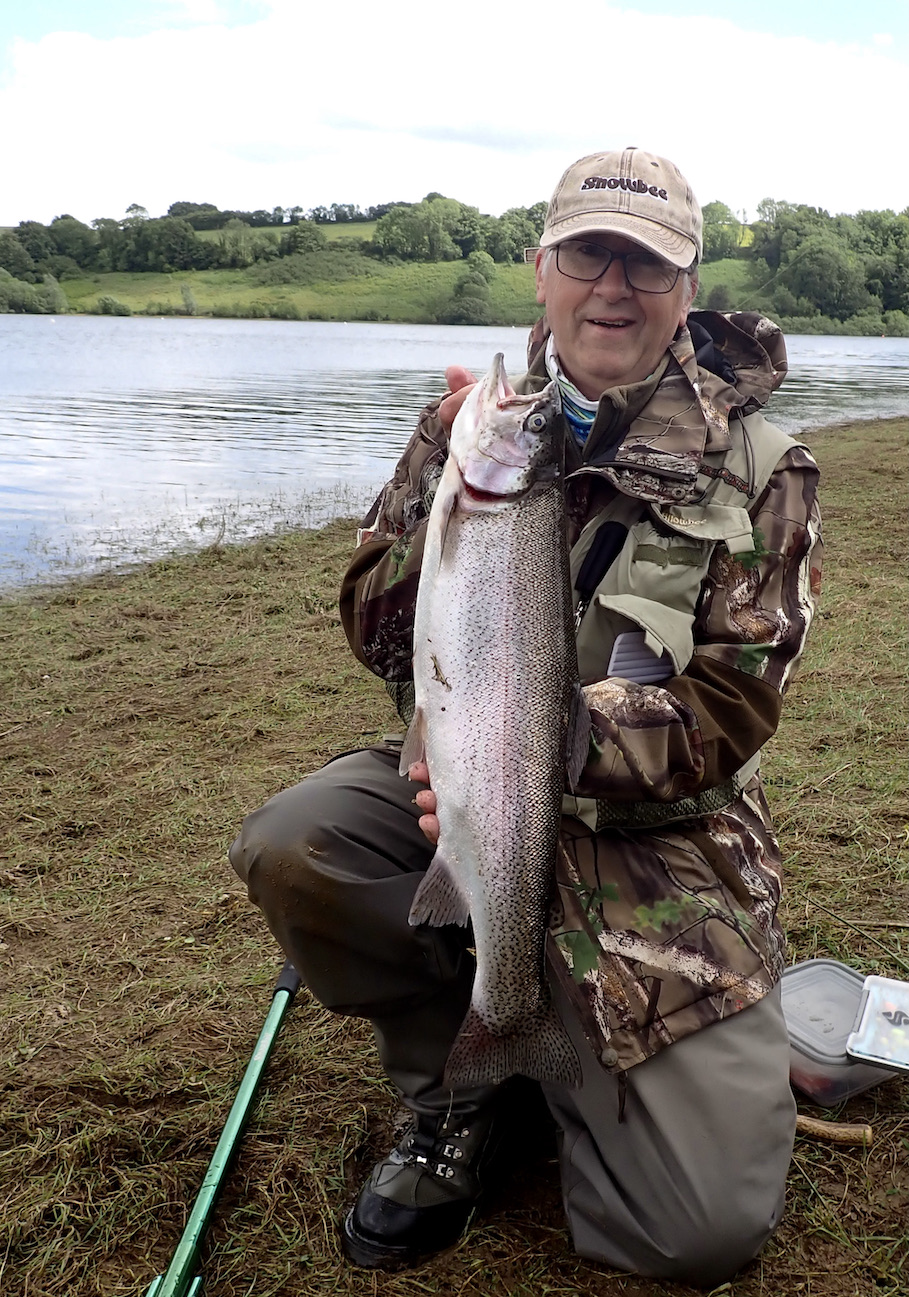

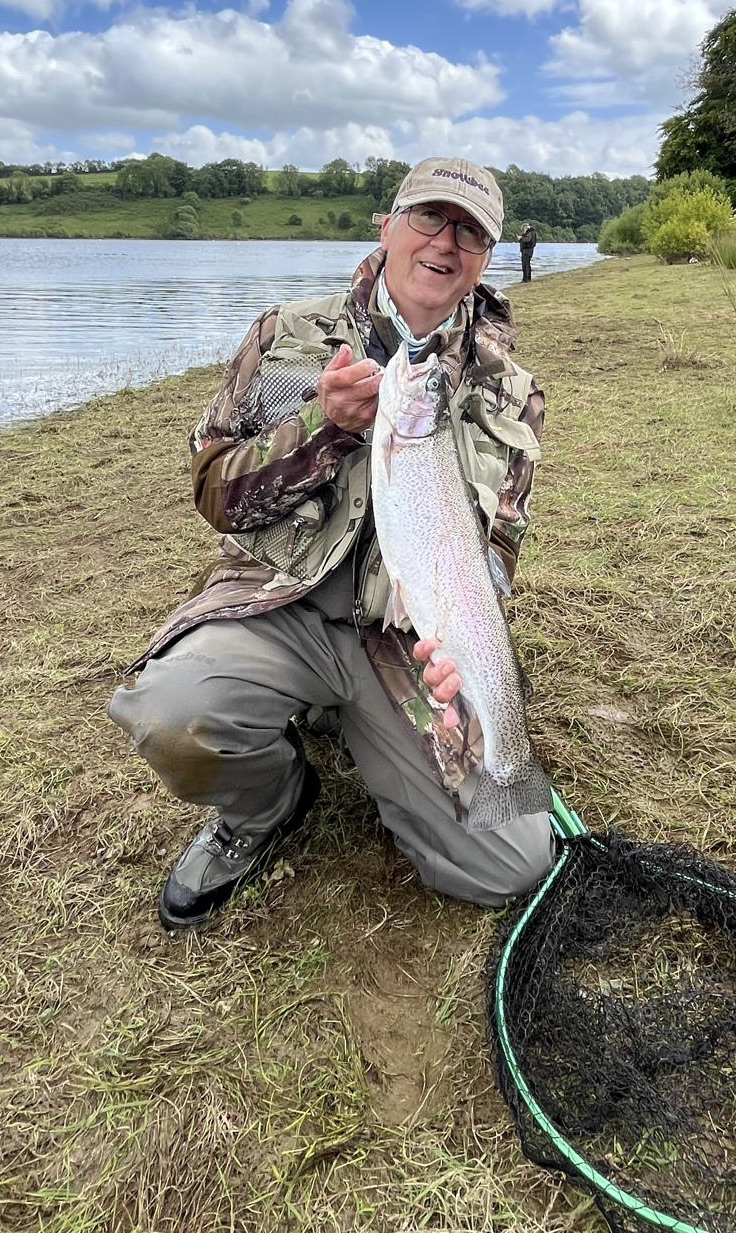
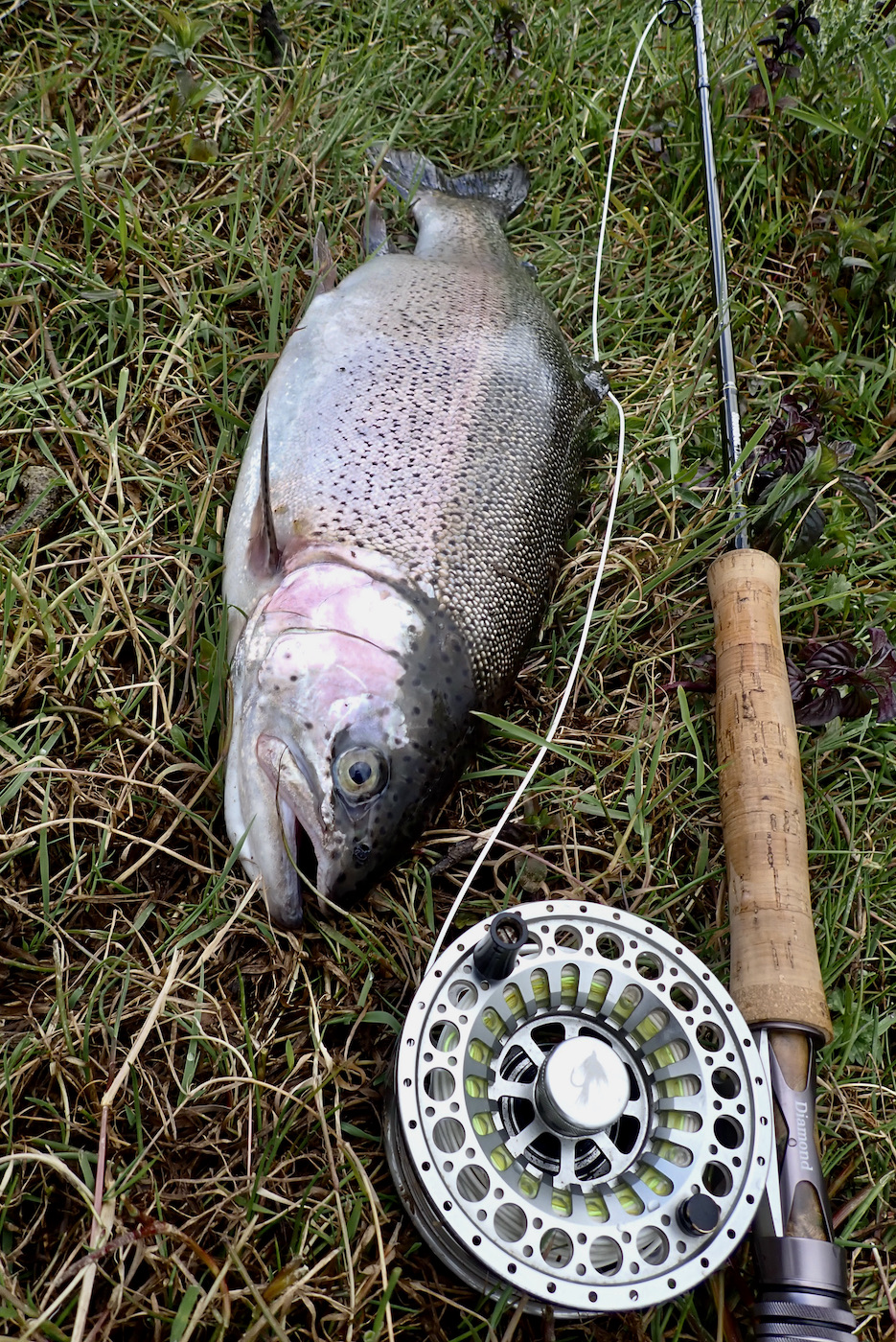
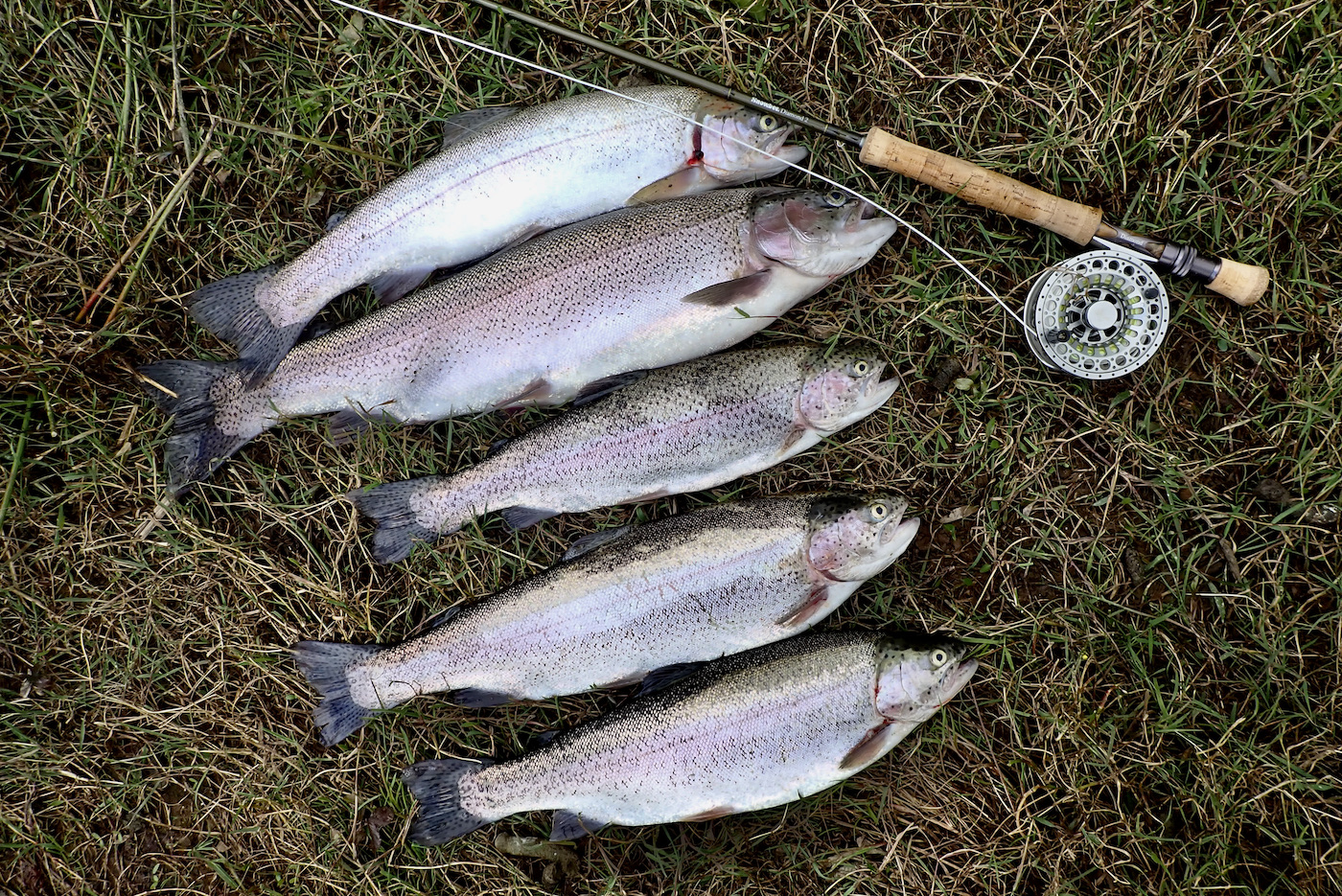
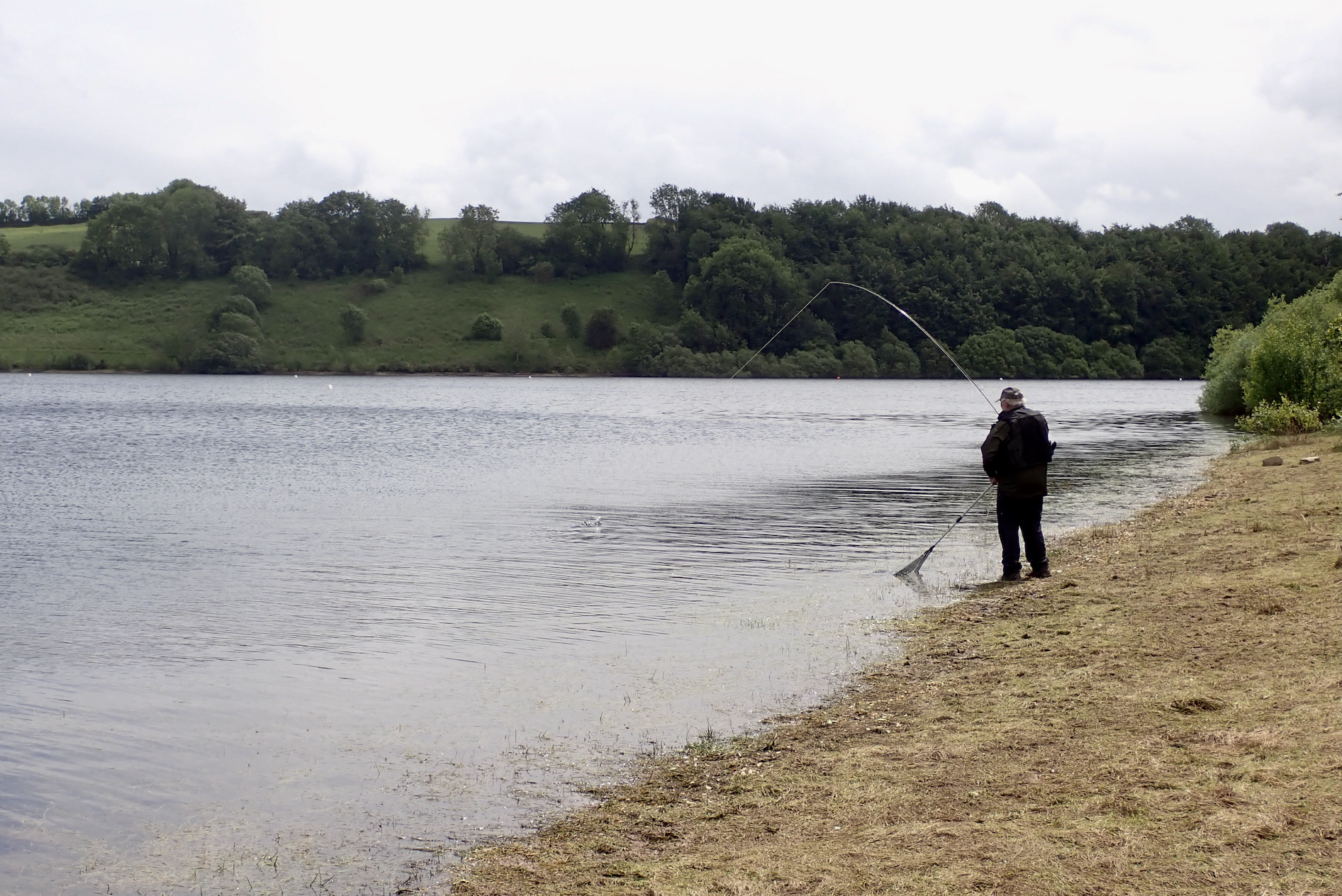
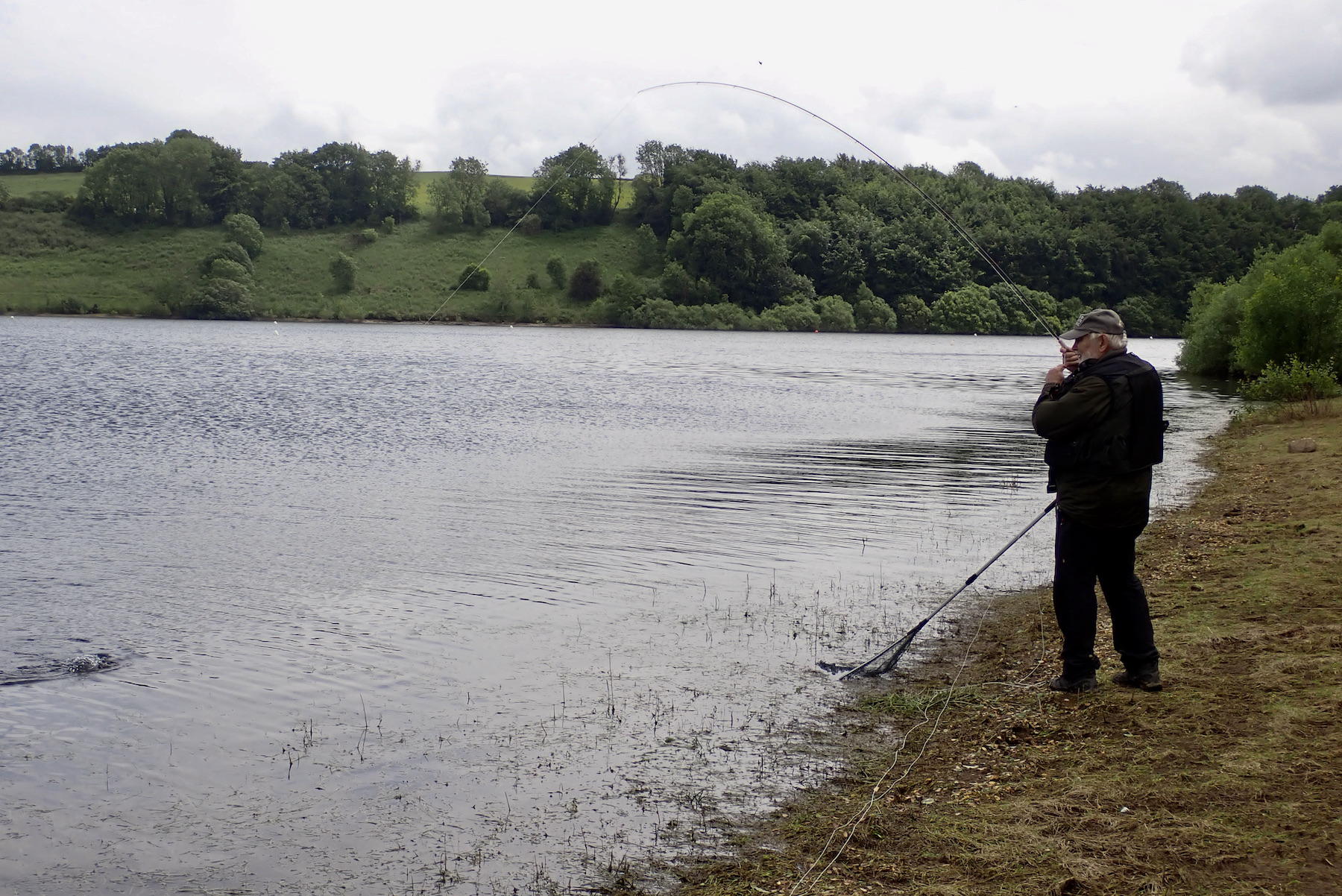
WATER COLOUR – OPPORTUNITY
Not certain if this is open to non-club members but my guess is that a generous bid could seal the deal!
Good morning all anglers!
https://dulvertonanglingassociation.org.uk
—
Lance Nicholson
A new chapter for North Devon’s anglers.
Quay Sports closed on June 14th after trading for close to three years it has been a valuable stop off point for North Devon’s Anglers providing a wide range of tackle for all disciplines. Fortunately the shop manager Chris Connougton is opening a new tackle shop that will ensure that Barnstaple still has that vital ingredient to enable a social hub and source of those essential items of tackle and bait. It is essential that local anglers support this new venture and all other local tackle shops. We are very fortunate to have a range of tackle shops across North Devon a fact that I will promote in the coming weeks.
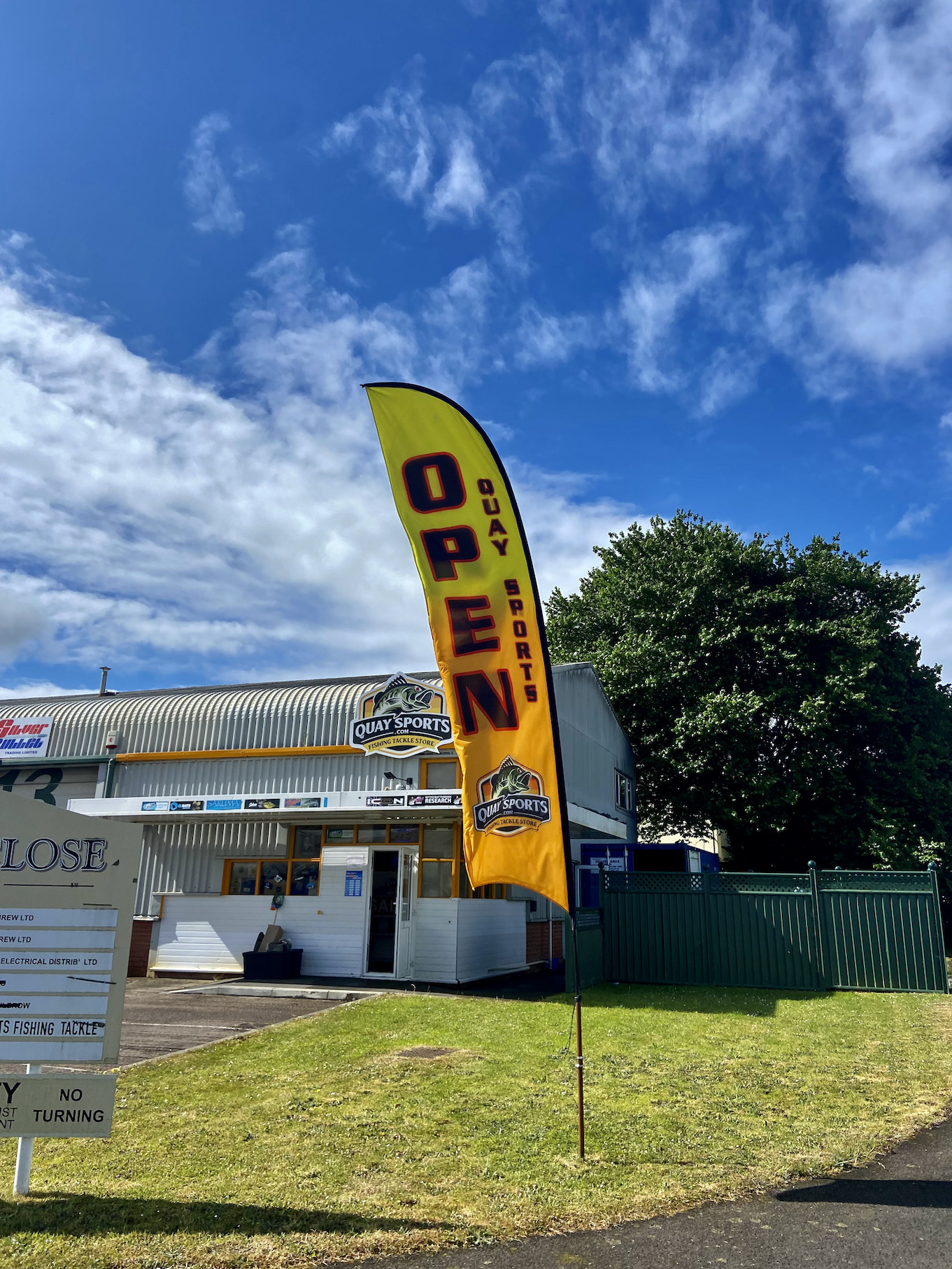
Last day of the shop today. Come and grab yourself some last min bargains. We would also like to say a huge thank you to you all for your support over the last 3 years, we have made some great relationships and friends. We wish Chris all the best for the future with Barnstaple Bait & Tackle and sure will see some of you on the bank.
Quay Sports
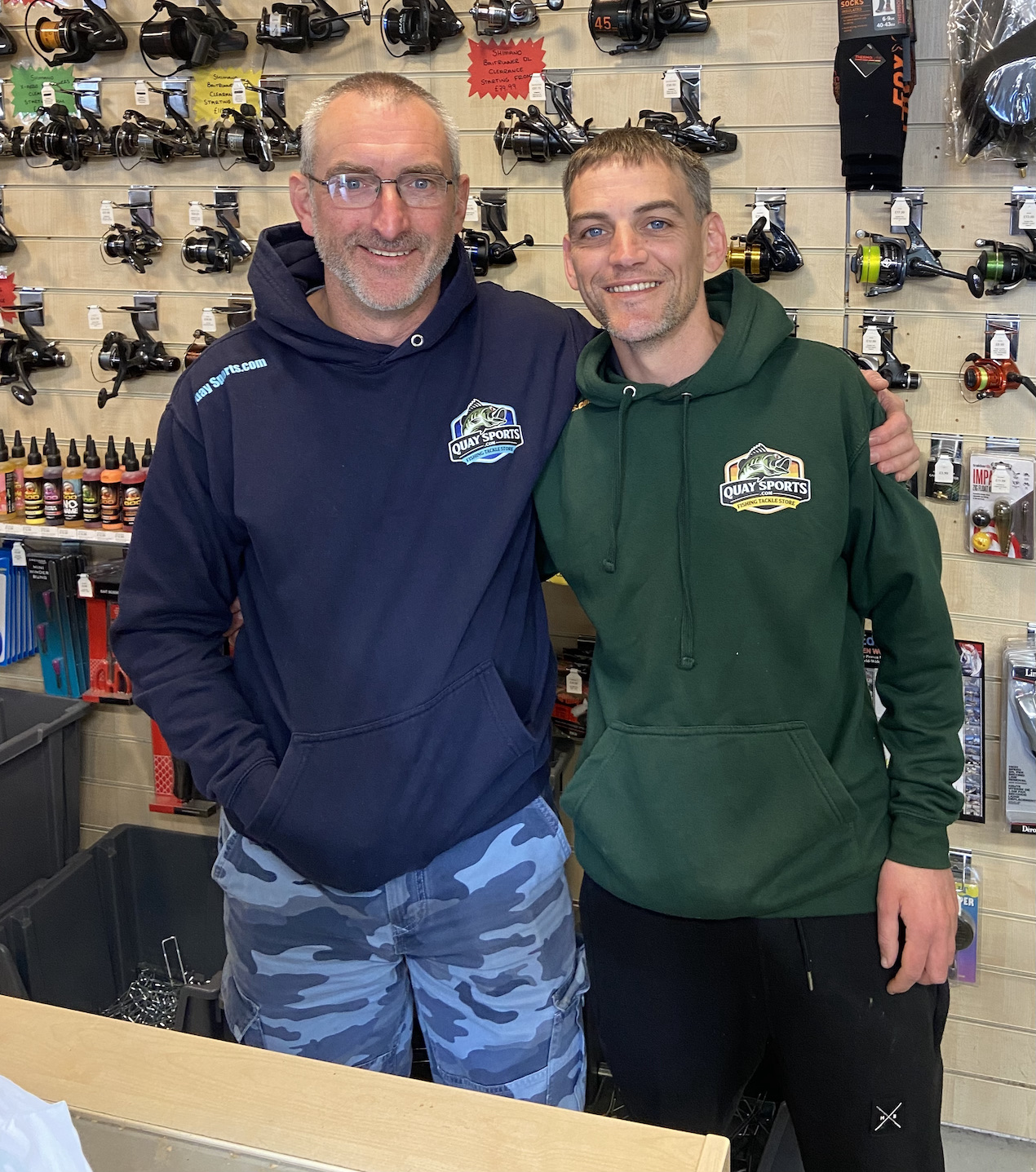
( Above) Mark Potter and Chris Connaughton on their last day at Quay Sports

SHADY STREAMS & WILD TROUT
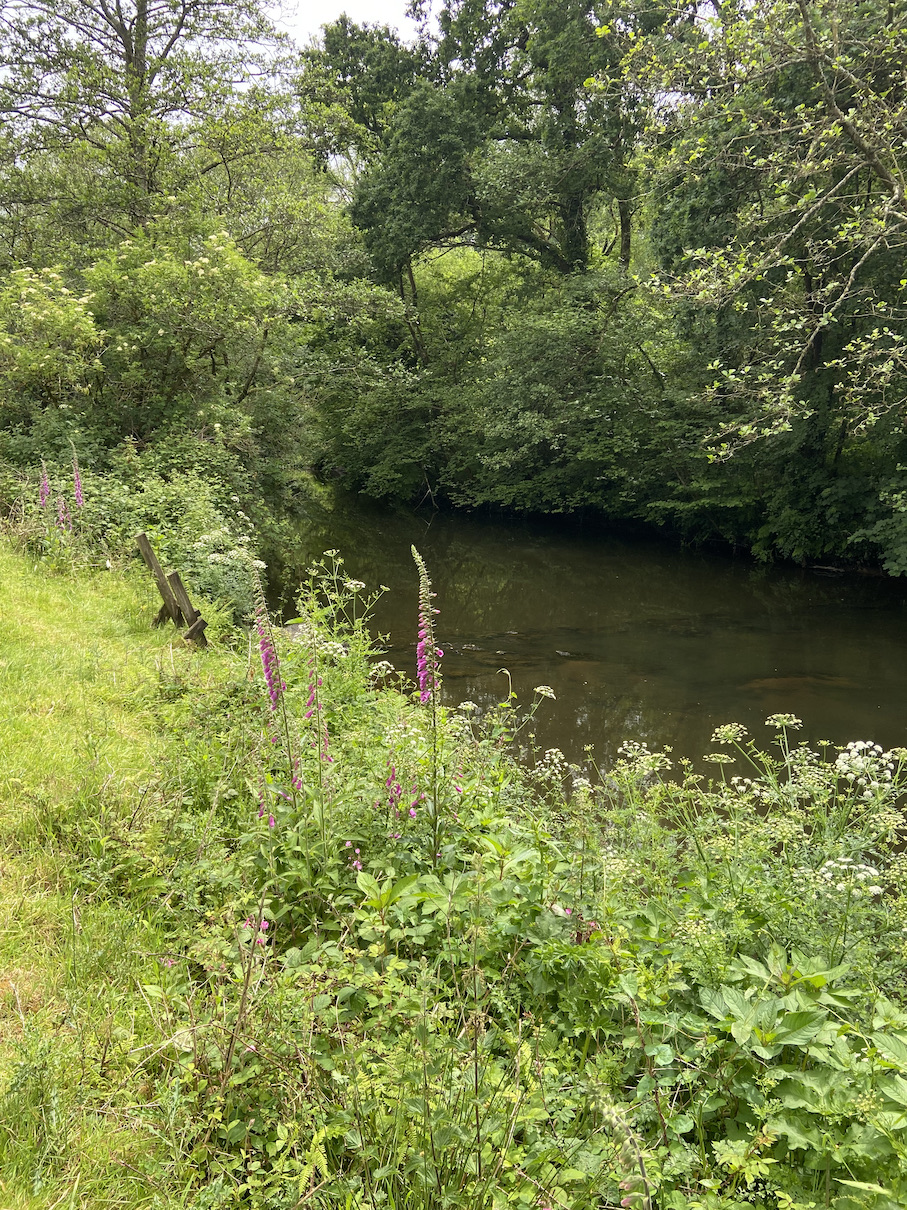
As the year races past it is essential to ensure that plans discussed at the start of the season get acted upon. At the Roadford Fly Fair at the end of February I chatted with Luke Bannister about a trip to the river that was discussed further when we met up at the Orvis Outlet Opening at the Arundell Sporting Hotel in March.
https://www.northdevonanglingnews.co.uk/2024/03/21/a-visit-to-the-arundell-arms-at-lifton-a-longstanding-country-hotel-with-a-rich-history-for-shooting-and-fishing/
After a few messages back and forth Luke and I set a day to meet up and fish the Arundell’s water in early June. We arranged to meet at the Arundell at 9:30am where we could meet up with David Pilkington who would allocate a beat for the day and give valuable advice.
The Arundell has over twenty miles of fishing on the Tamar and its tributaries with an abundance of wild brown trout fishing along with salmon, sea trout and grayling. It was the wild browns that Luke and I would be targeting and with a few mayfly still showing we hoped for success on the dry fly.
It was very busy when we met up with David Pilkington who had allocated us beat 4 on the River Thrushel a beat I had glimpsed briefly during the visit to in March.
Enjoyment of the day was undoubtedly top of the agenda and Luke and I retreated to the Arundell Deli for a fresh coffee before venturing to the river. There was of course plenty to discuss and Luke didn’t expect the trout to start rising until late morning.

The Arundell is undoubtedly in good hands with the present owners well versed in what their fishing and shooting clientele require to ensure an enjoyable stay. Luke and I both appreciate the value of such sporting hotels to the rural economy and of course to the future of fly fishing. Key to the survival of this is the health of the regions rivers. The declining salmon and sea trout stocks are of concern as is the decline of insect life brought about by the use of insecticides. These issues and others of the wider world were dissected over coffee before setting off for the beat.
The day was bright and sunny with a cool westerly breeze. It is always exciting to explore a new venue and I was fortunate to have Luke’s company as he had fished the beat on previous occasions.
Luke is renowned for his exquisite hand built split cane fly rods, fly boxes and leaders.
https://www.bannisterrods.co.uk
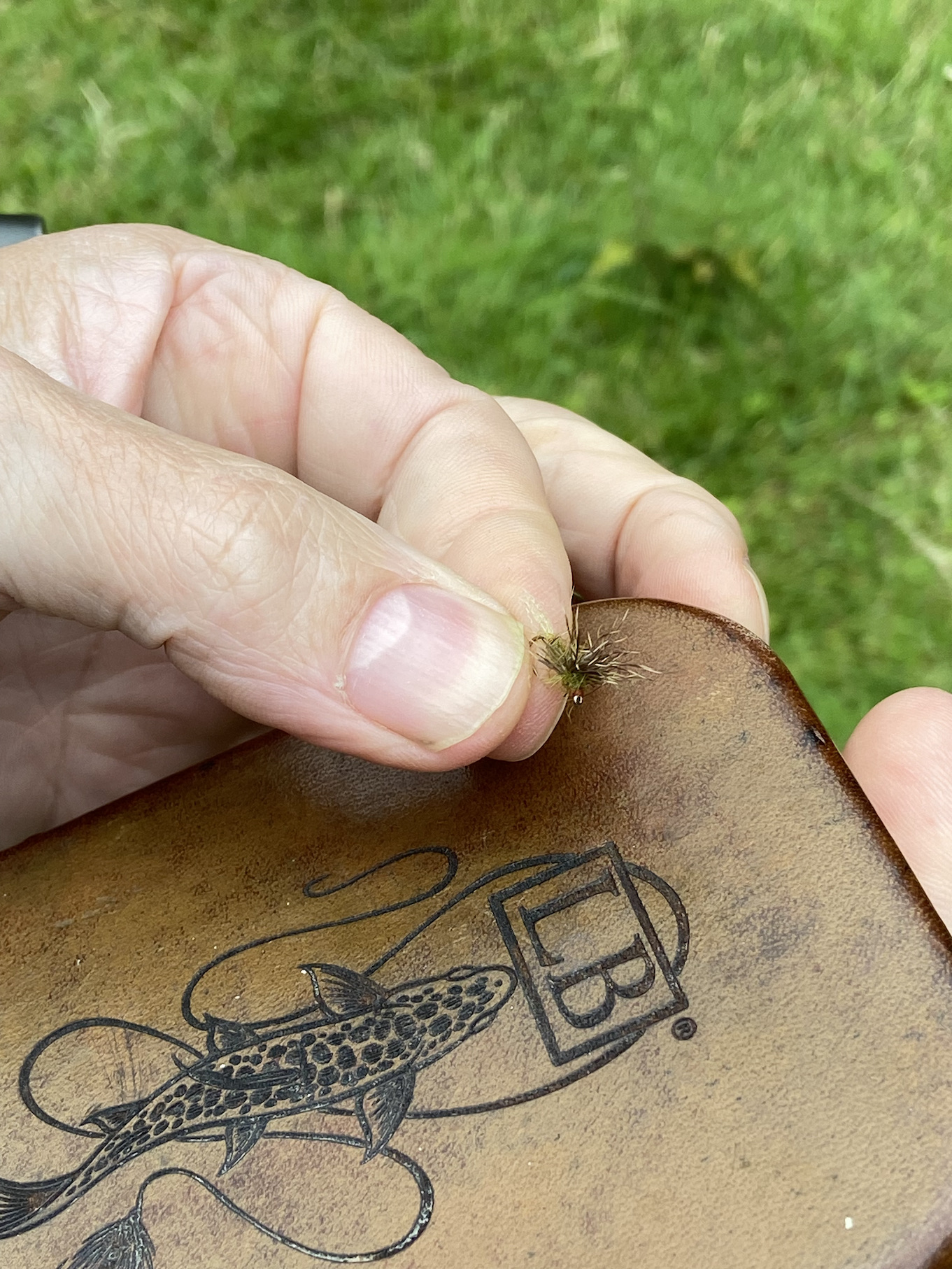
I had intended to discuss rods with Luke but in our keenness to get fishing such discussions didn’t materialise. Luke put together a very pleasing looking 7ft 4 Wt cane wand whilst I took out my 7ft Snowbee Classic Carbon 4wt. Armed with this suitably matched reels, lines and a few flies we set out to the river after looking over the old stone bridge to assess the state of the river.

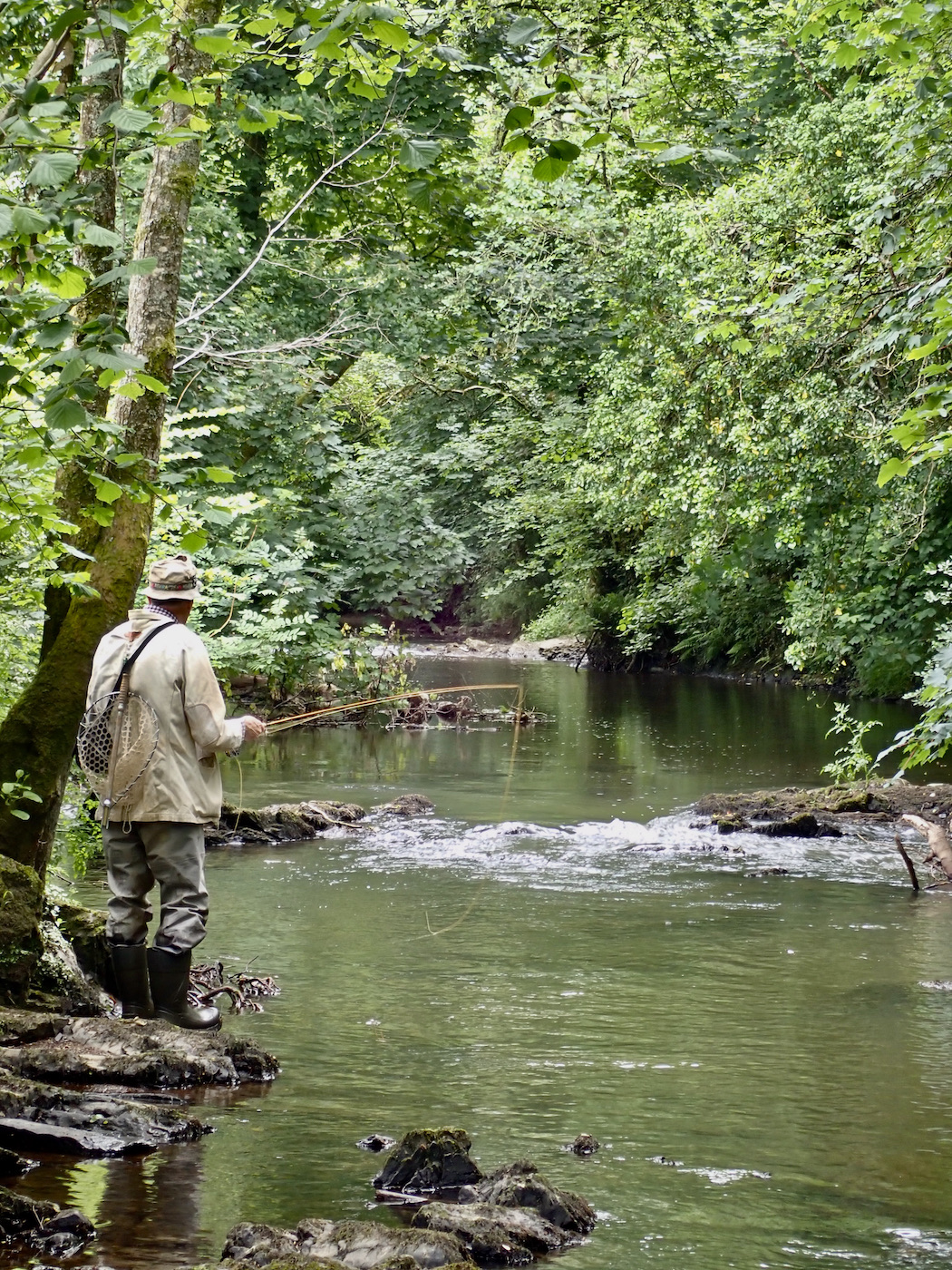
The river was running low with just a tinge of colour reminding me of beats I have fished on the Upper Torridge a river that shares many characteristics with the Tamar.
The Thrushel as described on the Arundell’s website: –
The Thrushel and its own tributary, the Wolf, is a pretty, lowland river which affords excellent trout fishing. The Thrushel itself is a small to medium sized river with a good number of open pools for the novice fisherman to target some excellent wild brown trout. Its tributary the Wolf is slightly smaller and trickier, requiring more fishing experience. Both rivers are characterised by short gravelly runs with trout holding pockets that flow into rock formed pools. To get the best from your day, the ability to cast from both shoulders is preferable as many of the runs and pots require working your way up the river from side to side and between access points. A short rod of 7ft or so is recommended. It should also be noted that the water levels on the Wolf are controlled by output from Roadford reservoir ensuring that it is often fishable when all other rivers are running too high after rainfall.
Species – Brown Trout, Grayling
Size of River – Medium/small
Wading difficulty – Medium
Ease of access and Fishability – Medium
Trout Equipment – 7’6”- 8’6” #3/4 weight rods
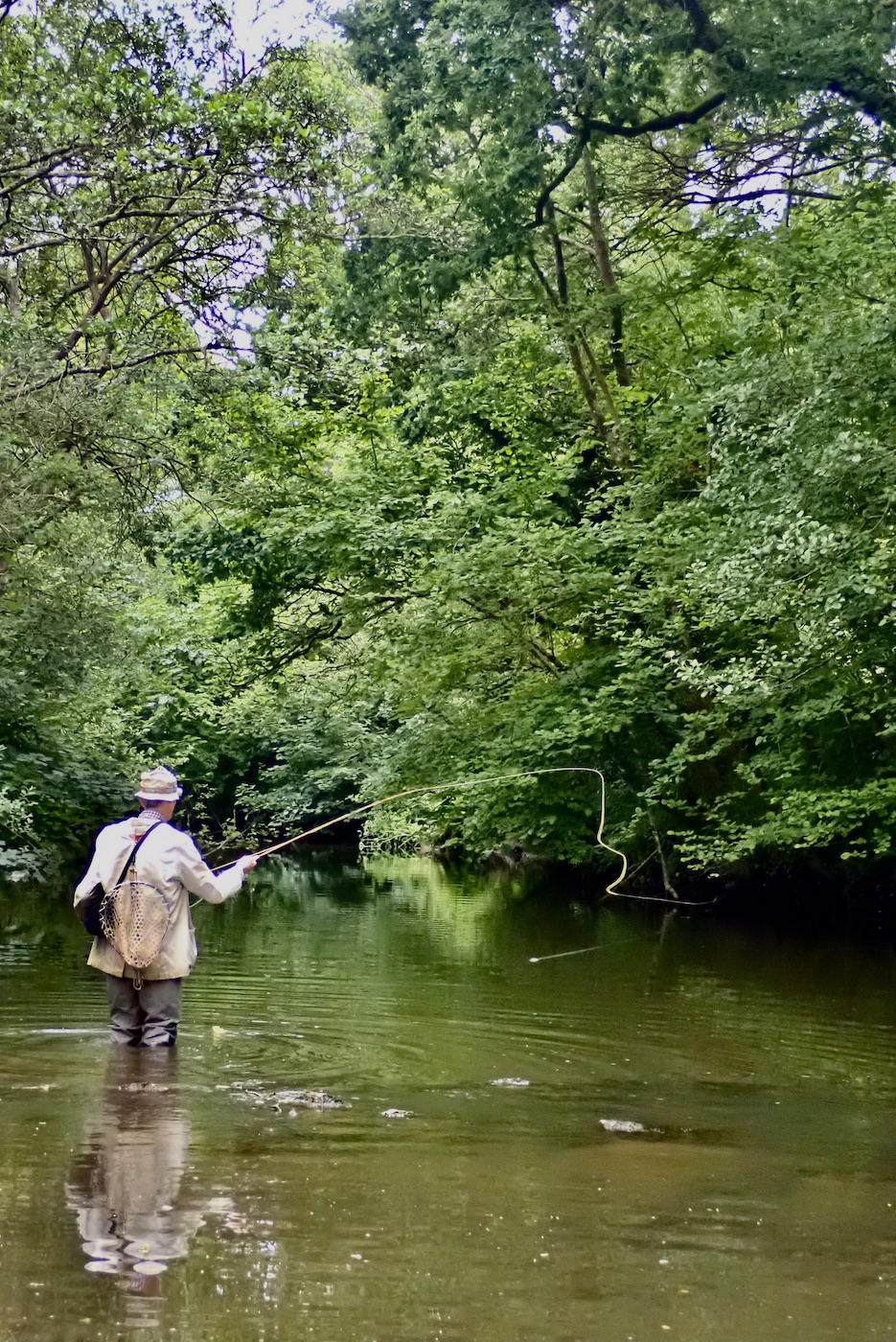
Whilst I very much enjoy fishing alone there is undoubtedly great value in sharing a day with a fellow angler and it was a privilege to explore this delightful river on this early summer day.
Tactics were discussed with Luke opting for a single bead headed nymph. We discussed the merits of New Zealand style tactics that are often used to explore the water giving the best of both worlds in many anglers opinion. Whilst Luke agreed with the effectiveness he prefers to focus on either dry fly or nymph tactics believing this a more rewarding and enjoyable way to fish
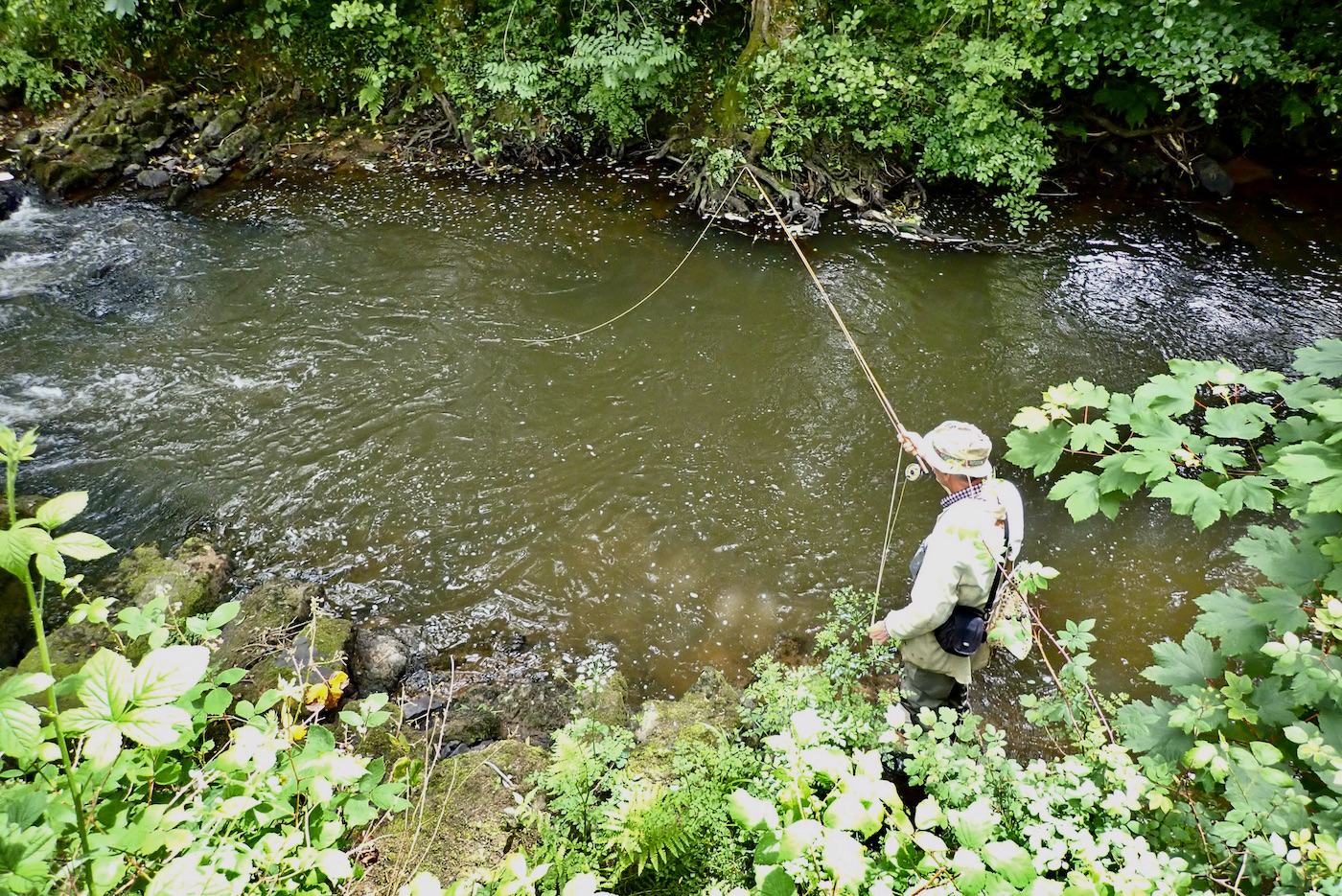
We entered the tranquil and shaded riverside and paused to take in the surroundings. A chiff chaff’s song reverberated through the air. The trees were in full leaf offering areas of shade as the river flowed tranquilly between rocky banks that were interspersed with tree roots. A river that could easily be the setting for the author BB’s delightful tome ‘The Little Grey Men’, a book that tells of the adventures of four gnomes as they travel down a stream. In all its full summer beauty: throughout the story runs the secret music of the stream, the songs of the water birds, the whisper of the sedges.
We watched carefully for signs of rising fish.
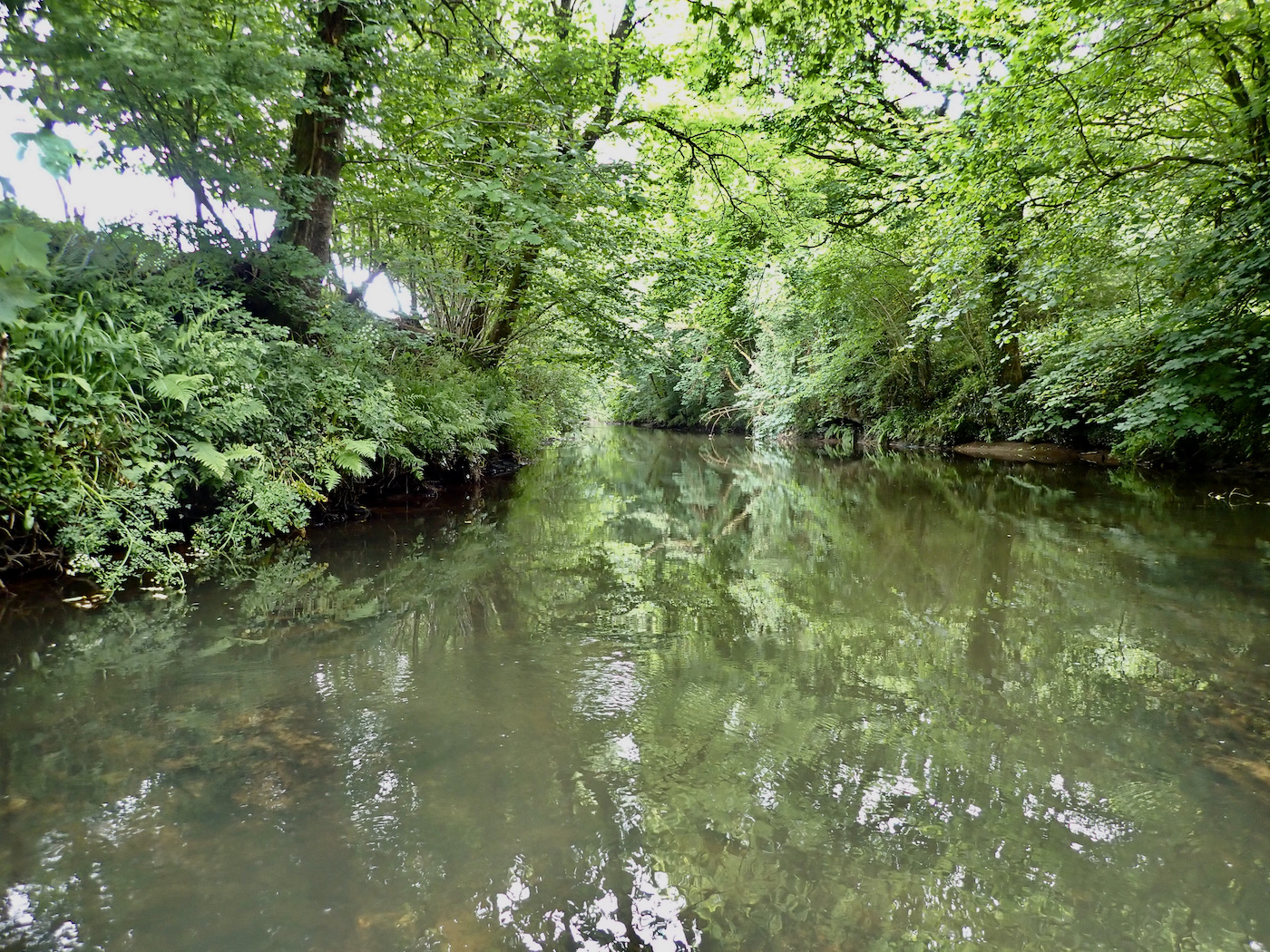
Luke demonstrated an extensive in depth knowledge of entomology talking of the flies he expected to see throughout the season and which patterns are best used as imitation’s.
Luke’s approach was calm and measured and I felt totally at ease in his presence. Sometimes there can be a degree of pressure when sharing a day as you don’t want to show incompetence by tangling in the trees or scaring the wily trout.
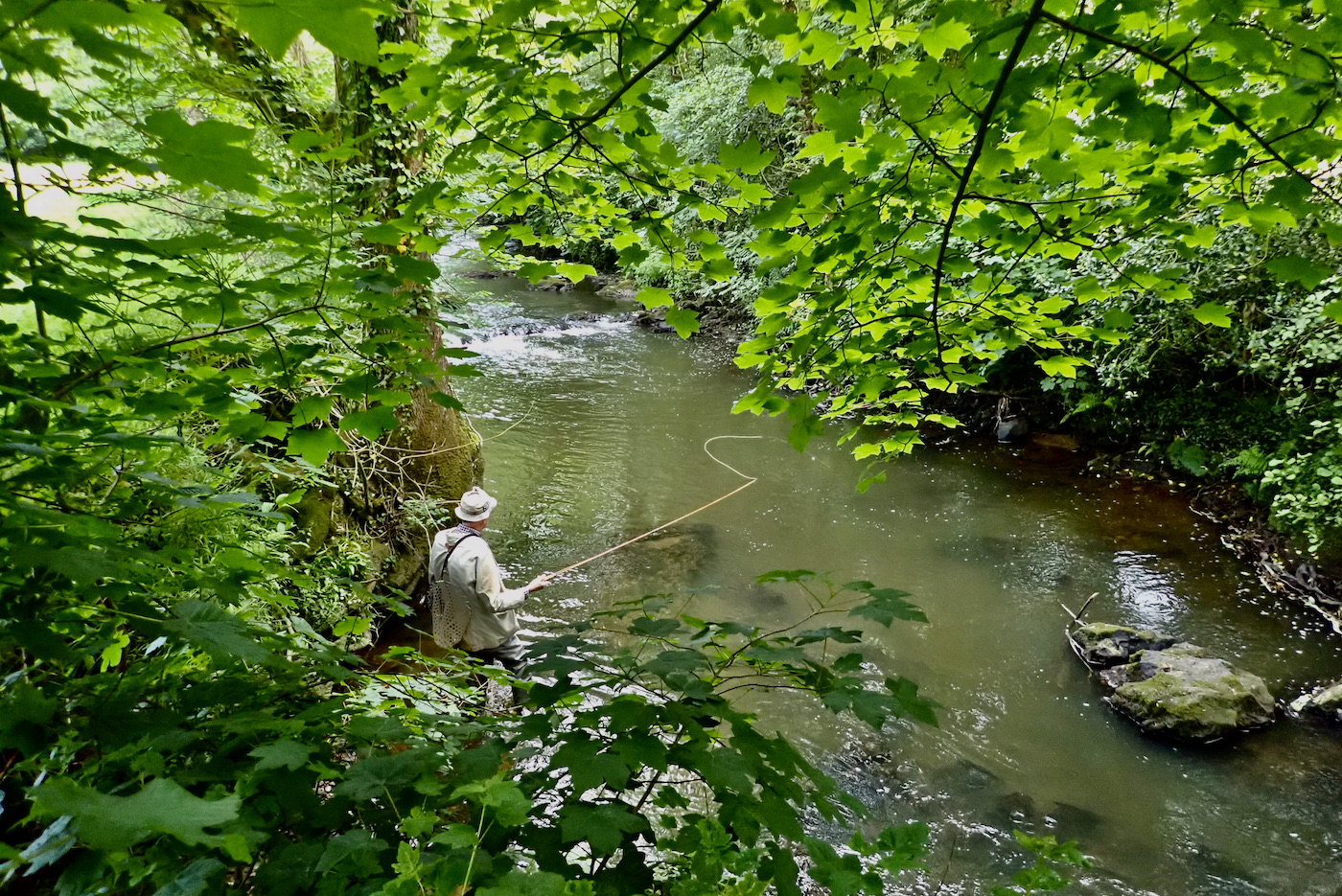
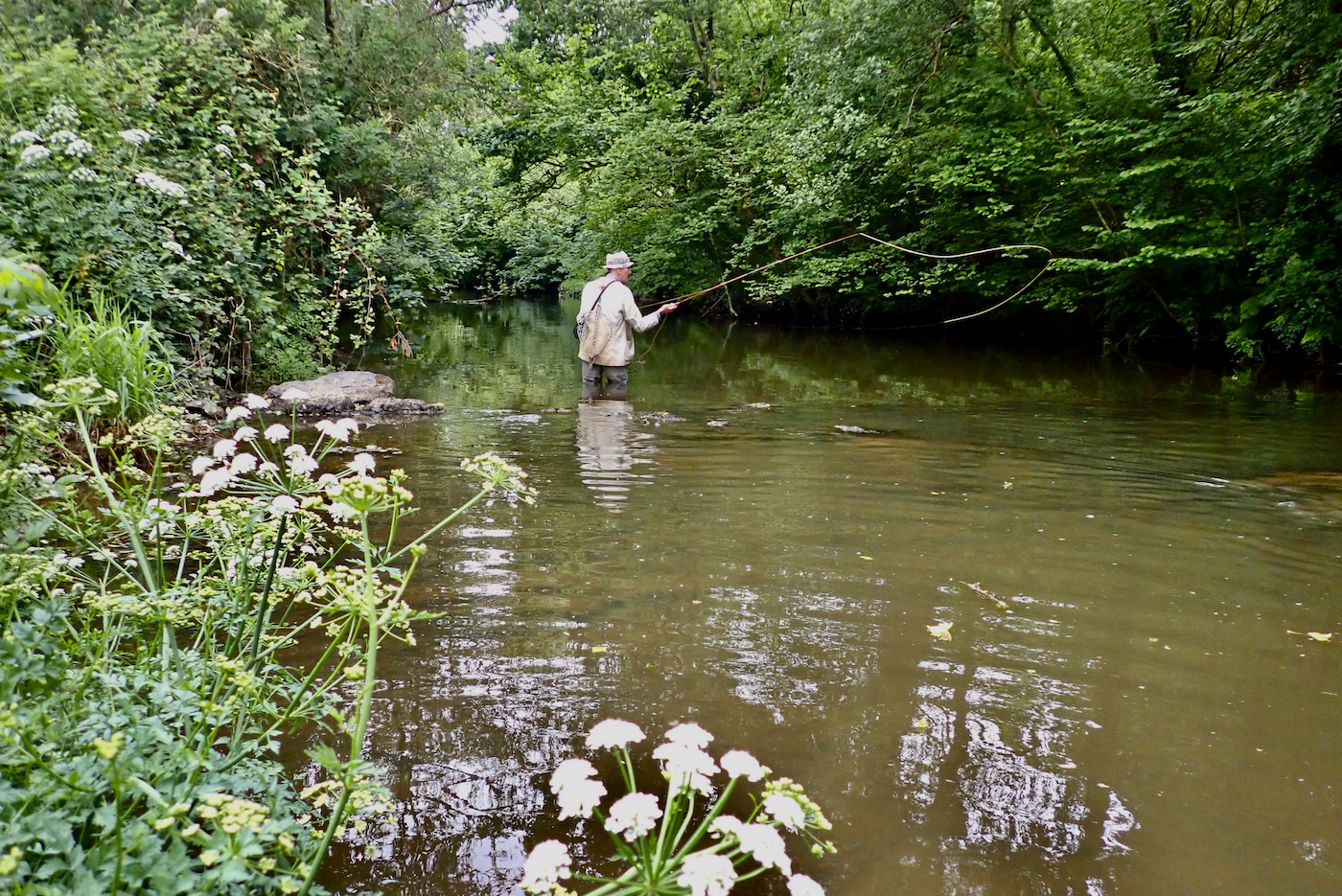
We took it in turns to fish the pools and glides. Discussing where we thought the fish would lie and delighting in dropping the fly into the sweet spot. Reading the water is a skill gleaned over many days even years beside the water. And whilst every river is different there are similarities that are common to all rivers from tiny brooks to the majestic lower reaches.
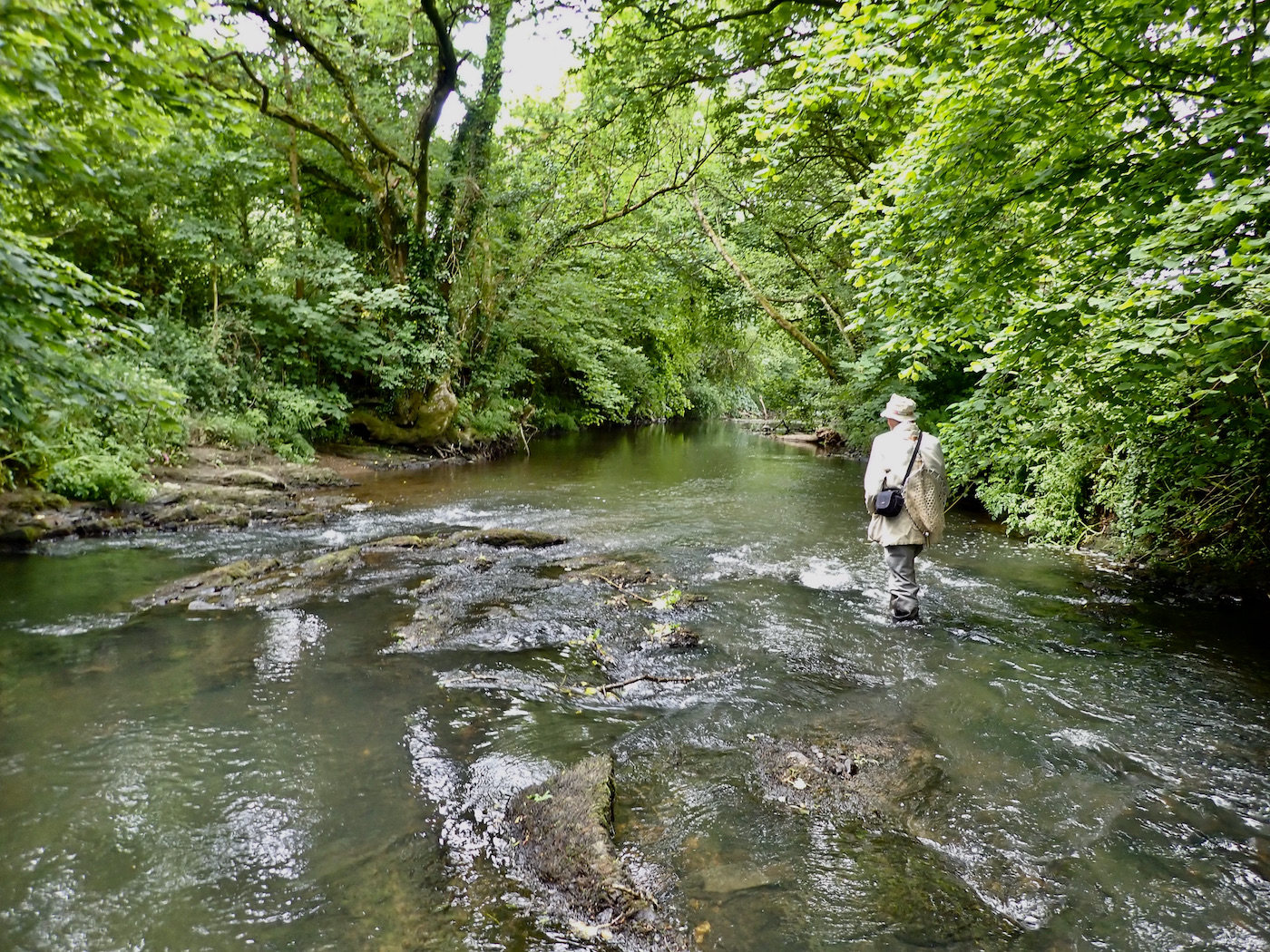
As we fished we talked of past fishing forays in waters both at home and abroad. We both caught a few small crimson spotted wild browns that were a delight to briefly admire before slipping back into the river.
After reaching the top of the beat we headed back down river to revisit promising lies. I waded into a deep run to search with a weighted nymph whilst Luke watched on. As I turned to wade back I slipped into a deep pocket and lost my balance momentarily slipping forwards into the deep water. Cool water surged over my wader top and I felt a moment of panic and then embarrassment at my clumsiness.
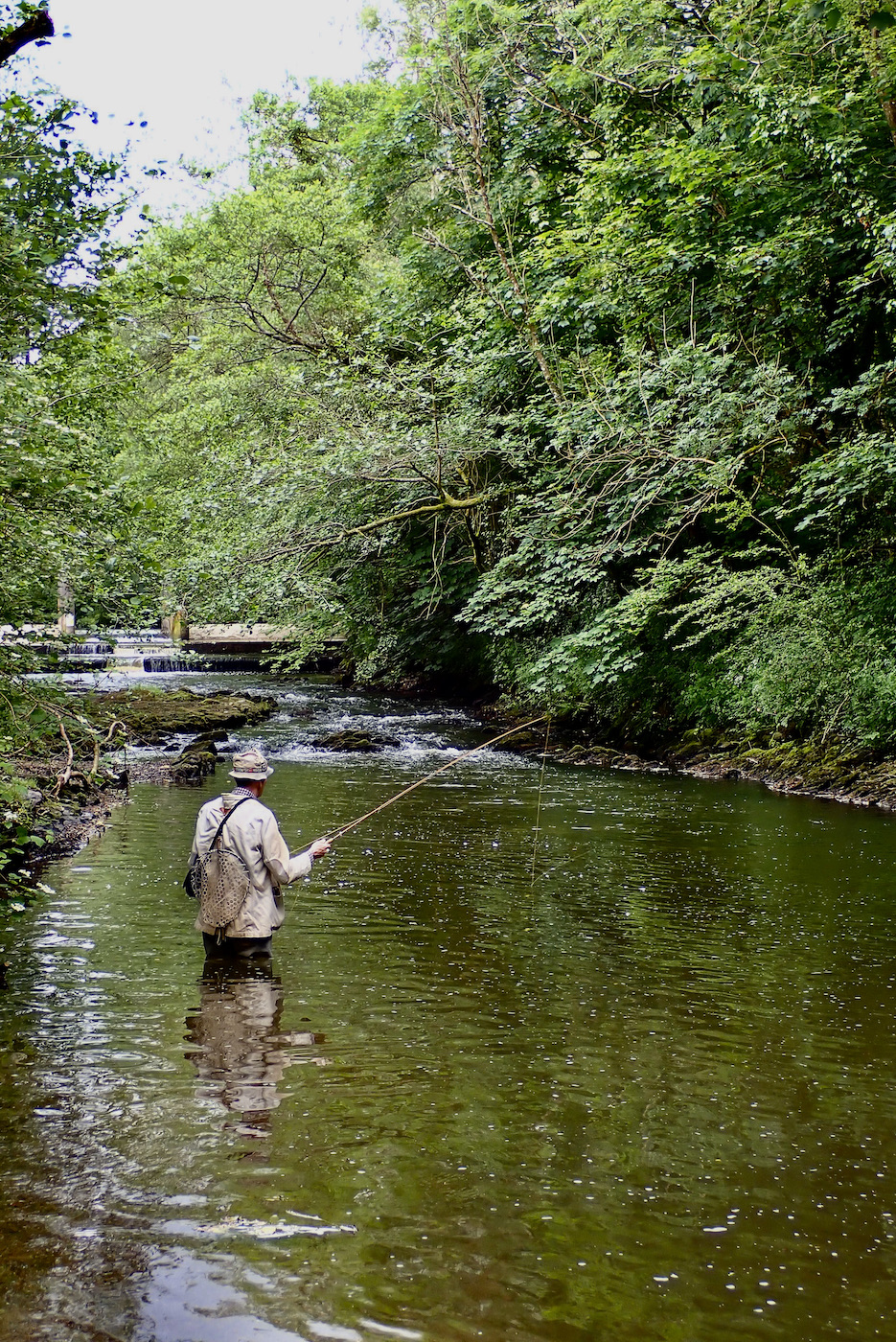
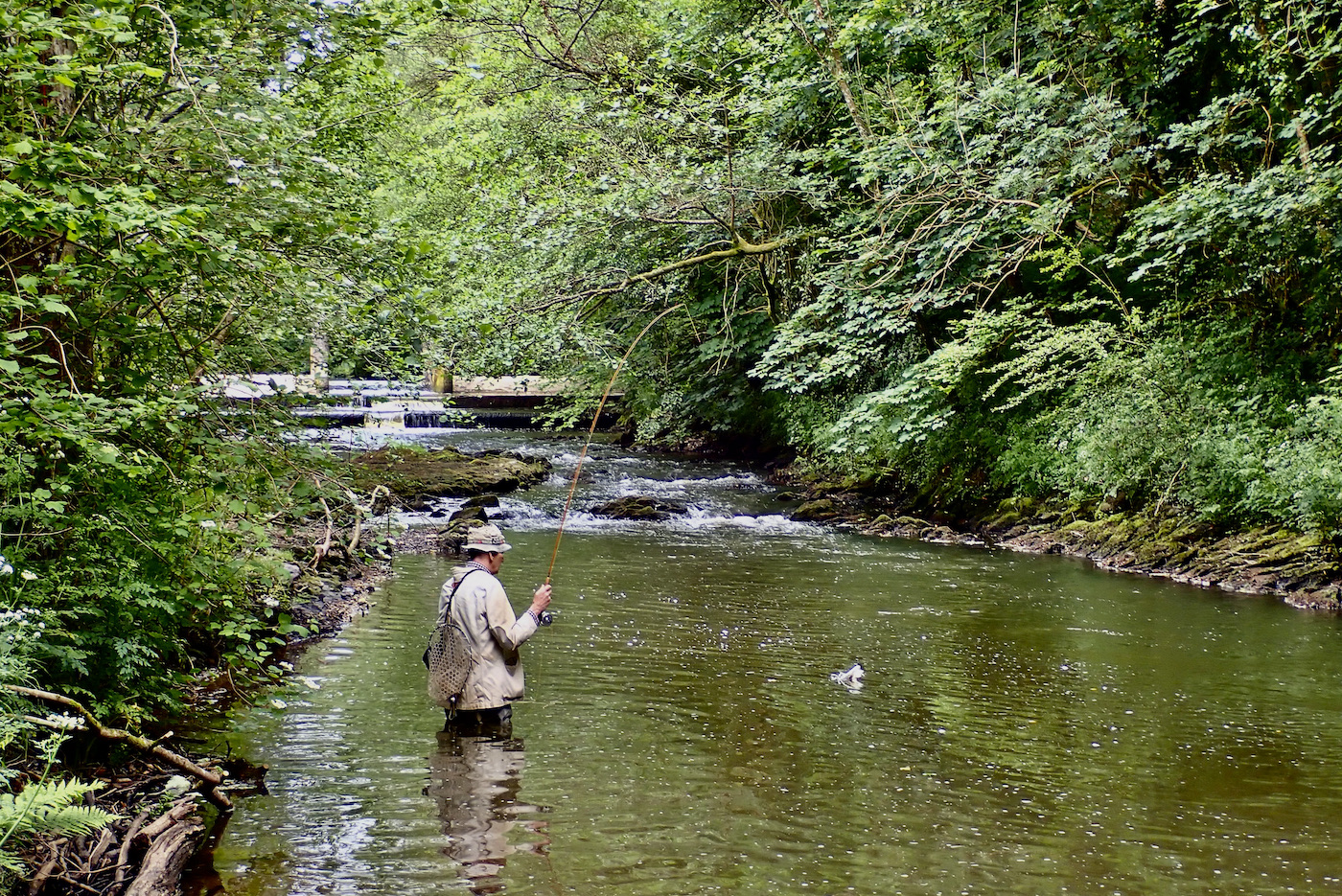
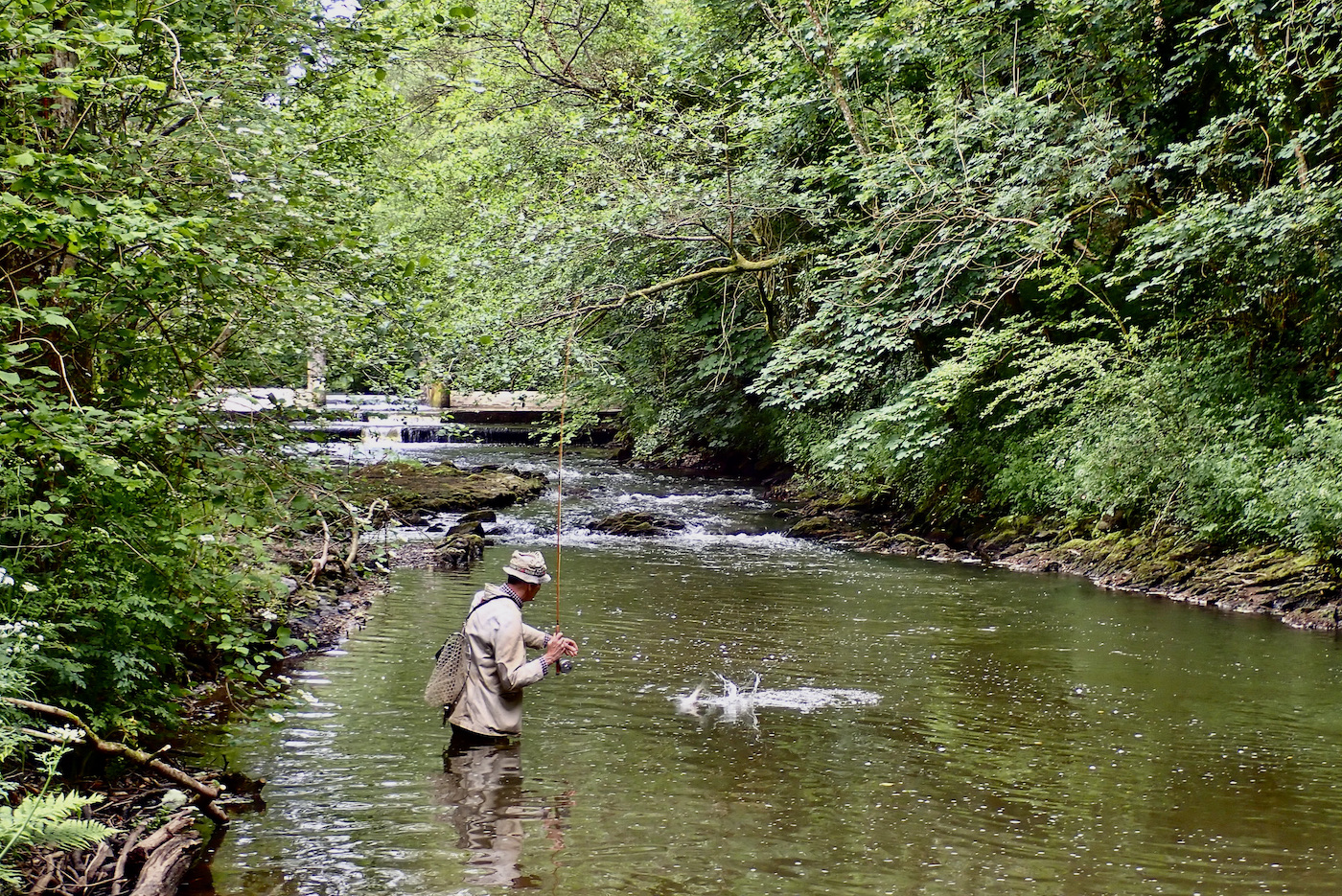
It proved costly as my phone though never totally submerged later packed up requiring a costly repair. I really should make sure I keep it within an aqua-pack.
After this brief moment of angst we continued on and headed for a stretch we had been advised to fish at the Lower end of the beat below the road bridge.
We entered a new stretch through a padlocked gate. A deep and shady pool was at the very bottom of the beat. Luke suggested I start at the bottom of the pool whilst he fished the run above.
I made my way carefully through head high undergrowth of water hemlock and nettles. A trout rose under the overhanging branches. I crept into position and flicked a grey duster delicately where the rings had shown. A shadow appeared and a trout sipped in the fly. A pleasing wild brown of perhaps 8” was brought to the waiting net.
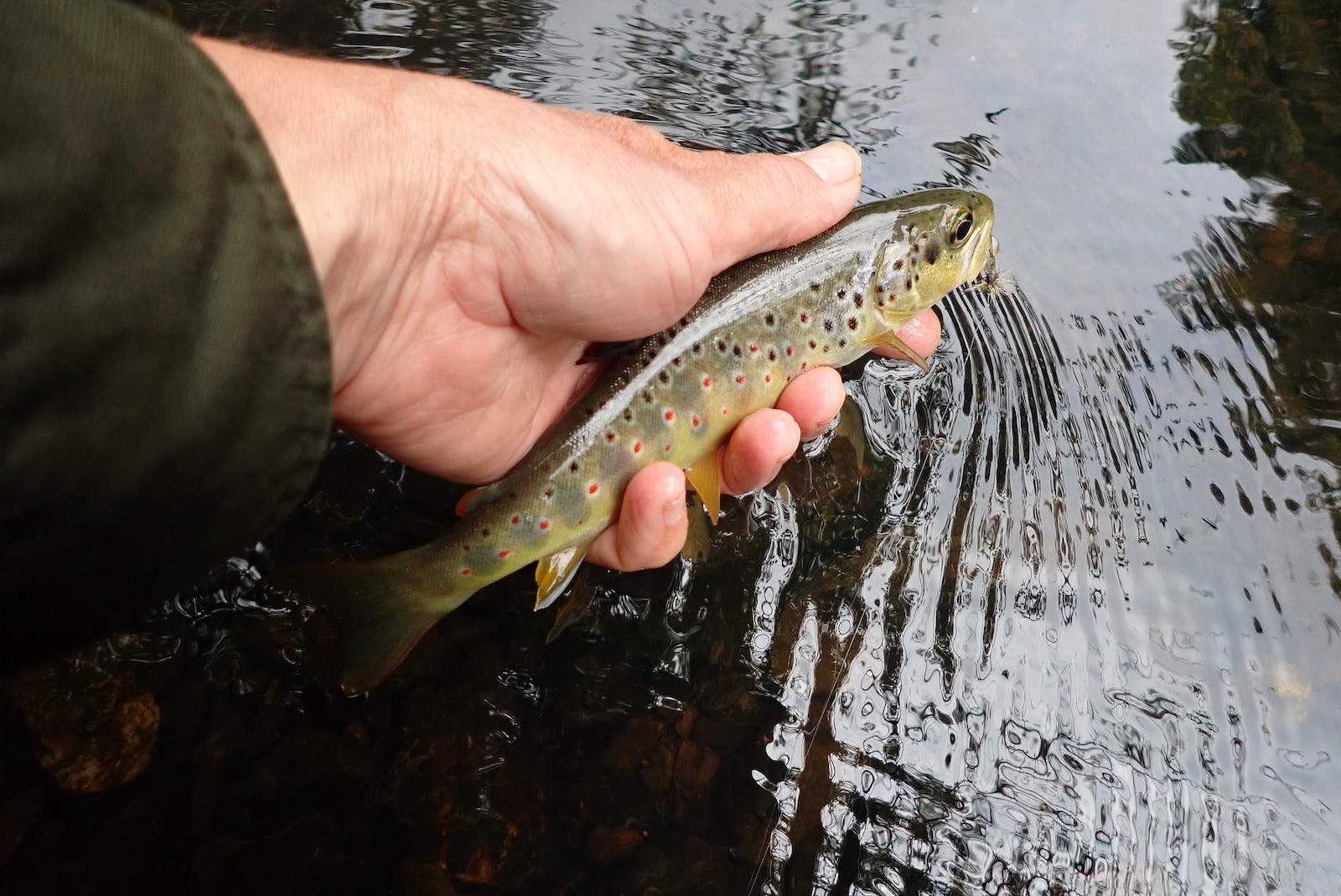
I dried the fly and cast again and was thrilled to see a good sized trout of perhaps 1lb approach the fly before turning away with disdain.
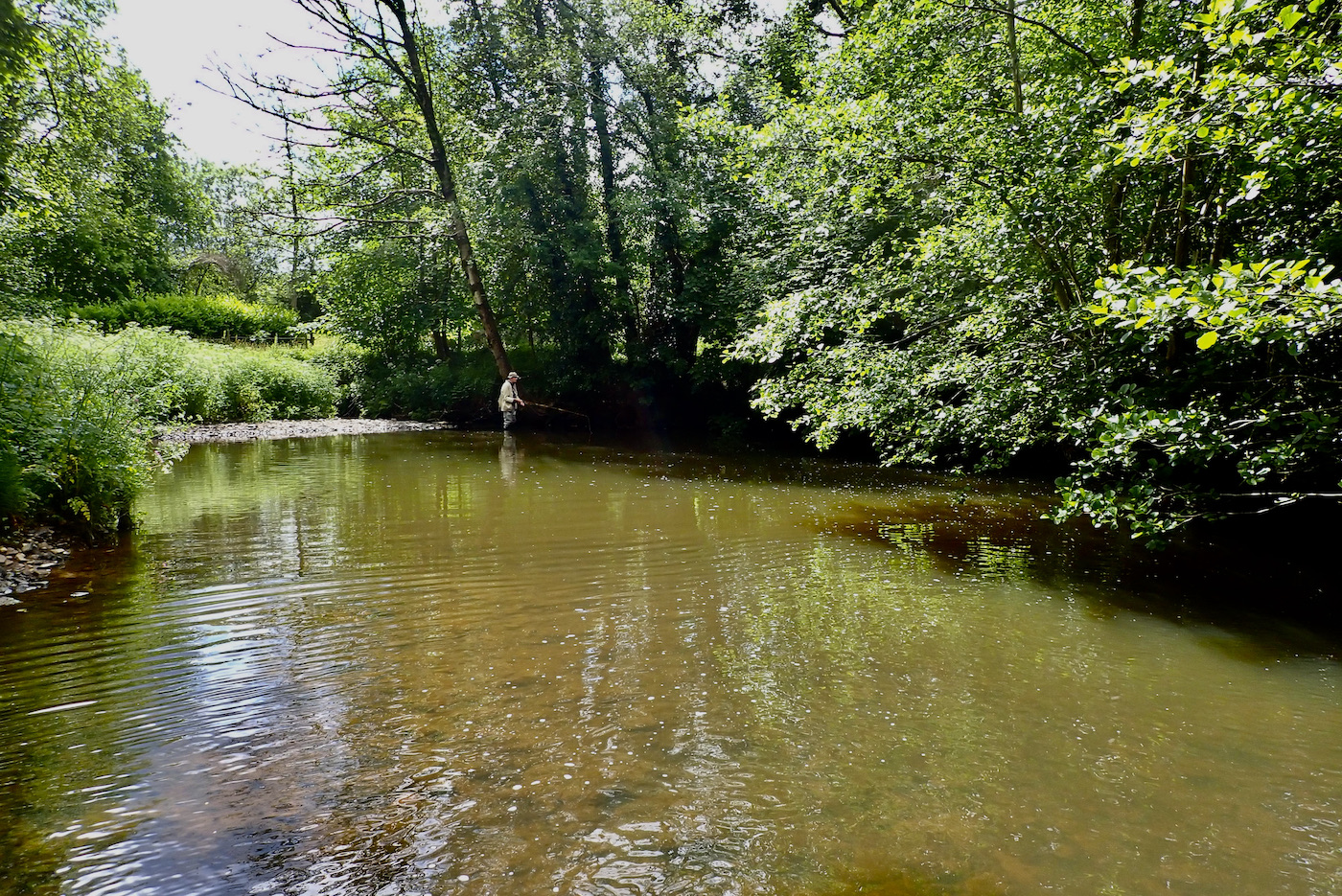
I fished carefully up the pool and hooked another similar sized trout at the head of the pool. Luke and I compared notes and I suggested he try for the big fish at the shady tail of the pool. I fished slowly up the promising looking run above. I saw a fish rise and put my offering onto the spot. This is surely the most satisfying of moments in angling as the trout again rose and I felt that delightful harmony of deception and connection. The fish was the best of the day a pleasing brown of perhaps 10” its flanks olive and bronze decorated in crimson and black spots.
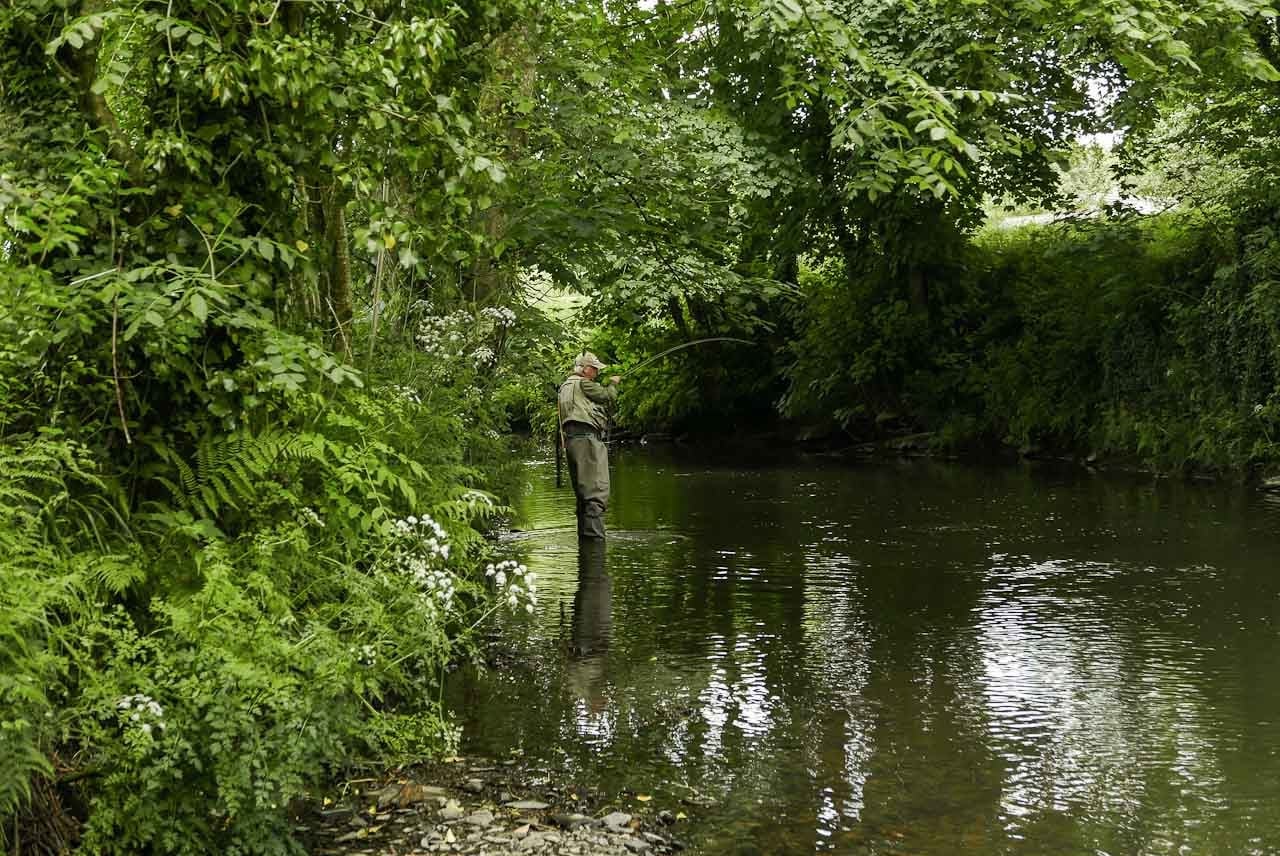
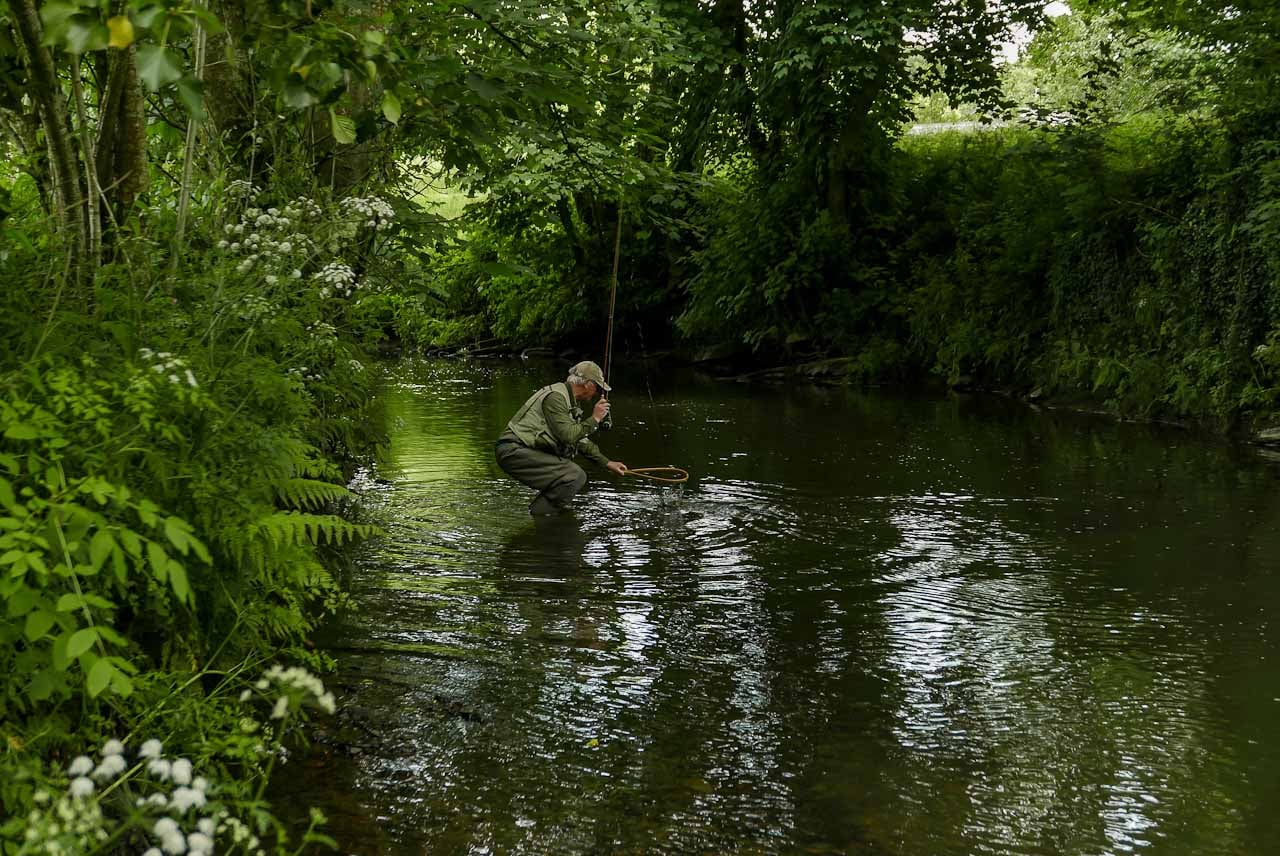
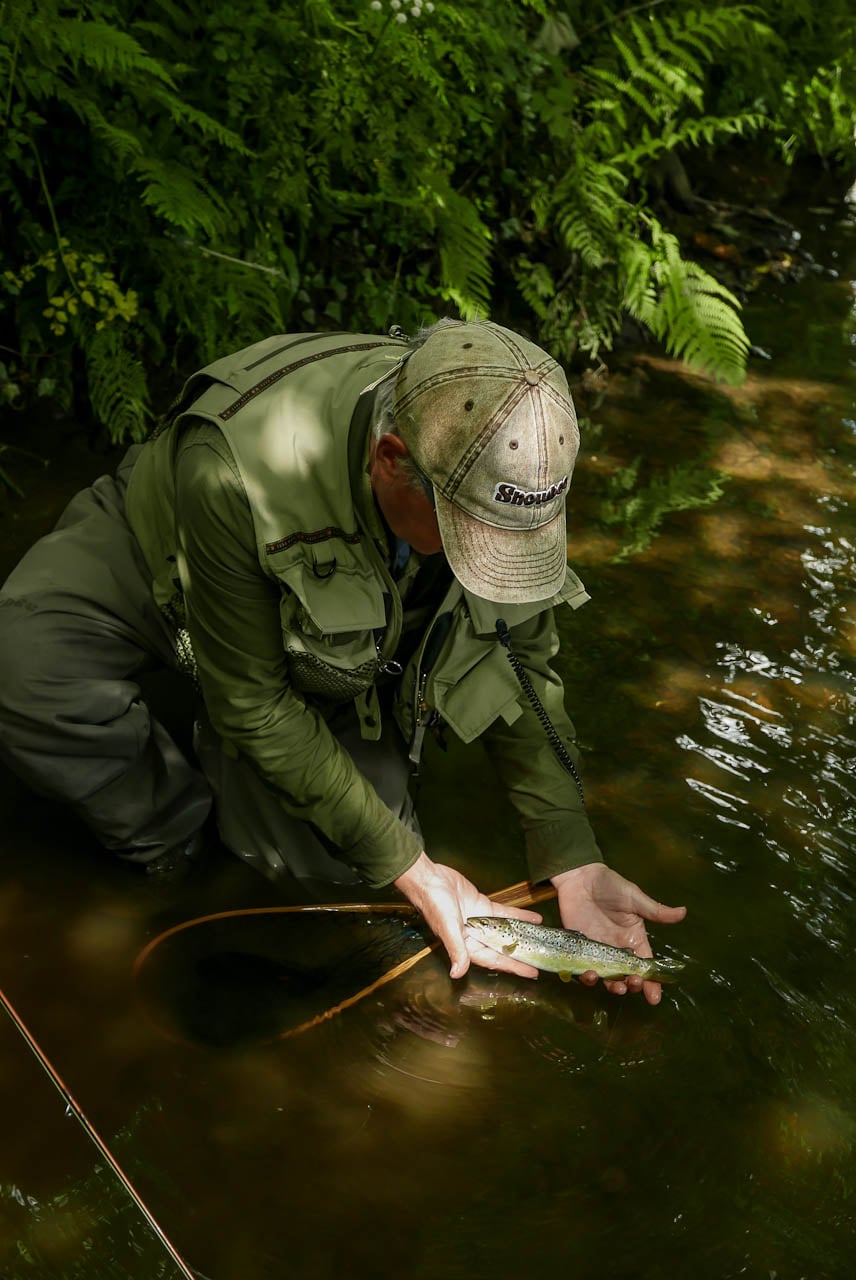
Luke captured the moment on camera and we walked up river having a few casts here and there before converging at the bridge.
It was late afternoon and we had shared a great day at the waters edge. Catching close to a dozen trout between us.
I cannot cast off without mentioning those hand crafted split cane rods. I would draw a parallel to classic sports cars that get you from A to B no quicker but do so in a manner that is undoubtedly pleasing to the soul.
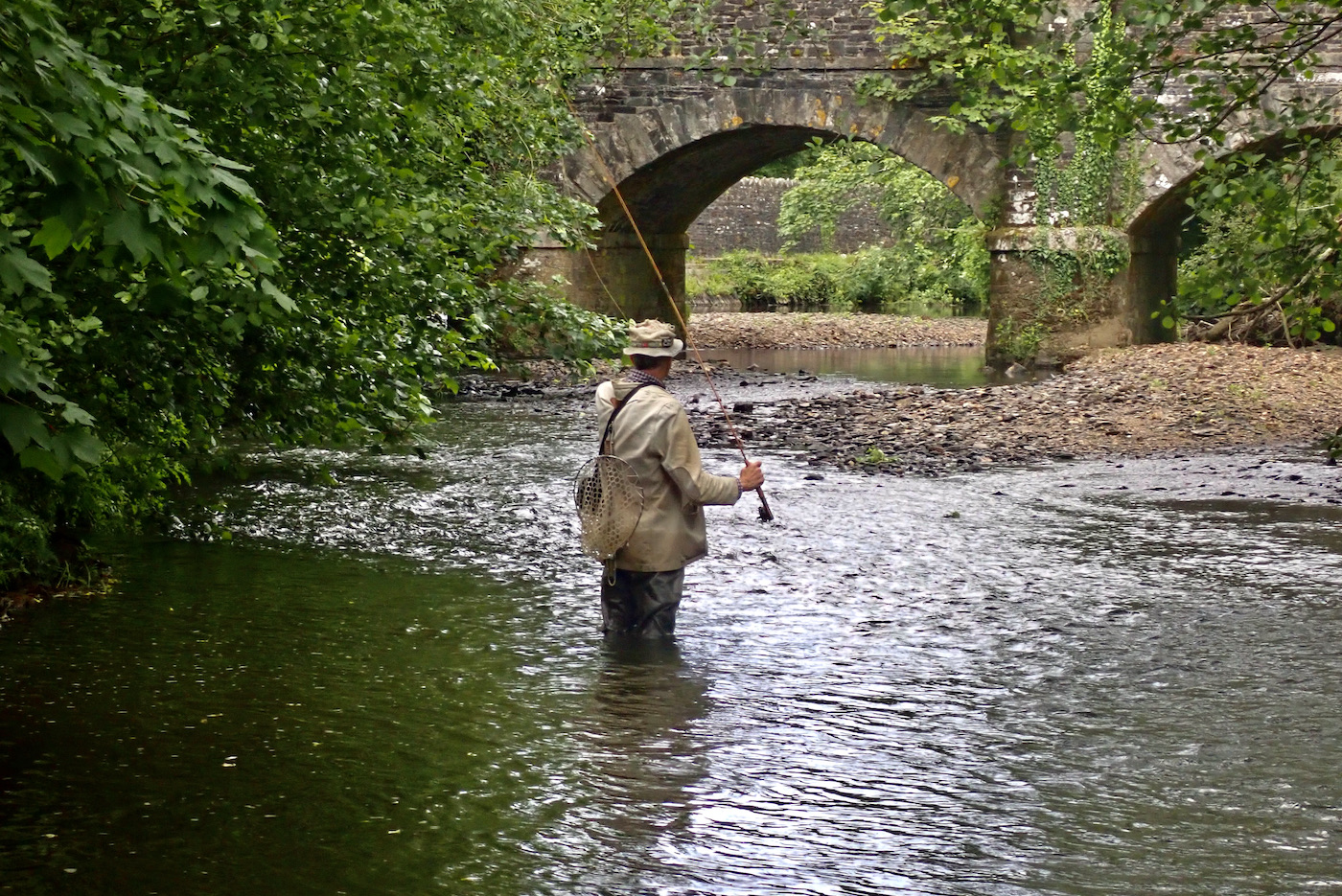
Early Morning Trout Sport at Bulldog
Lez had an amazing morning on the fly lake! The choice to get on the bank early in an attempt to beat the heat of the day definitely paid off!
2 Spartics landed, one being 4lb+!
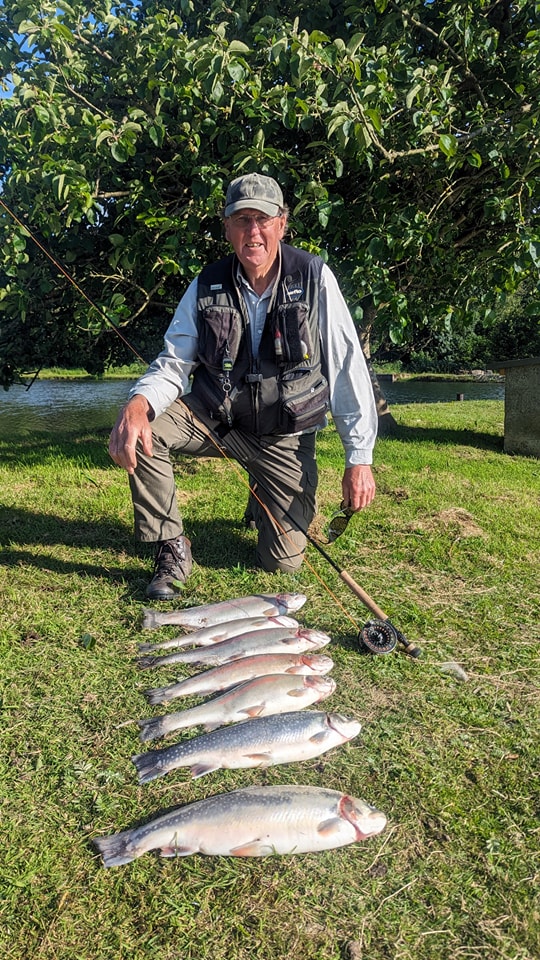
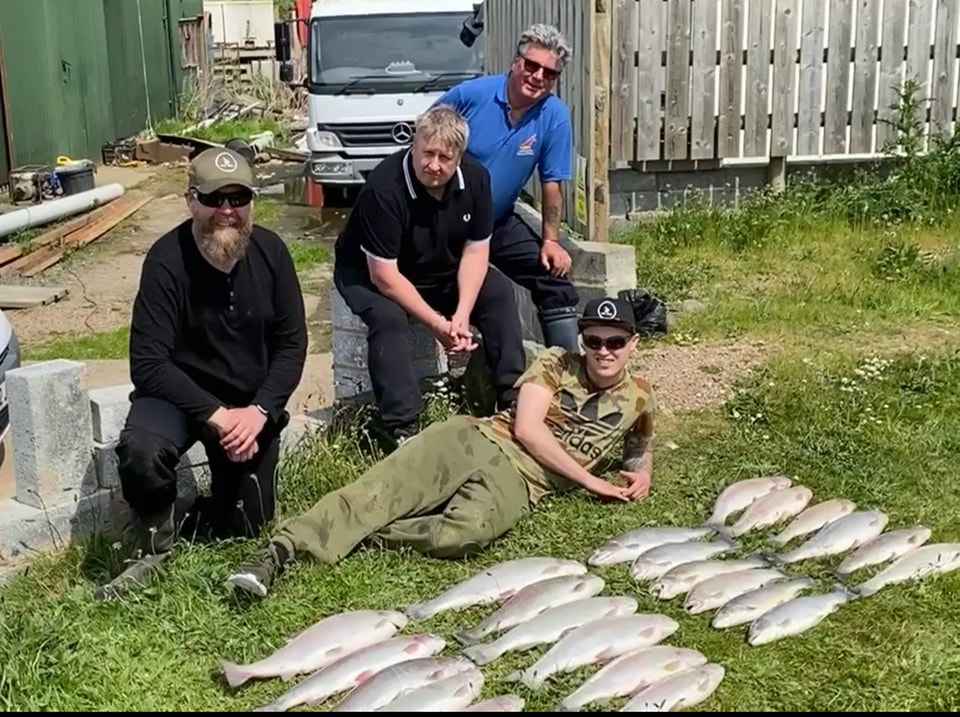

BARNSTAPLE BAIT AND TACKLE – Opening July 2024
Chris Connaughton is well known and respected across North Devon as the manager at Quay Sports. Quay Sports has been the hub for anglers across the region since it opened a few years ago. Many were very saddened to hear of its closure as tackle shops are vital for angling to flourish. It is great news for the North Devon Angling community that Chris is opening a new store in Queen Street, Barnstaple. It is essential that local anglers support the shop as there is no substitute for having a shop where you actually pop in and buy bait and tackle.

Quay sports retail shop will now be closed from this coming Friday 14.6.24. The reasoning behind this is Chris (Shop Manager) is actually starting his own new venture (Completly seperate from Quay Sports) in Barnstaple called Barnstaple Bait & Tackle and an agreement has been made for our stock. We wish Chris all the best for the future, he is looking to be open around the 1st July so show him as much support as possible to keep a shop in Barnstaple.

Reed – Providing Vital Protection from the elements for Twenty Five Years

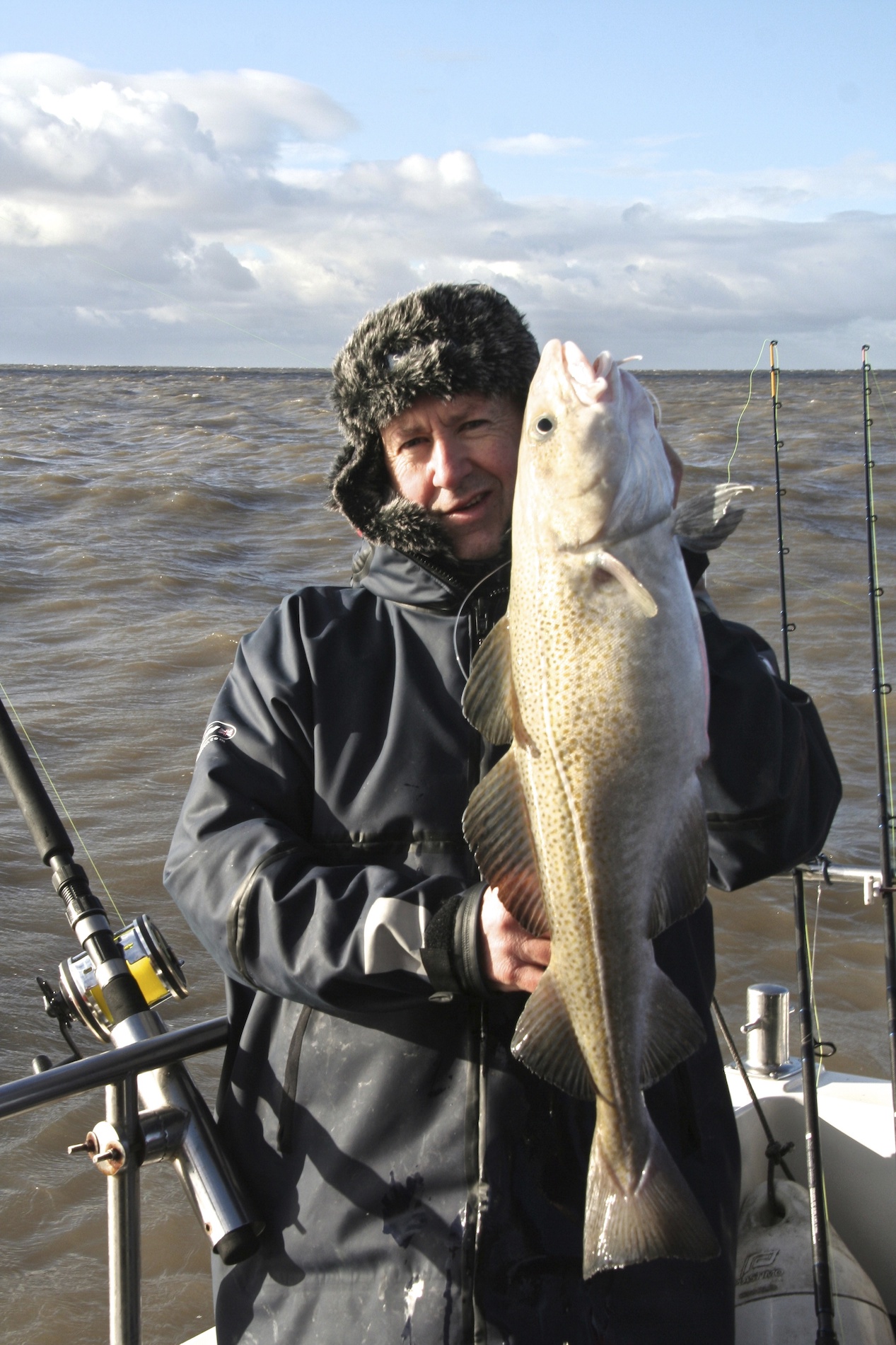
Being an all-round angler and fishing throughout the year coping with what the elements throw at me is an important part of my fishing preparation. An adage that is often thrown around is that there is no such thing as bad weather just the wrong clothing. Well there is perhaps some truth in that though generally I prefer a warm sunny day to a cold wet one!
I enjoy my fishing excursions throughout the year and keeping warm and dry undoubtedly makes the experience both more enjoyable and productive. You will not fish well if you are cold wet and miserable.
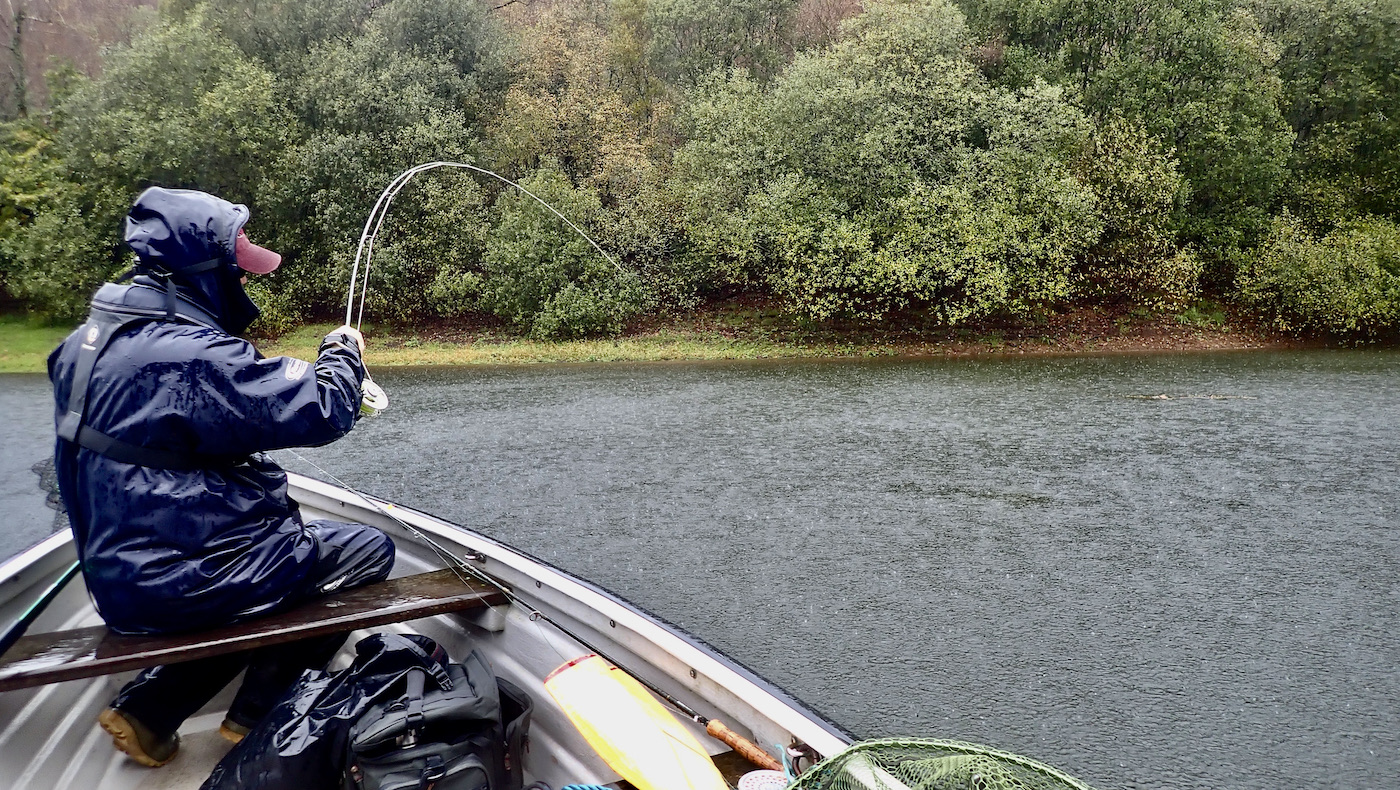
I have worn a vast range of weather proof garments over the past fifty years some good some not so good. Several years ago I was introduced to Reed Chillcheater clothing by my good friend and fellow angler Kevin Legge. Kev extolled the virtues of Reed Chillcheater products and in 2016 I invested in an Aquatherm Fleece Storm Jacket.
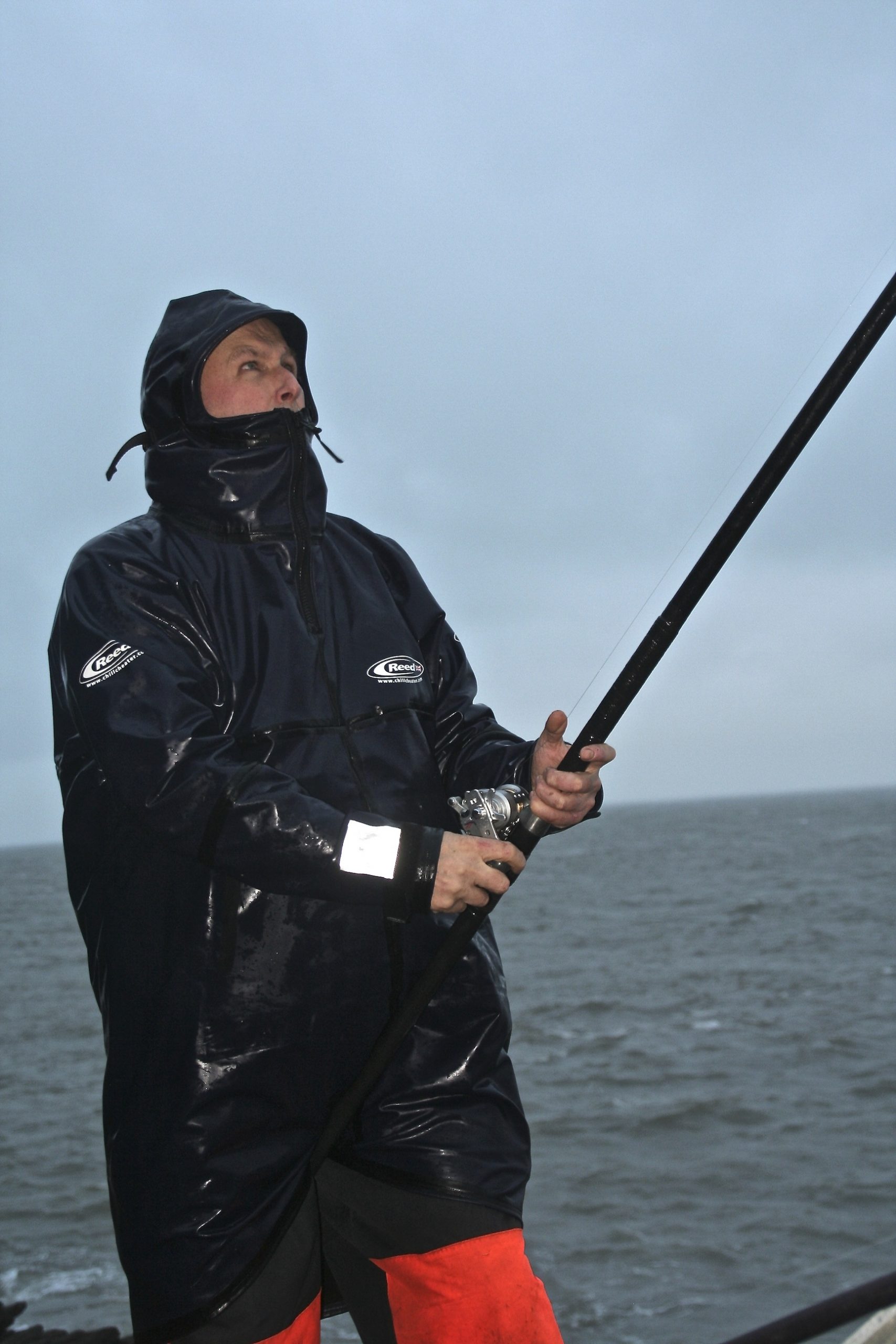
I was immediately impressed by the comfort and resistance to the winter weather the Aquatherm Fleece provided. The inner fleece provides warmth and the outer fabric provides a waterproof barrier.
I also combine the wearing of Transpire Fleece base layers during the colder months and find this ensures I can endure the coldest of days. I occasionally wear the double thickness transpire under top and trousers but generally find that I get too warm unless its static fishing.
The true test of clothing is undoubtedly its endurance overtime and whilst most waterproofs I have used in the past start leaking after a couple of seasons my Aquatherm Fleece Storm Jacket is still doing its job over eight years later.
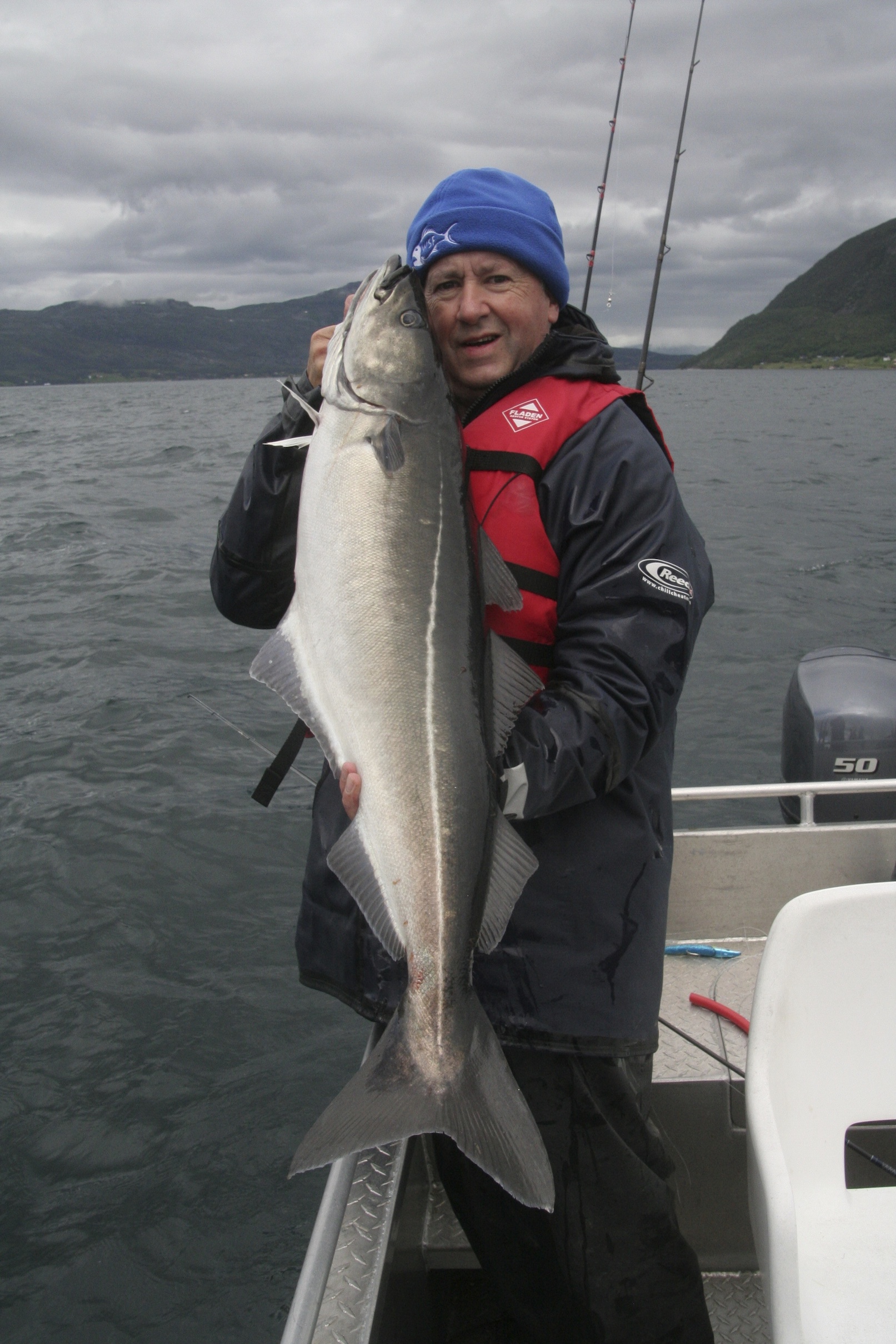
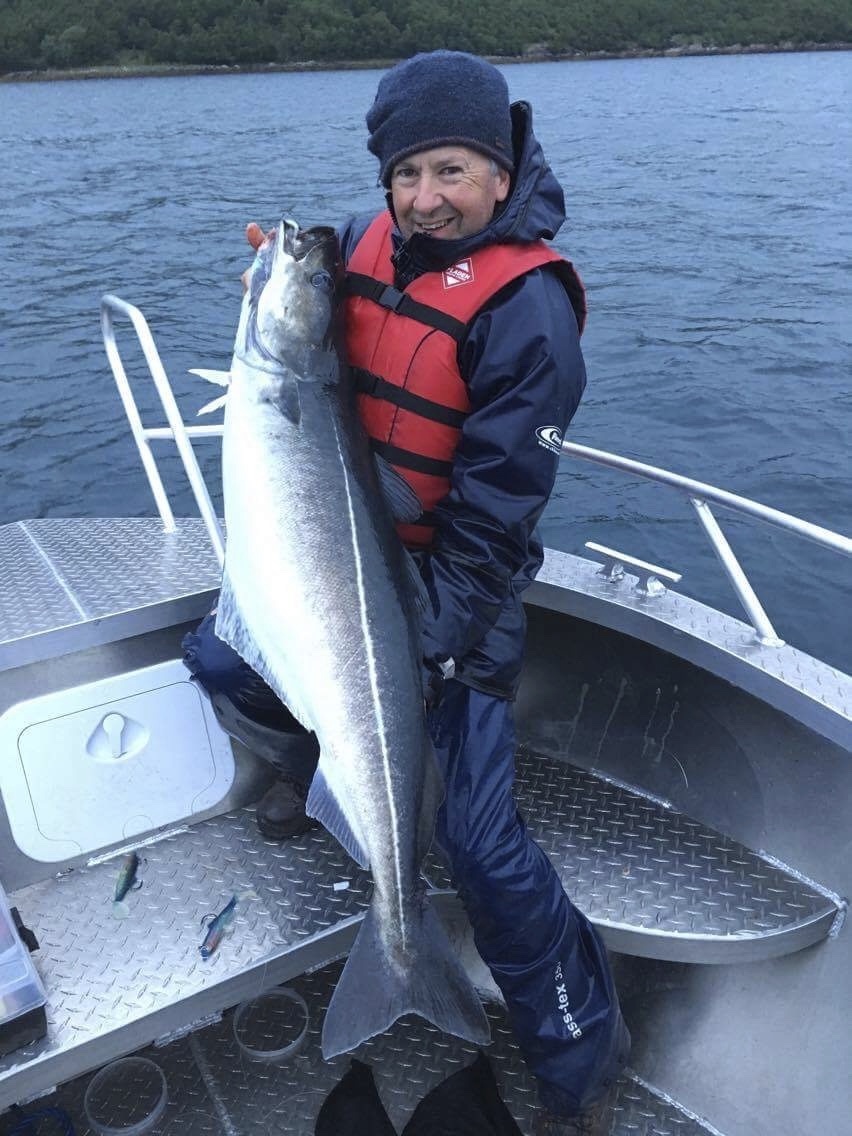
After speaking with company owner Chris Reed I put the jacket into the washing machine. It now smells far better and with the slightly fishy aroma removed it still repels the rain. The pockets have ripped and it’s getting a bit jaded but it still keeps out the rain. I will be investing in a new jacket for this coming winter.
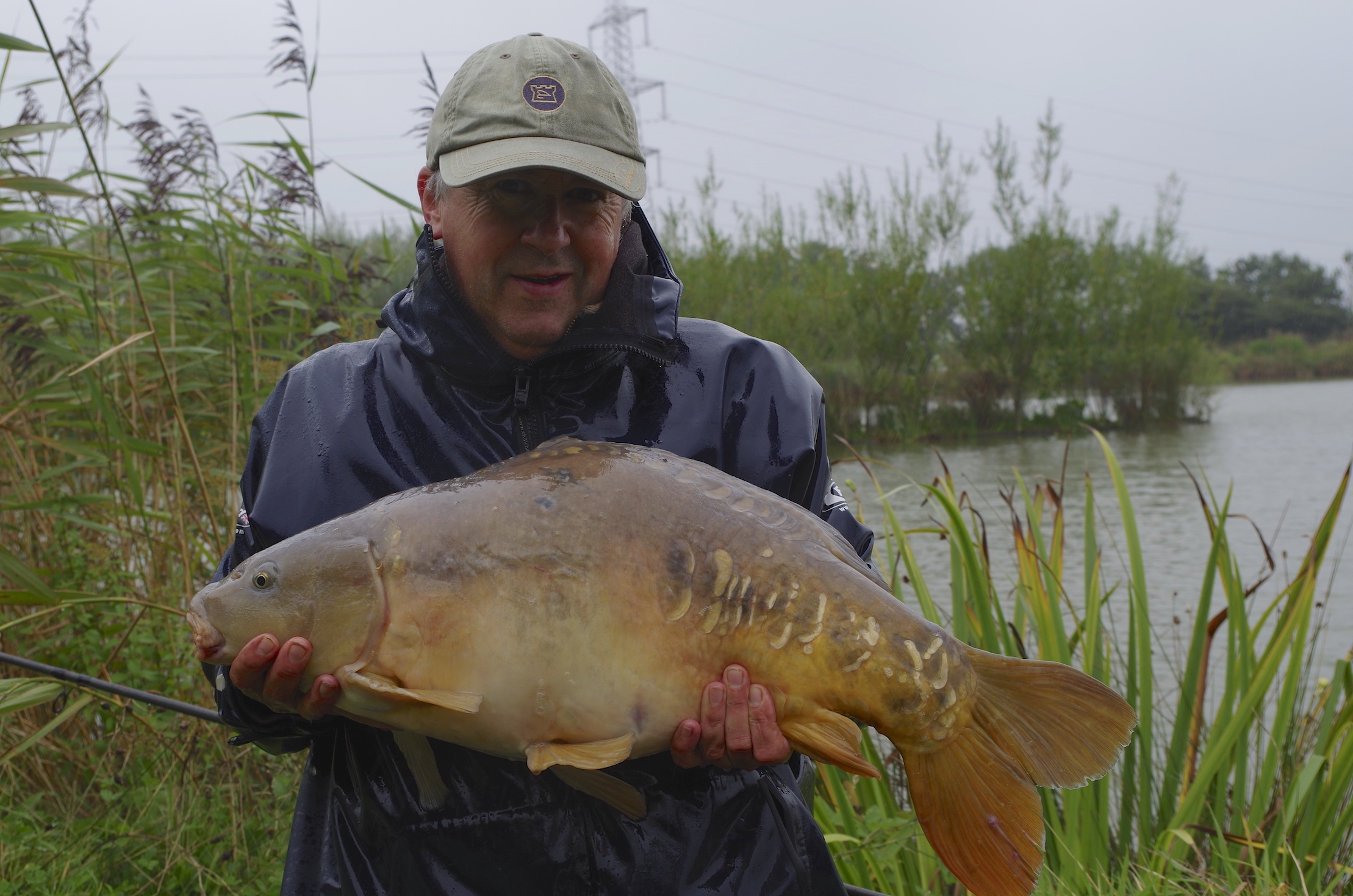
I visited Reed premises a few weeks ago to discuss their ongoing support of North Devon Angling News and enjoyed a tour of the premises. I have been pleased to help promote their excellent products since 2016 when I launched NDANs. The products are manufactured In Braunton by a small team of skilled workers. Reeds have been producing products aimed primarily at the Kayaking, Canoeing and outdoor adventure fraternity for twenty five years. Local anglers have discovered the benefits of Reed products with the clothing stocked at Braunton Bait Box and at Veal’s Mail Order and of course direct from Reeds at Braunton.
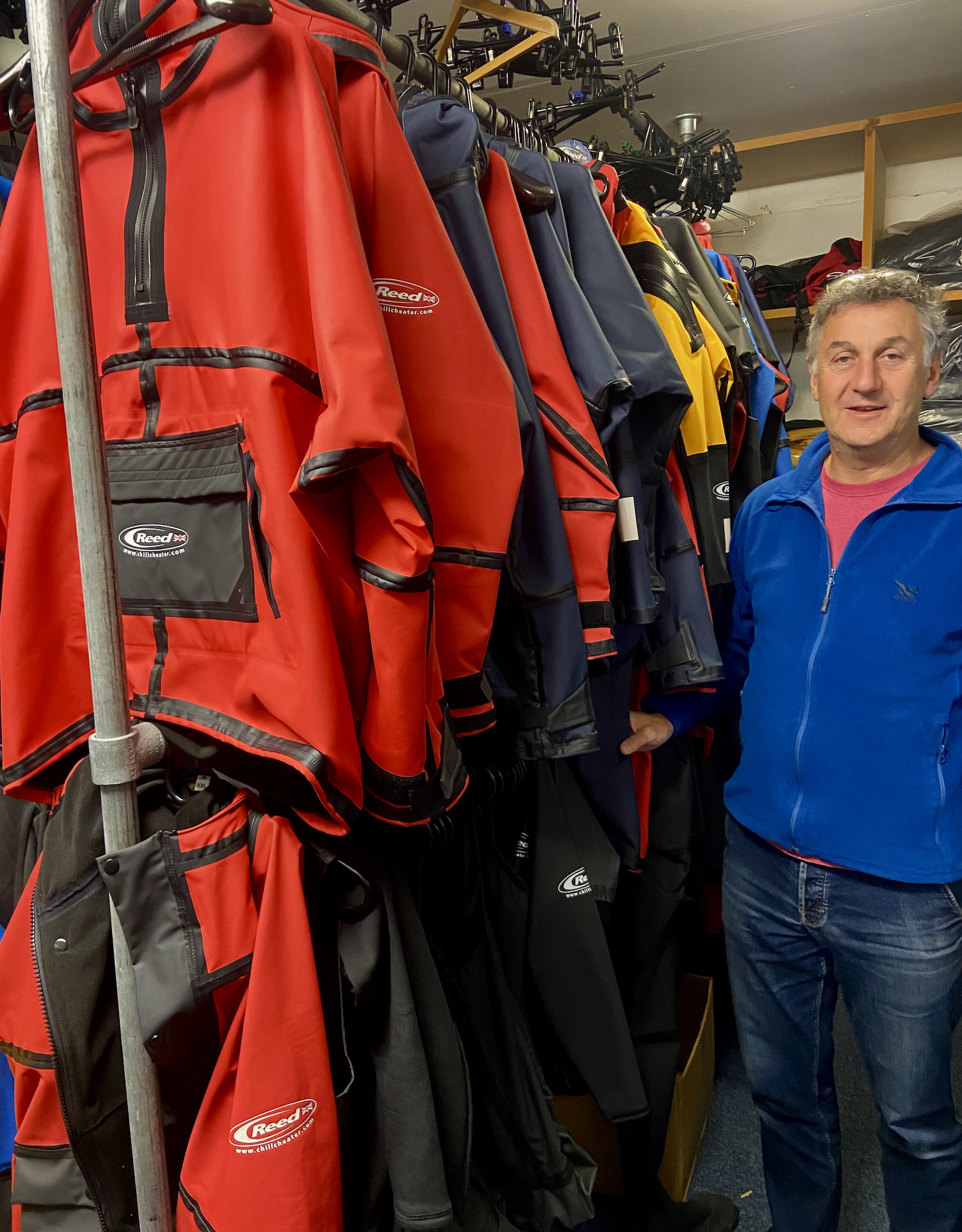
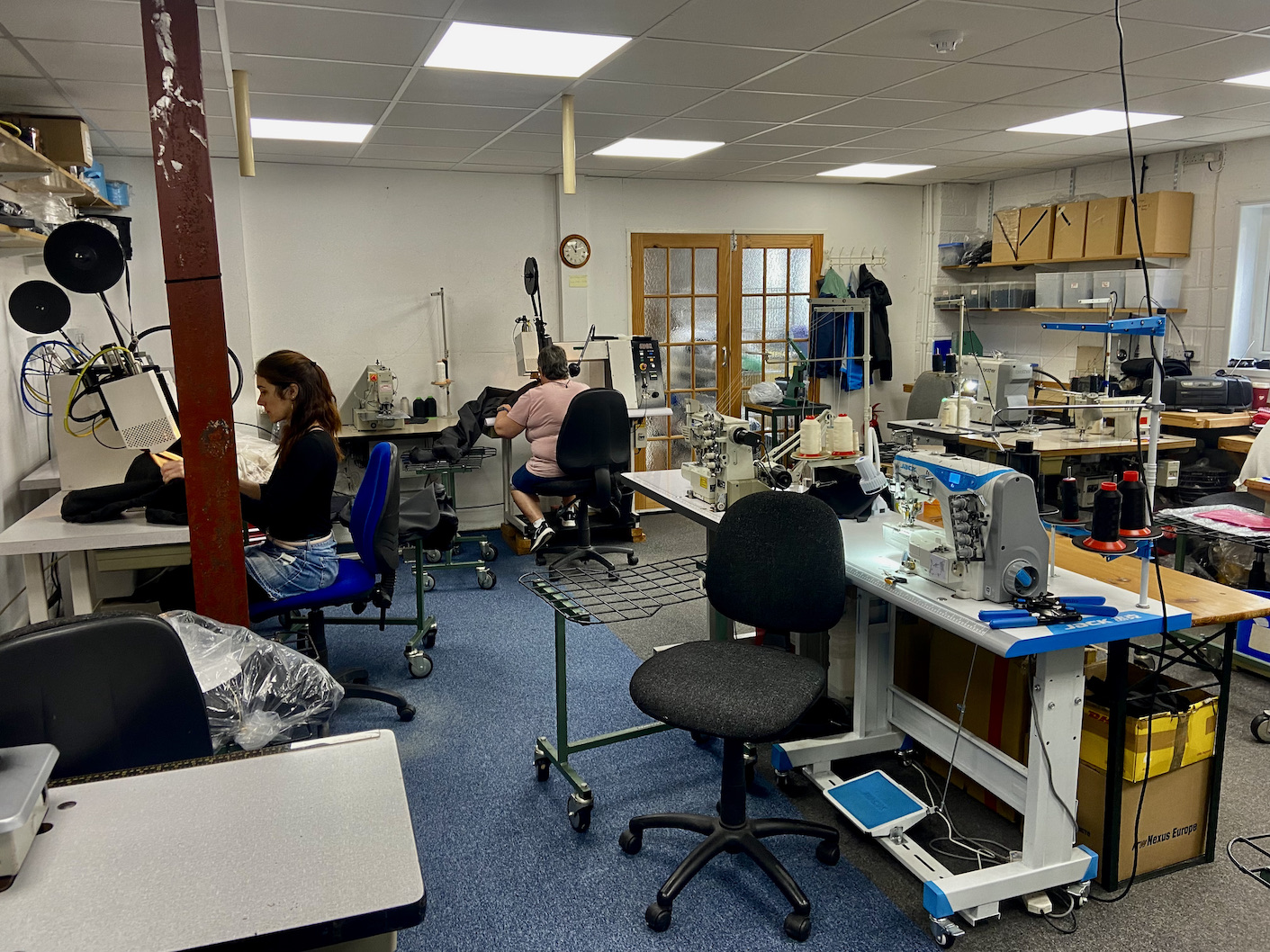
The work place

https://www.veals.co.uk/reed-chillcheater-storm-jacket-trousers-a-review/
Huge Rare Shad from local estuary
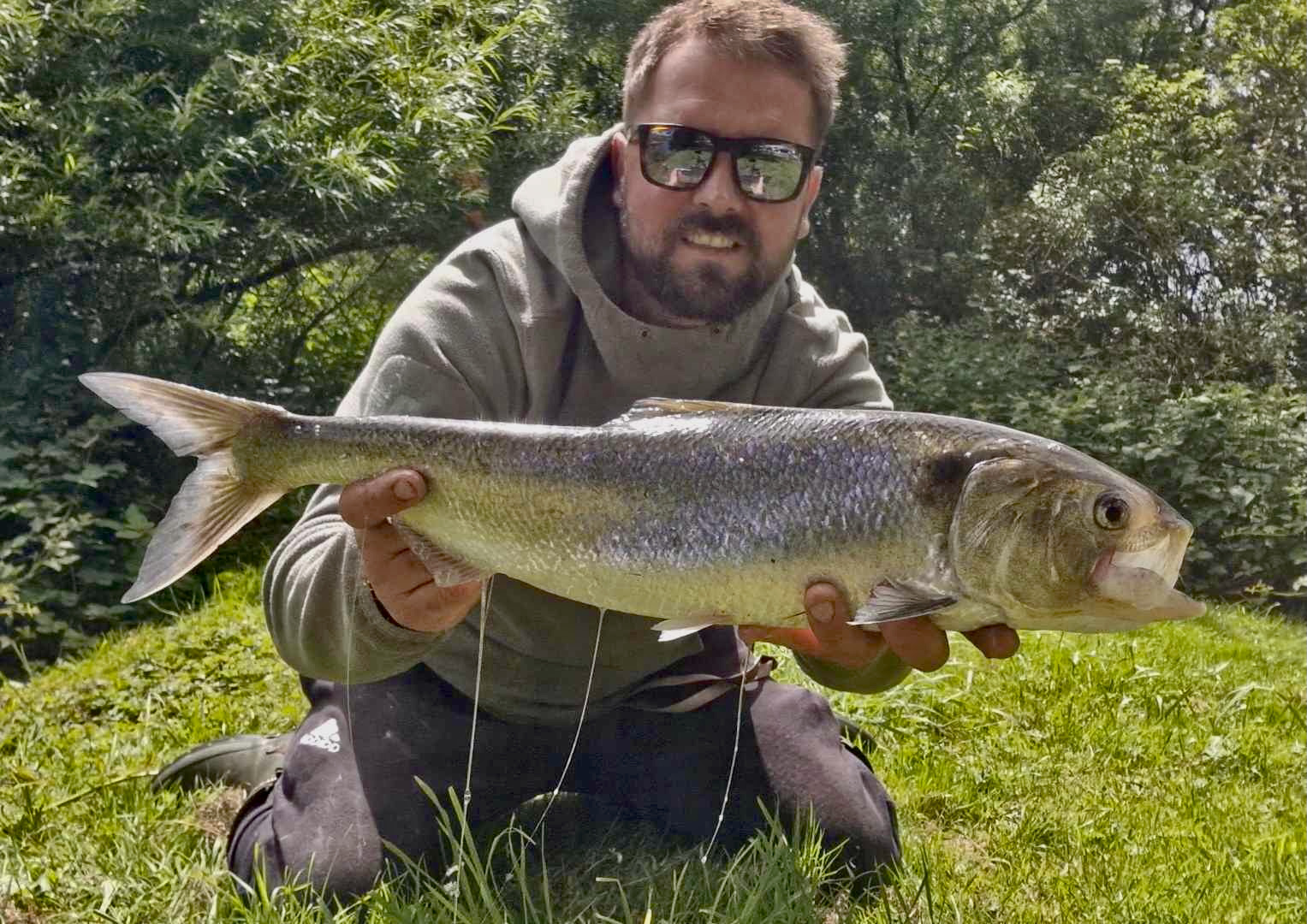
Dan Spearman was spinning for thin lipped mullet and had a shock when a huge allis shad estimated at 5lb seized his baited spinner. The fish gave an exciting account leaping from the water and making several long runs. The fish was landed and carefully returned to the water. The shad is a rare and endangered species and are not to be fished for intentionally. The population appears to be increasing on the Taw with several reported each year by salmon anglers. The species spawn during late spring and early summer.
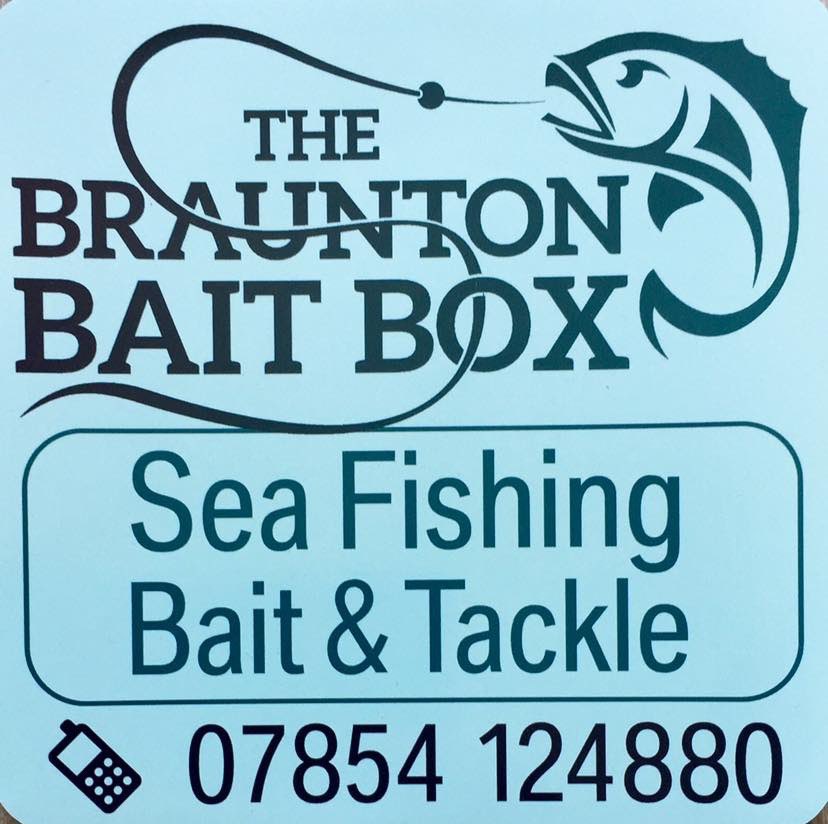
Thin lipped grey mullet are moving into the estuaries of the Taw and Torridge providing exciting sport for anglers using baited spinner tactics. Combe Martin SAC member John Shapland caught a fine specimen thin lip of 4lb 4oz.

Round 2 of the SWLT / FLUFF CHUCKERS Brown Trout Masters at Fernworthy lake on Dartmoor.

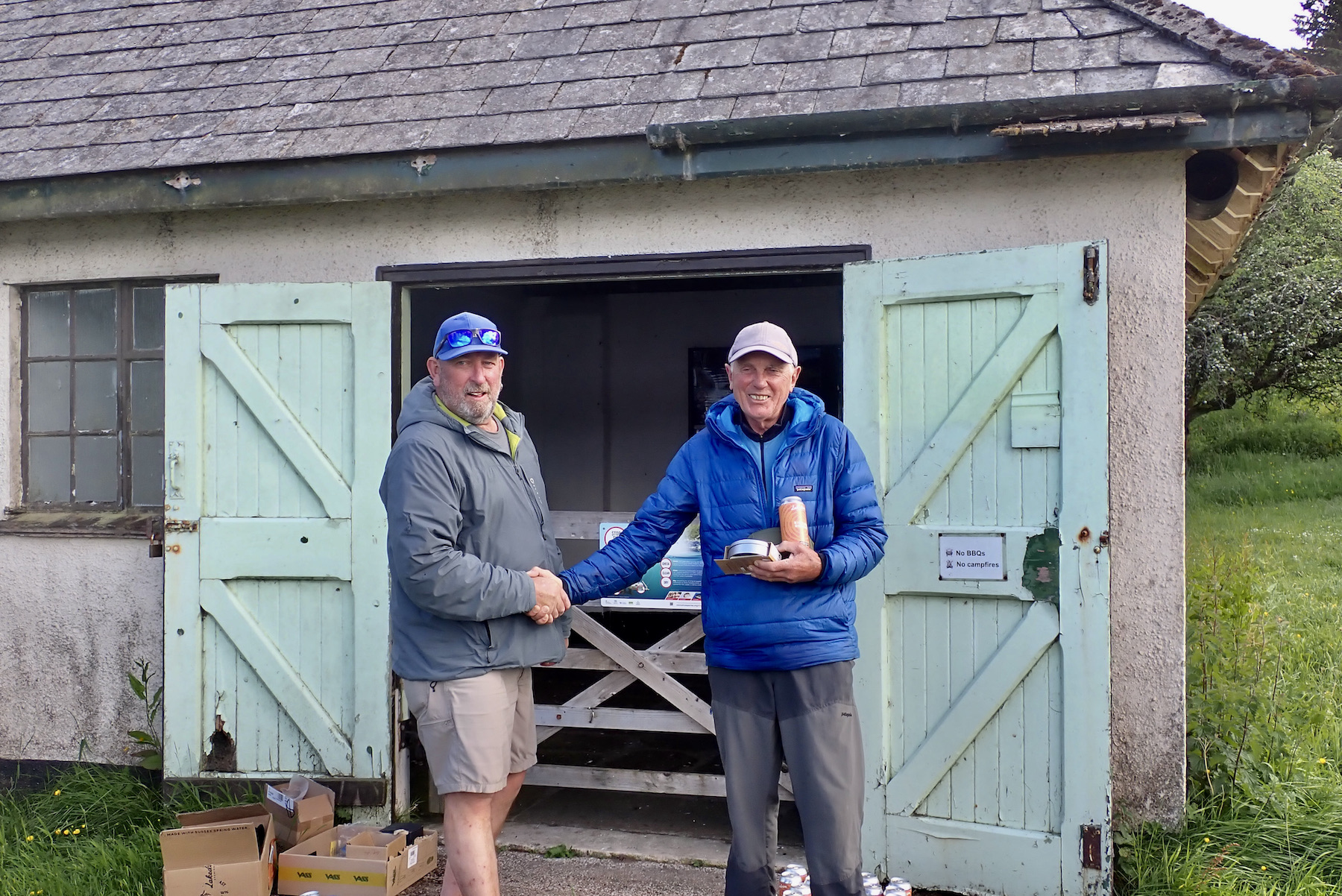
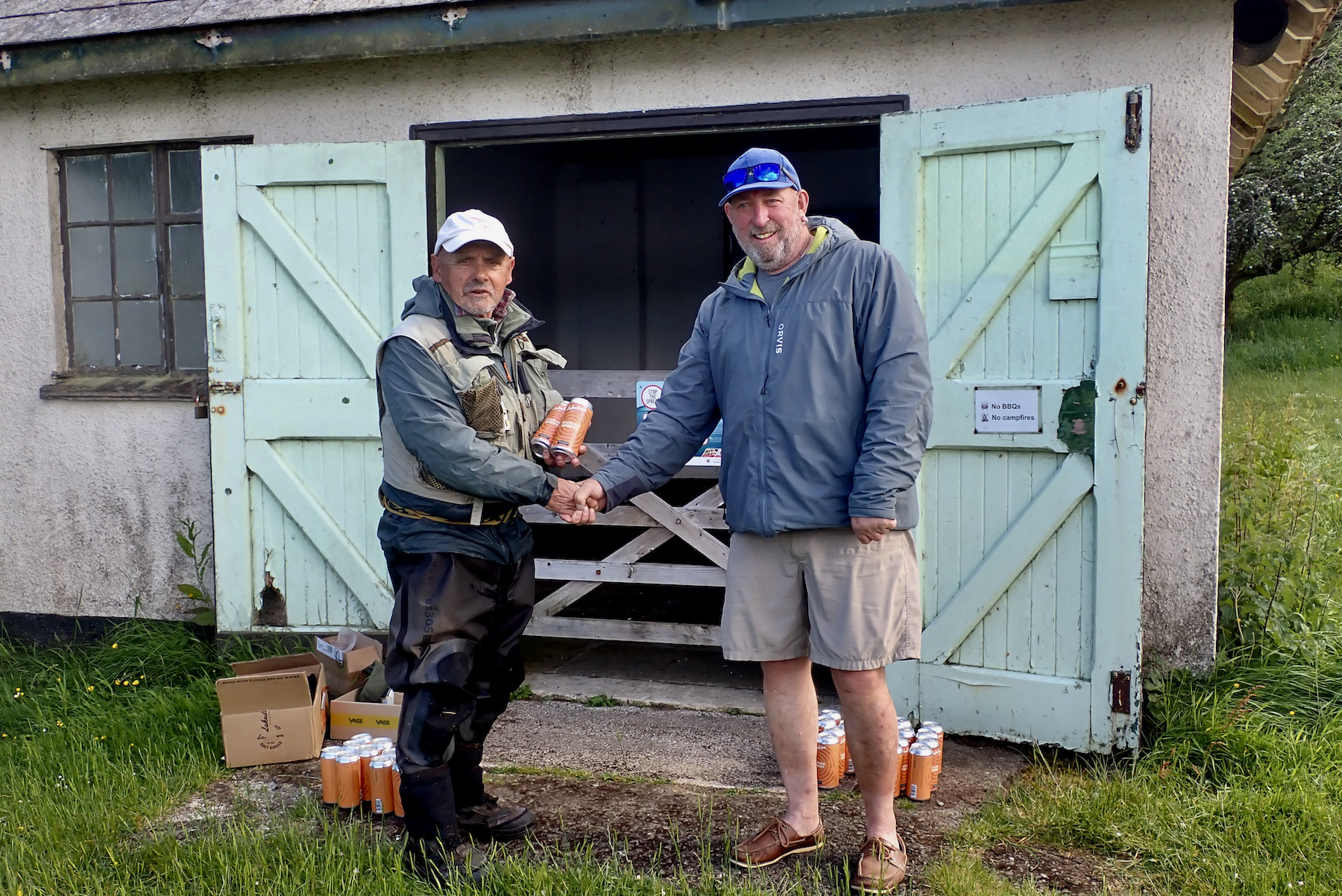
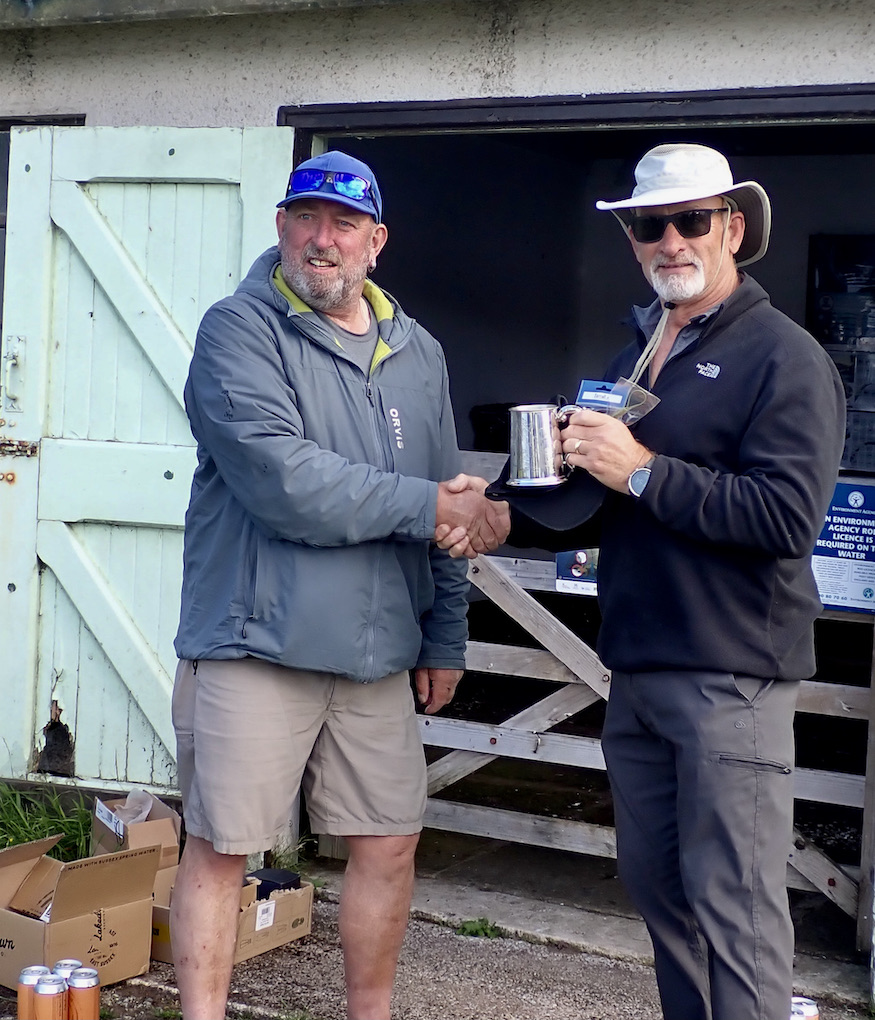
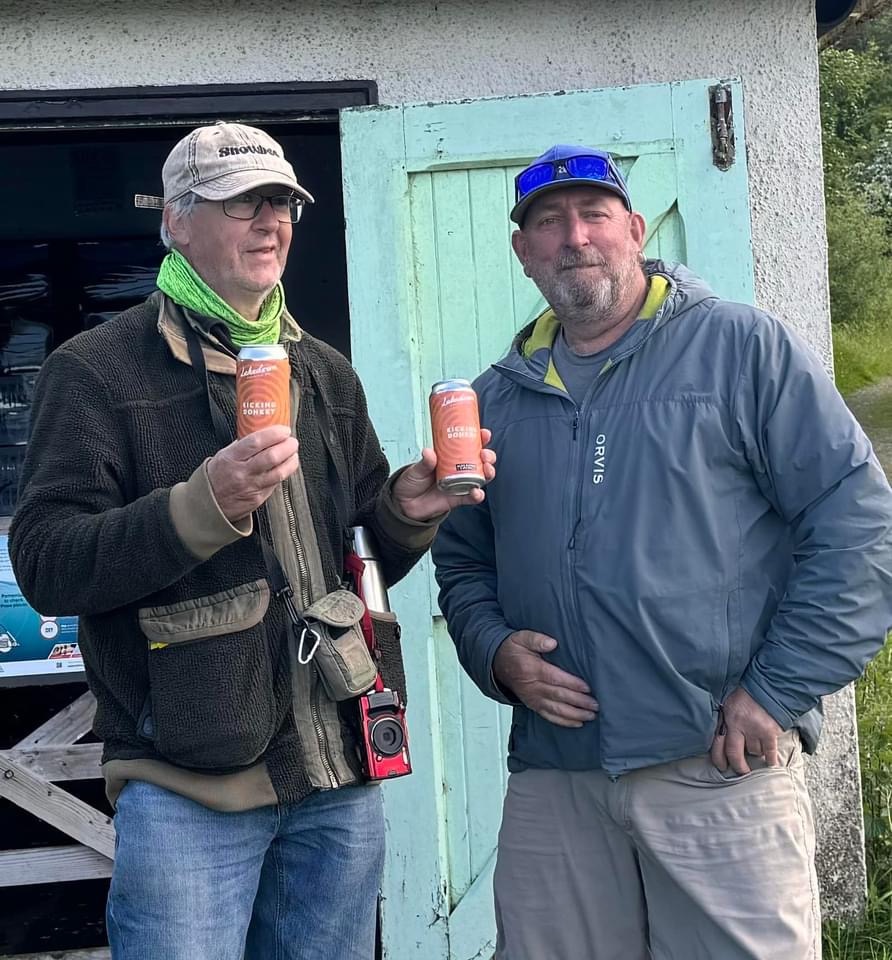
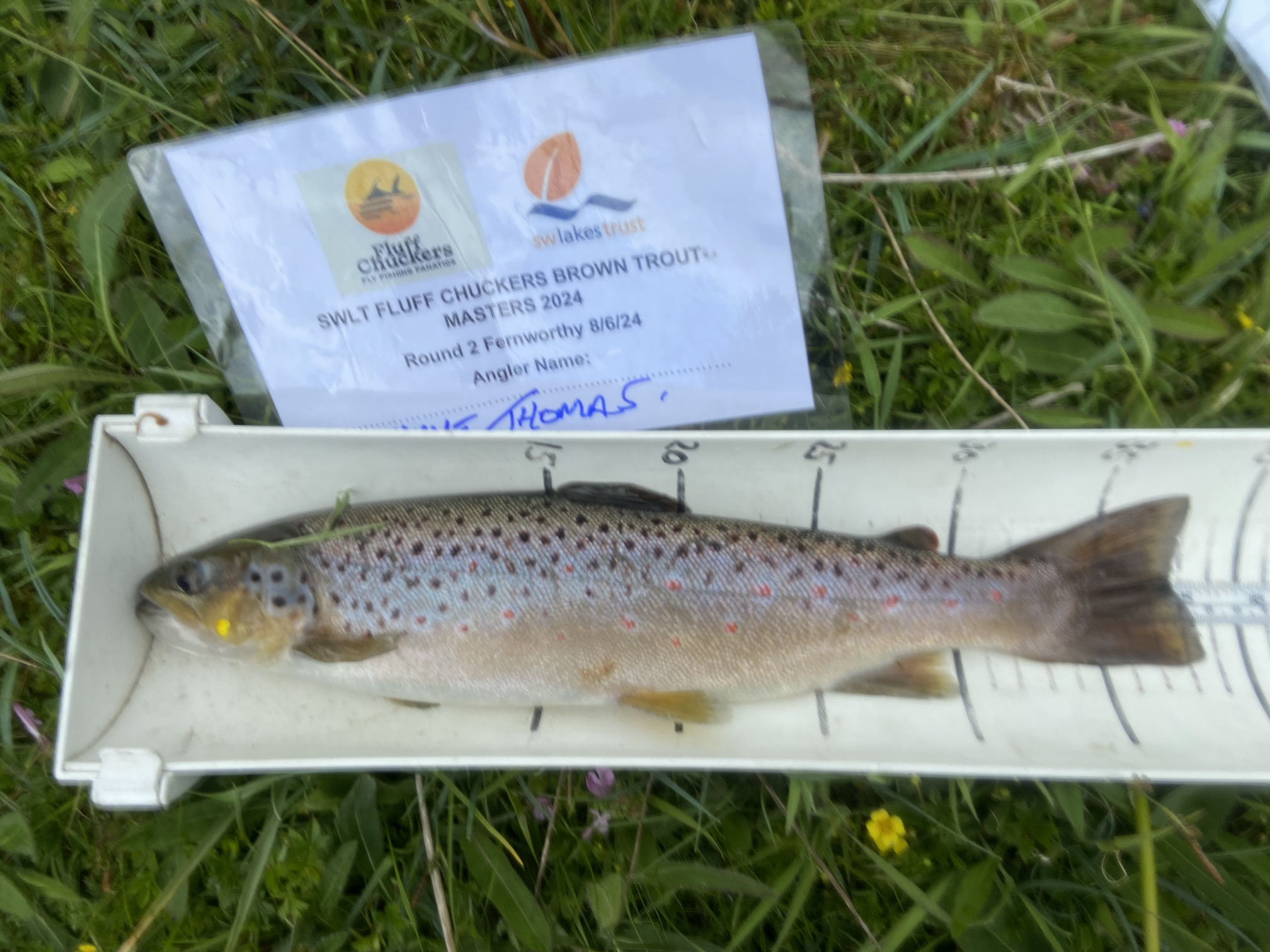
MY OWN REFLECTIONS FROM THE WATERS EDGE
Fernworthy Reservior is situated high on Dartmoor a few miles from Chagford an ancient and fascinating moorland village . I had not fished the reservoir since a distant day as a teenager back in the late 1970’s but I certainly do not intend to wait so long until my next visit.
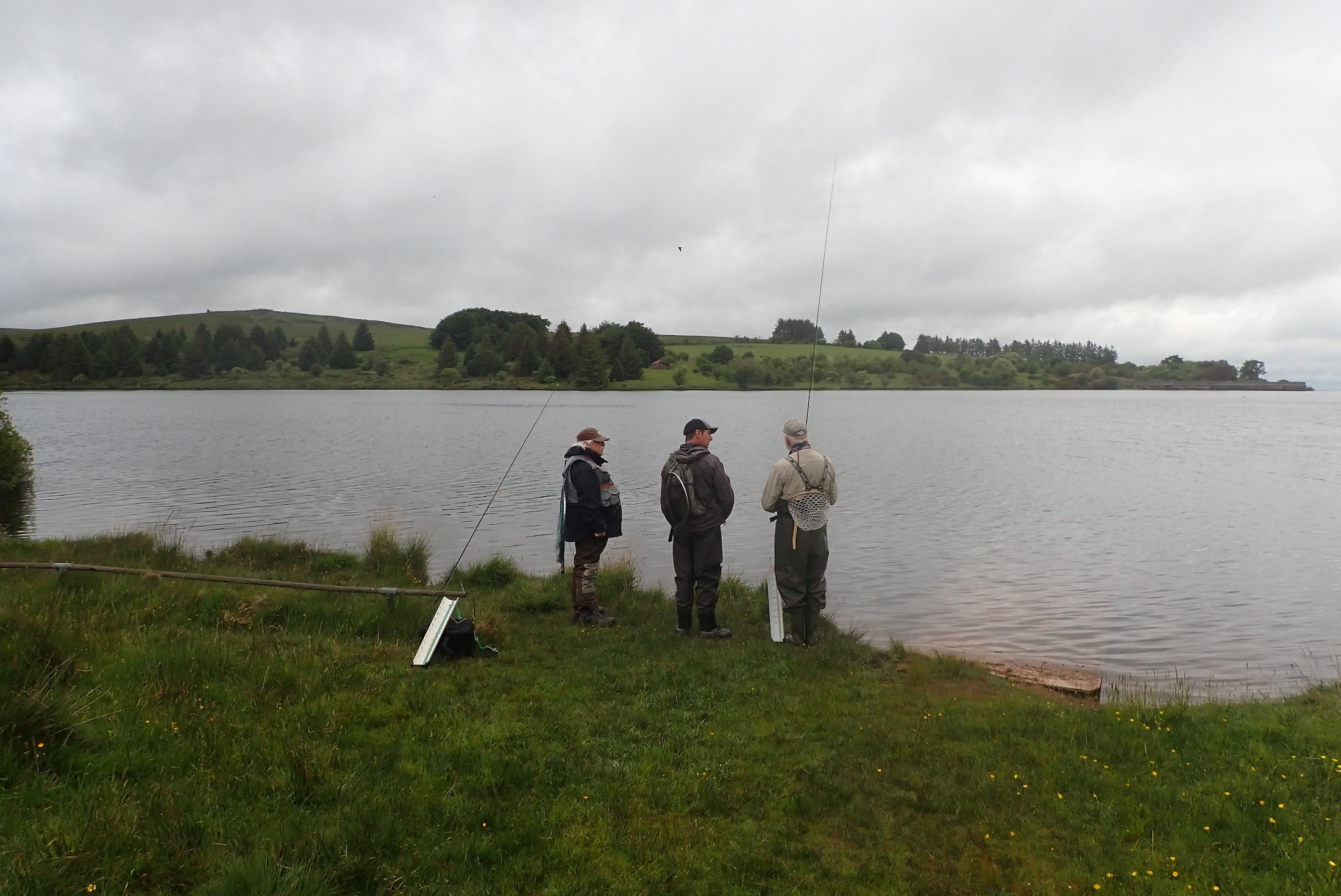
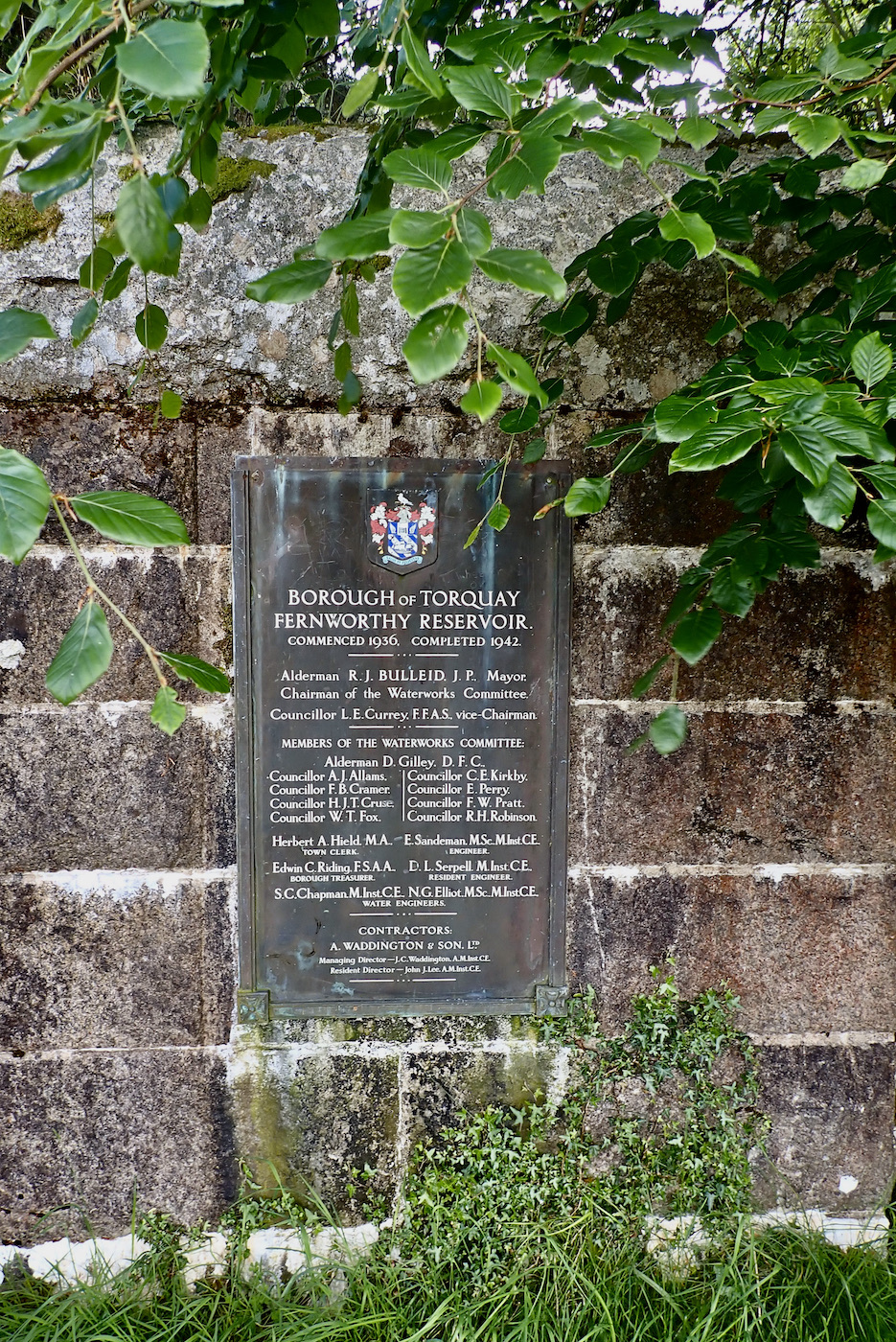
The reservoirs surroundings are steeped in history with ancient stone circles showing glimpses of a fascinating history. The reservior itself was built during the Second World War a time of death and turmoil that seems so far removed from this early summer day. There is a certain reassurance to be gained by spending a day in such a place far from the worries of this troubled world and something that was touched upon as we chatted briefly of war in todays world before the presentation.
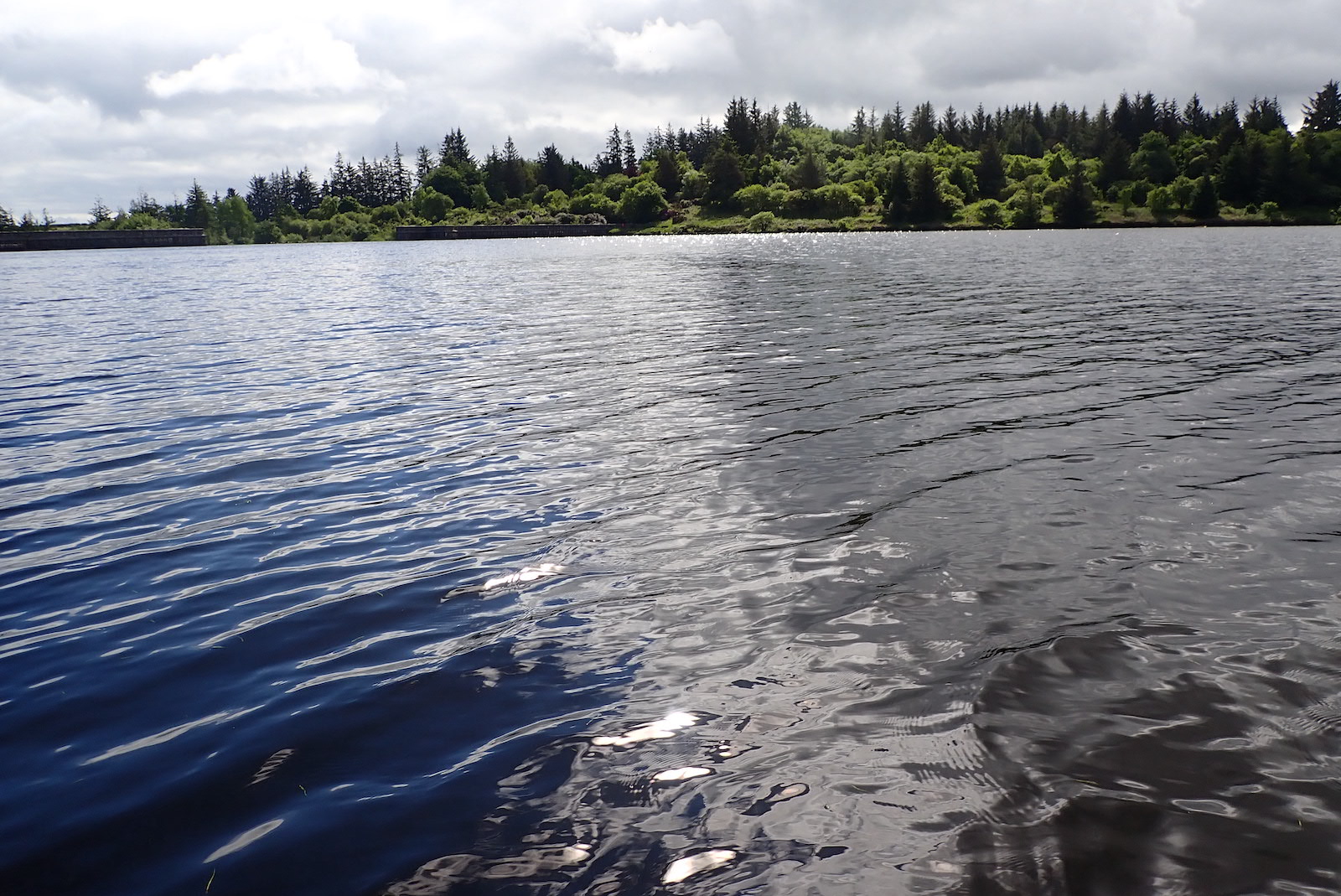
Fernworthy is a brown trout fishery with a good head of wild fish supplemented with regular stockings each season. A brisk cool North West Wind and sunny spells were perhaps not ideal conditions but all competitors caught some lovely trout with some stunning looking fish amongst them. I had a frustrating day hooking nine fish an up Roger Truscott had had a similar experience. The vast majority of the fish were caught using small immitative patterns as is to be expected at a natural catch and release brown trout fishery.
A special thanks to Rodney Wevill for organising the event and gaining the support of the generous sponsors. South West Lakes Trust, Turral Flies and Lakedown Brewing
